

16 Top-Rated Tourist Attractions in Chile
Written by Bryan Dearsley Updated Nov 26, 2021
Boasting one of the planet's most diverse landscapes, Chile has in recent years become an increasingly popular travel destination, particularly among nature lovers and adventure seekers. Here in this long, narrow nation on the west coast of South America, travelers will find an array of stunning sightseeing opportunities, from the tall peaks of the Andes and endless beaches to lush temperate forests, ancient volcanoes, and a dramatic coastline such as that found at Cape Horn .
Chile is also blessed with an abundance of superb national parks and conservation areas , many of them popular destinations for those into trekking and hiking , as well as those who enjoy adventurous things to do such as climbing, river rafting, mountain biking, and horseback riding.
But Chile is not without its cultural attractions, too, with cities such as the capital of Santiago offering many fine museums and art galleries, and stunning Easter Island with its famous stone figures. Whatever your travel preferences, you'll find no shortage of beautiful places to visit and photograph in Chile .
To ensure you see the best points of interest in this amazing South American country, be sure to read our list of the top things to do on Chile.
1. Torres Del Paine National Park
2. valle de la luna and the atacama desert, 3. easter island & rapa nui national park, 4. santiago: chile's cultural capital, 5. the chilean lake district, 6. cape horn, 7. valparaíso, 8. lauca national park, 9. pumalín park, 10. los pingüinos natural monument, 11. the humberstone and santa laura saltpeter works, 12. chiloé island & chiloé national park, 13. valle nevado, 14. mylodon cave natural monument, 15. cochamó valley, 16. vicente pérez rosales national park.
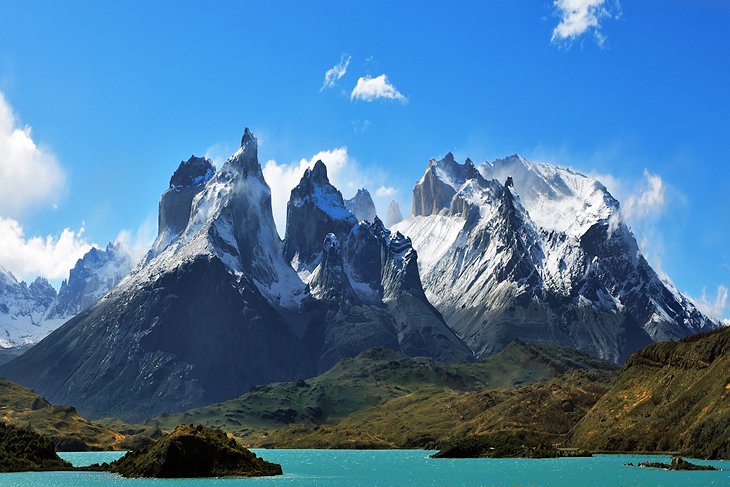
One of Chile's most important natural areas and an increasingly popular travel destination is the spectacular Torres del Paine National Park. Situated more than 100 kilometers north of the city of Puerto Natales in southern Patagonia, this stunningly beautiful area encompasses mountains, glaciers, and countless lakes and rivers.
The most important region of the park is the Cordillera del Paine , an area that marks the transition from the Patagonia steppe to the subpolar forests of the north. Perhaps the most notable of its many wonderful features are the three 2,850-meter-tall granite peaks of the Paine Massif, which dominate this already breathtaking scenery.
Hiking is one of the park's most popular activities, with numerous well-marked trails, many offering overnight shelters (refugios) with the basics needed for longer treks that circle the mountains. If you're planning on anything more than a day's hiking, professional guides are recommended and, in some areas, mandatory.
One of the top guided tours of the park is the five-day W Trek , one of the top hikes in Patagonia . This 71-kilometer route takes in some of the top points of interest in Patagonia, including the massive Glacier Grey and the mountains of Paine Grande.
Address: Magallanes y la Antártica Chilena Region
Official site: www.torresdelpaine.com/ingles/
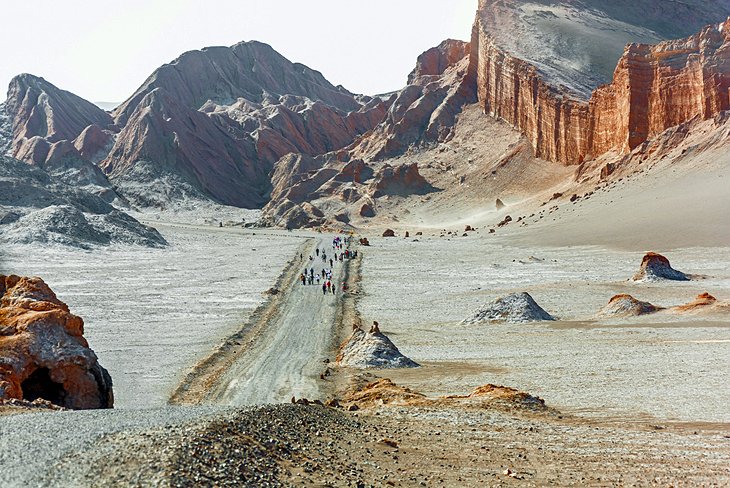
Valle de la Luna, which literally translates as "Valley of the Moon," lies 13 kilometers west of San Pedro de Atacama at the north end of the country, near its border with Bolivia. It can be accessed via well-marked bike trails, tour buses, or self-drive car rentals.
This rugged, inhospitable looking landscape in the heart of the Atacama Desert attracts many visitors for its eerie resemblance to the surface of the moon, an effect caused by the erosion of its sand and stone features by wind and water over countless millennia. Despite its remoteness, though, this surprisingly beautiful landscape has sustained life for centuries, both human as well as that of numerous species of flora and fauna.
Among its most interesting features are its dry lake beds-this is, after all, one of the driest places on the planet-which are dazzlingly white due to deposited salt, and prone to producing fascinating natural saline outcrops.
Other notable features of the Atacama Desert are the region's many caverns, some containing evidence of pictographs created by early man and where some of the world's oldest mummies, preserved by the area's aridity, were found. The most famous of these, the Chinchorro mummies, are now on display at the archaeological museum in San Miguel de Azapa.
Also of interest is the Laguna Cejar sinkhole, famous for its turquoise water.
Address: San Pedro de Atacama, Antofagasta Region
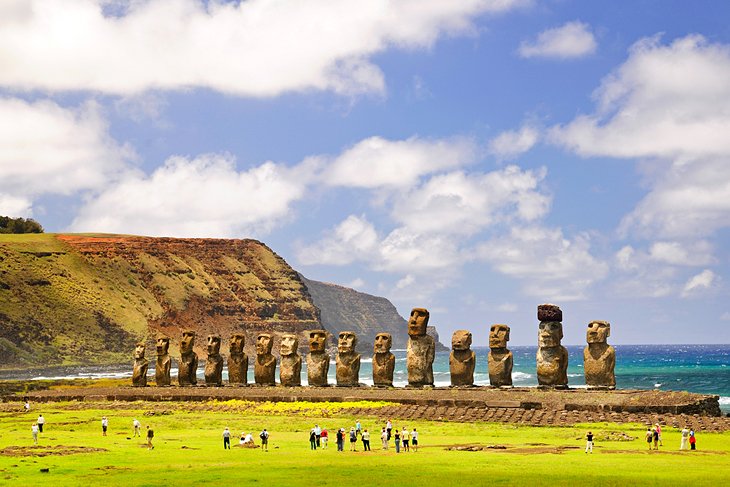
First visited by Europeans in 1722, the magnificent yet remote Easter Island – so named by a Dutch Explorer who first set eyes on it on Easter Sunday – has been inhabited for thousands of years by Polynesians. Despite being more than 3,500 kilometers away from mainland Chile, this fascinating island with its remarkable stone sculptures remains the country's most recognizable attraction.
All told, 887 of these statues, known as Moai – created by the island's early Rapa Nui population – have been identified, most of them now protected by Rapa Nui National Park (the island itself has been declared a UNESCO World Heritage Site). The most impressive collection is at Ahu Tongariki where 15 of them have been re-erected on the island's largest Moai platform, or "ahu."
Rapa Nui is also where you'll find one of the country's best beaches, Anakena . This beautiful yet short stretch of white coral sand is the perfect spot for a break from hiking.
Also of interest are the many "hare paenga" ruins near ahu sites consisting of stones that once formed the foundation of boat-shaped houses. Other highlights include the Father Sebastian Englert Anthropological Museum in Hanga Roa , the island's main community, notable for its exhibits relating to the history of the Polynesian islanders and their traditions.
Hot Tip: Visiting Easter Island is best done as part of a Chilean vacation, with regular flights available from Santiago or Tahiti. Flight times are approximately five hours, so expect to stay at least a couple of days.
Read More: Most Beautiful Islands in the South Pacific
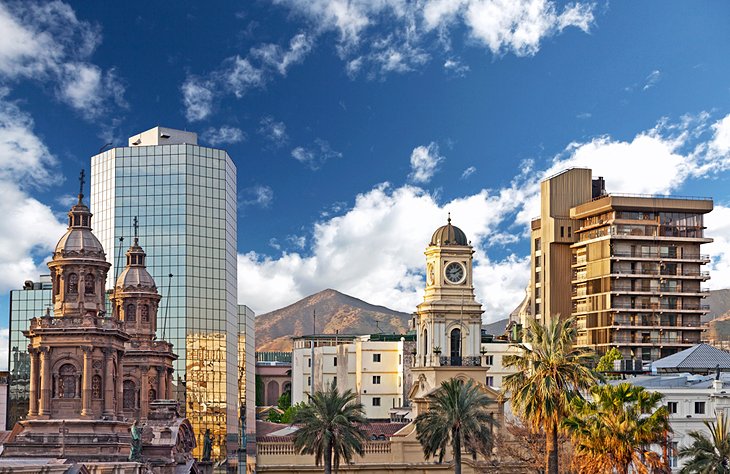
Santiago is not only the financial and business capital of Chile, it also serves as the country's cultural and entertainment center. Consequently, it's home to endless fun things to do, including visiting its best museums and galleries, along with excellent shopping, dining, and hotel options.
Centrally located and the country's main transportation hub, Santiago is where most visitors begin their Chilean travels before heading to the Andes or other areas of outstanding natural beauty, such as Easter Island. The smartest travelers, though, will allow time in their Chile travel itinerary to get to know Santiago.
Founded in 1541 and relatively crowd-free, the city features points of interest such as the Centro Cultural Palacio La Moneda , a state-of-the-art cultural center occupying part of the impressive Palacio de la Moneda, and the Chilean National Museum of Fine Arts (Museo Nacional de Bellas Artes). Established in the 1880s, it focuses on Chilean artists, and boasts a large permanent collection of paintings, sculptures, and photos.
Other must-sees are the excellent Museum of Pre-Columbian Art (Museo Chileno de Arte Precolombino), featuring collections relating to the country's native people, and the Museum of Memory and Human Rights (Museo de la Memoria y los Derechos Humanos). The latter commemorates those who suffered under the Pinochet regime.
A highlight of any visit to Santiago is taking the aerial tramway to San Cristóbal Hill for its stunning views over this most hospitable of cities. There are also some interesting attractions here, including an observatory, a 22-meter-tall statue of the Blessed Virgin Mary, and an amphitheater.
Be sure to also spend time enjoying Santiago Metropolitan Park (Parque Metropolitano de Santiago), a huge urban green space. Here, you'll find a botanical garden, the Chilean National Zoo, and a funicular railway.

Stretching for more than 330 kilometers from Temuco to Puerto Montt and resembling the alpine regions of Europe, the Chilean Lake District (Zona Sur) is well worth exploring. Like its alpine cousin, this beautiful region of the Andean foothills boasts rich farmland at the base of its many snowcapped volcanoes, ringed by thick forests and the kind of deep lakes that water sports enthusiasts drool over.
And the connection to Europe doesn't end here. After the forced resettlement of the region's indigenous people, the Mapuche , farmers from Switzerland, Austria, and Germany arrived, bringing with them aspects of their own culture that can still be seen in the architecture of towns like Osorno and Valdivia, as well as in the region's customs and festivals.
For adventure seekers, a typical Chilean Lake District itinerary includes endless hiking and biking potential, along with other fun activities such as volcano climbing; white water rafting; kayaking; canoeing; horseback riding; and, come winter, skiing. Road trips to the region are also extremely popular.
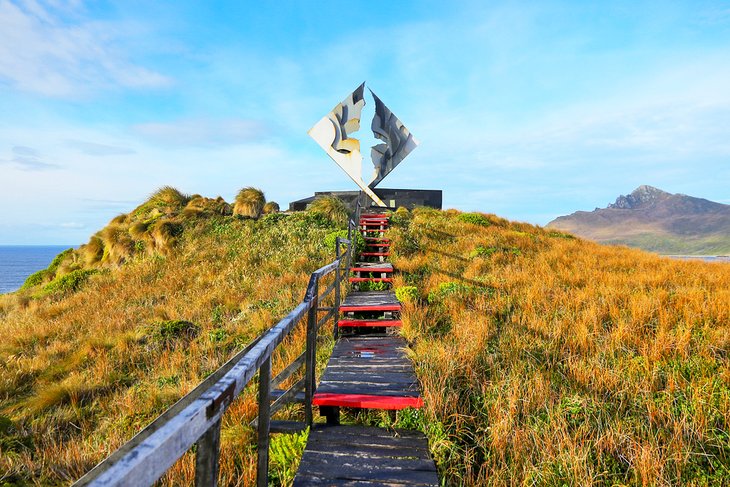
Considered something of a Holy Grail for travelers – and the equivalent of Mount Everest for yachting types – Cape Horn is, if you can get here, well worth the effort, if not the bragging rights.
The last stop before Antarctica and the world's southernmost tip, Cape Horn has for centuries been known as a sailor's graveyard for its remoteness, its hazardous coastline, and the rough seas that prevail here. While less important as a trade route now thanks to the Panama Canal, it has seen an increase in popularity among serious sailing enthusiasts, and features in a number of exciting races.
For the rest of us, it can, with careful planning, still be visited. There are, however, only a few ways to get to Cape Horn (apart from having your own yacht, of course). An increasingly popular option is via helicopter from the Chilean town of Puerto Toro. A day-long adventure, it can be expensive, so you may want to seek travel companions on the adventure. Alternatively, charter sailboats can get you here, but it's a long haul and often rough.
Cruise ships are, perhaps, the best option. A number of cruises in fact pass by Cape Horn on their way to Antarctica and will, weather and seas permitting, stop here for an hour. Passengers disembark via inflatable boats, so this part of the journey can be rough, too.
Once ashore, passengers can make the short cliff-top climb to what is perhaps the ultimate tourist selfie spot: the Cape Horn Memorial Sculpture. This breathtaking monument and its incredible views welcome you to the bottom of the world.
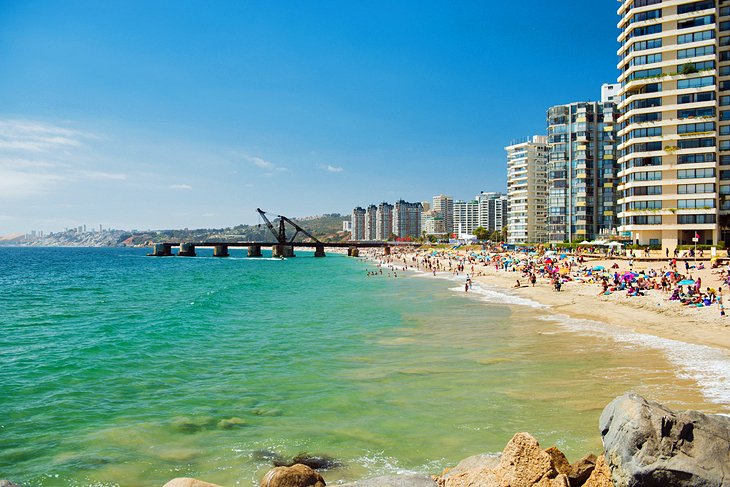
Chile's third largest city, Valparaíso, is nestled between the sea and the coastal mountain range about 112 kilometers northwest of Santiago and makes for an excellent day trip. As popular for its many old cobbled streets and unique architecture as it is for its lovely harbor and beaches, the city offers a great deal of fun things to do.
Many tourist attractions focus on the country's rich maritime heritage, including Lord Cochrane's Museum (Museo Lord Cochrane), located in a lovely old colonial home built in 1842. Another must-visit tourist attraction is the superb Naval and Maritime Museum (Museo Naval Y Maritimo) with its displays dealing with the War of the Pacific of 1879 between Chile and allied Peru and Bolivia, with particular emphasis on the contributions of Chile's war heroes.
A related attraction is the Ironclad Huáscar located in the Port of Talcahuano , some 600 kilometers south of Santiago. Talcahuano's beautiful harbor – home to Chile's navy – is the base for this immaculately restored historic vessel built in 1865 in Britain and one of the only surviving such battleships of her kind.
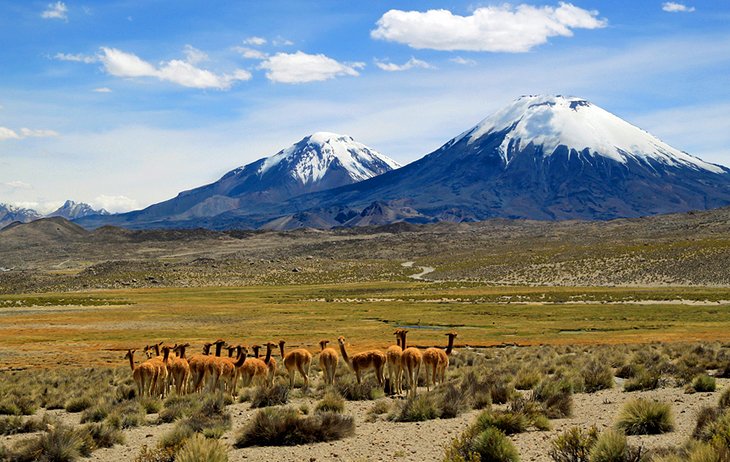
Located in the far north of Chile, just 140 kilometers east of the city of Arica, Lauca National Park (Parque Nacional Lauca) covers an area of 1,300 square kilometers and consists largely of high plains and mountain ranges, many of the latter comprised of large volcanoes.
Highlights include hiking around its many pristine mountain lakes, most notably Cotacotani and Chungara, which reflect the scenery around them to stunning effect. The park also features a number of important archaeological sites, as well as evidence of the early European settlers who left their mark in the region's many fine old colonial churches and buildings.
It's also especially popular for bird-watchers and is home to more than 140 species, including Andean geese, crested ducks, Chilean flamingos, and the massive Andean condor. Another beautiful area popular with nature lovers is Conguillío National Park (Parque Nacional Conguillío), also in the Araucanía Region of the Andes.
Address: Putre, Arica y Parinacota Region
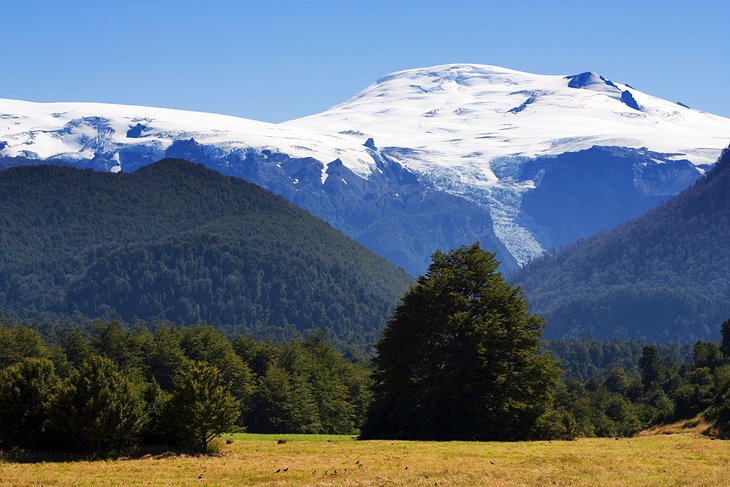
Although only established as a nature sanctuary in 2005, Pumalín Park has become one of Chile's most important and popular conservation areas. Covering a vast area of more than 988,000 acres stretching from the Andes to the Pacific, the area boasts some of the country's most pristine coastline and forests and is notable for being almost entirely untouched by human development.
In addition to protecting the area's rich flora and fauna, including the Alerce, the world's oldest tree species, the park is easily accessible to visitors and provides one of the country's best wilderness experiences. It's owned and operated by the US-based Conservation Land Trust.
Thanks to its extensive network of trails, campgrounds, and visitor facilities, Pumalín Park is a delight to explore, whether for a short nature hike or as part of a longer ecotourism adventure. These often include a stay at rustic cabin-style accommodations overlooking one of the world's most beautiful, unspoiled backdrops.
Address: Sector Río Amarillo S/N Chaitén, Chaiten, Chaitén, Región de los Lagos
Official site: www.parquepumalin.cl/en/index.htm
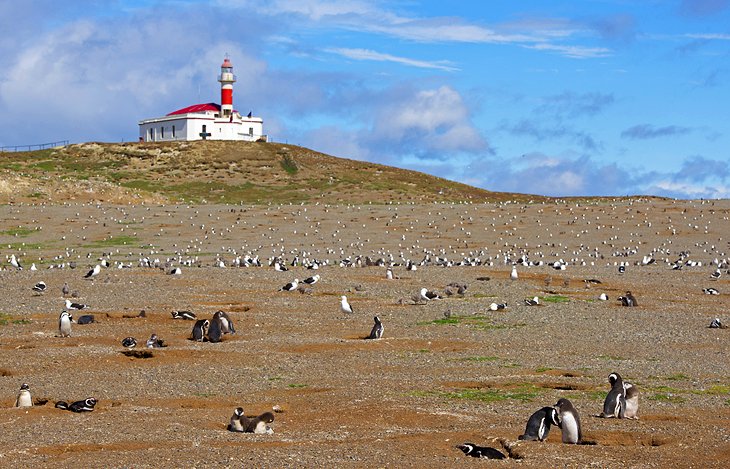
In addition to its national parks, more of Chile's important conservation efforts can be seen in its many natural monuments. One of the most popular is Los Pingüinos Natural Monument (Monumento natural Los Pingüinos), just 35 kilometers northeast of the city of Punta Arenas at the southern tip of the island and incorporating the beautiful Magdalena and Marta Islands .
As its name suggests (pingüinos is Spanish for penguins), the monument is home to one of Chile's largest penguin colonies, consisting of some 60,000 breeding pairs of Magellanic penguins. Accessible only by guided boat tours, the islands are also home to large colonies of seals and sea lions.
Another of Chile's important natural monuments is El Morado , an easy drive from Santiago and site of the San Francisco Glacier and the 4,674-meter-tall Cerro El Morado mountain.
Address: Punta Arenas, Magallanes y la Antártica Chilena Region
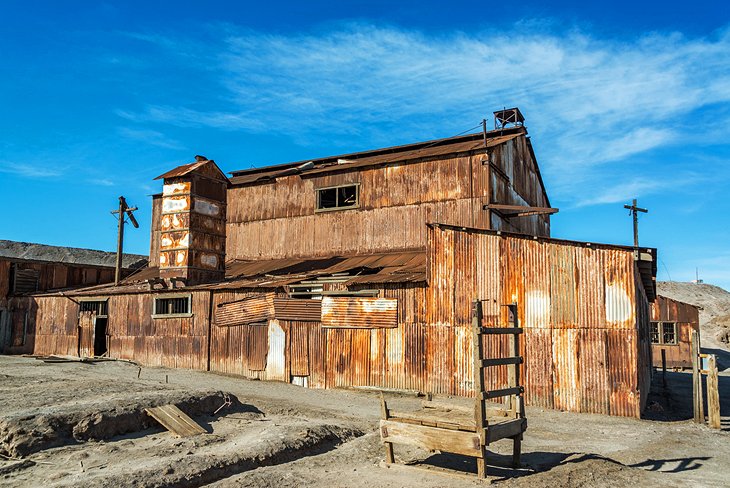
Situated near the northern port city of Iquique in the remote Pampa Desert and declared a UNESCO World Heritage Site in 2005, this fascinating ghost town was once home to a bustling community.
For more than 60 years from about 1880, thousands of Chilean, Bolivian, and Peruvian workers toiled in the Humberstone and Santa Laura Saltpeter Works (Salitreras Humberstone y Santa Laura), a hostile environment that included some 200 saltpeter mines. In the process, these workers formed a distinct culture and way of life that has been preserved here.
Although derelict since 1960, the site offers a fascinating glimpse into the tough conditions faced by these "pampinos," with many of the site's larger structures still standing and able to be explored. Professional guides are recommended given the area's remoteness and harsh climate.
Address: km 47 A-16, Pozo Almonte, Región de Tarapacá
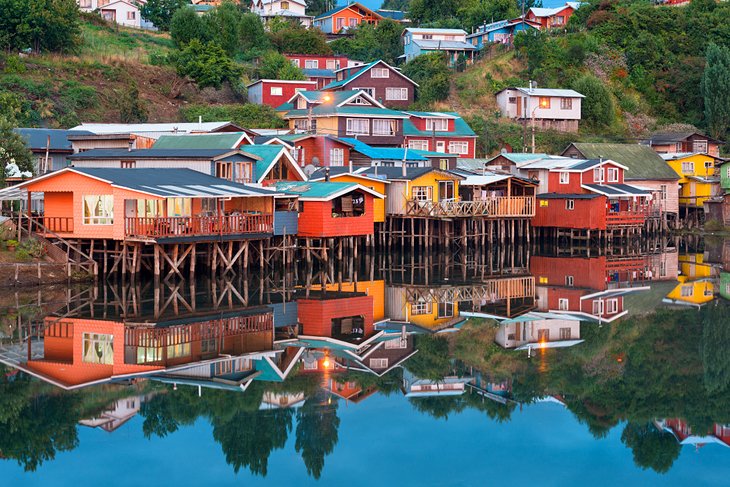
Situated on Chiloé Island, the country's second largest island, Chiloé National Park is well worth adding to your travel itinerary. While not as rugged as the majority of the country's most striking scenery, Chiloé Island is nevertheless quite unique.
In places, it looks not unlike the kind of rural topography you'd expect to find in parts of Europe – Germany immediately springs to mind – and it's a delight to explore.
In addition to the island's numerous old iconic wooden churches, remnants of the communities established by Jesuit missionaries who settled here in the 1600s, you'll see plenty of attractive, colorful old homes. Known as "palafitos," they snuggle along the shoreline in places and are raised out of the water on stilts. Many of the island's old churches, too, are painted brightly and should be visited.
Chiloé National Park itself has become increasingly popular among tourists in recent years. A highlight of a visit to this area of outstanding natural beauty is the chance to observe wildlife as diverse as blue whales and dolphins (sightseeing excursions are available), and the large penguin breeding grounds on the nearby Islotes de Puñihuil Natural Monument . Available adventures include sea kayaking, hiking, and eco-tourism.
Address: Los Lagos Region
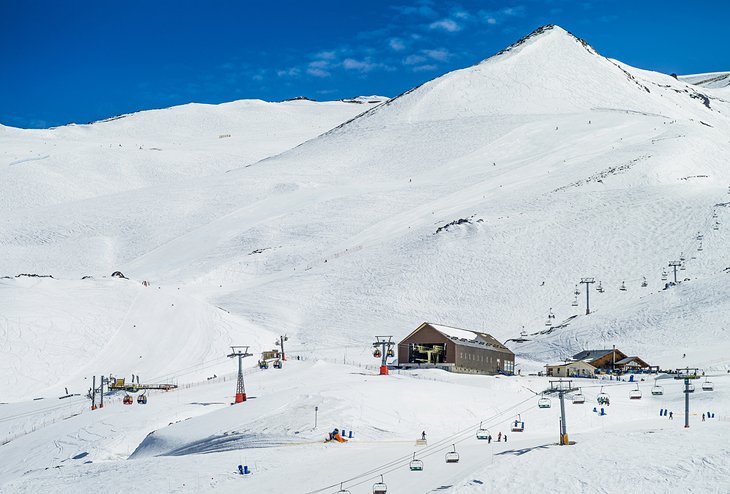
Once a well-kept secret, the fact that Chile is home to some of the world's best skiing is now common knowledge among skiers. By far the most popular ski area in South America, the Valle Nevado (Snowy Valley) resort region in the El Plomo foothills of the Andes is well-served by public transit from the country's capital of Santiago, located just 46 kilometers west of the slopes. Established in 1988, the ski resort covers a vast area and has grown rapidly in the time since.
Boasting mostly clear skies and great snow thanks to its high elevation 3,000 meters above sea level. It's skiable 112 days a year, and the resort features 37 trails and 11 lifts. It's as popular with beginner families as it is with seasoned skiers and snowboarders.
In addition to its three hotels, a variety of rental chalets and condos are available, suitable for short and long stays, and the resort also features eight restaurants. A snow school is located on-site, along with a ski shop and a tour company featuring heli-skiing adventures. Other notable Chilean ski resorts close to Santiago include La Parva and El Colorado .
Address: Avenida Vitacura 5250 of. 304, Vitacura, Región Metropolitana
Official site: https://vallenevado.com/en/
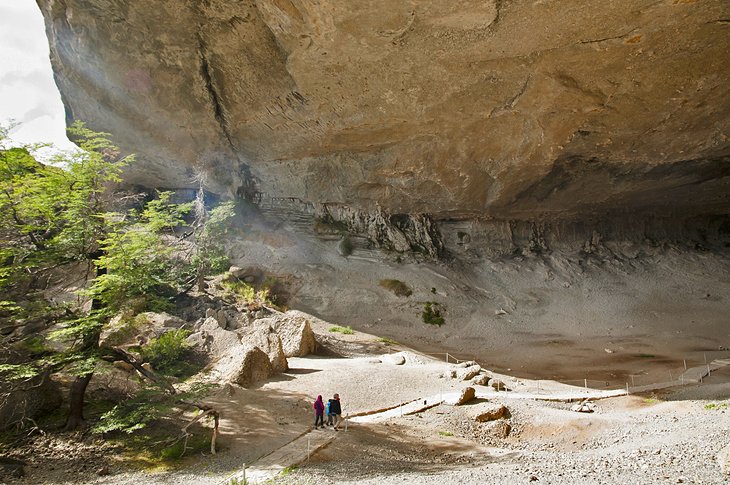
As popular with sightseers as it is with nature lovers, the Mylodon Cave Natural Monument (El Monumento Natural Cueva del Milodón) is situated in the heart of the Patagonia area of Chile a short distance from Puerto Natales.
Highlights of this fascinating natural wonder – part of the popular End of the World scenic drive – include a number of easy-to-access caves set around a formidable rock formation known as the Devil's Chair ( Silla del Diablo ).
The main cave, known as the Milodón Cave , was where, in 1895, the well-preserved remains of a prehistoric Mylodon were discovered (a tall statue of this long-extinct creature marks the spot where the discovery was made), along with remnants of other ancient animals and even human bones.
This impressive cave is some 200 meters deep, and it's fun to explore. If you've got time, take the marked trail that leads to the top of the cave, where you'll enjoy spectacular views over the nearby Eberhard fjord.
Other fun things to do include exploring the park's many other hiking trails, which include a number of raised sections at tree height that are fun to walk.
Address: Y-290 8, Natales, Región de Magallanes y de la Antártica Chilena
Official site: http://cuevadelmilodon.cl/en/index.php
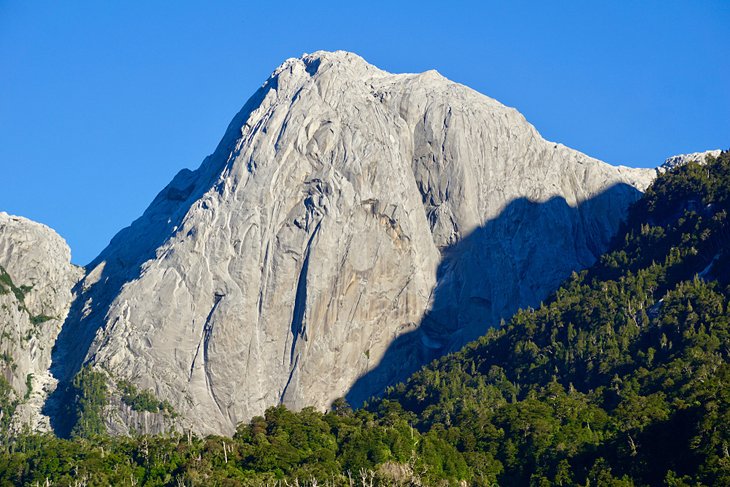
Known as the "Yosemite of Chile," the beautiful Cochamó Valley region of Chile is a delightful area to explore. Situated in the Los Lagos region of the Andes and named after the Cochamó river, it's a region that, like Yosemite, has become extremely popular among hikers and rock climbers, the latter drawn here for the chance to tackle its many 1,000-meter-plus granite walls.
Hikers, for their part, can choose from a variety of trails of varying degrees of difficulty, most of them taking you directly to popular sightseeing spots. These include the many beautiful waterfalls that dot the region.
You'll definitely want to tackle the 10-kilometer-long "Cowboy Trail," so named for its 100-plus-year history as a cattle trail (it was also used by the infamous bank robbers, Butch Cassidy and the Sundance Kid, after fleeing the US). This fun six-hour hike starts in the village of Cochamó and leads to La Junta, a rocky outpost with a number of campsites should you wish to bed down for the night.
In addition to the varied flora and fauna here, people are also drawn for the great fly fishing.
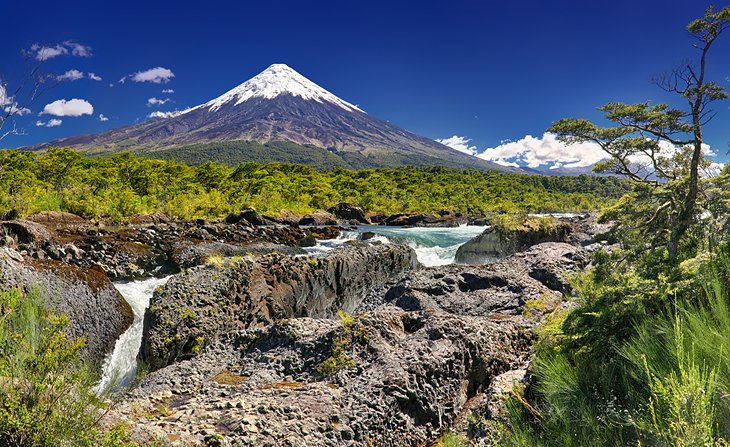
Established in 1926 and the first of the country's now numerous national parks, Vicente Pérez Rosales National Park (Parque Nacional Vicente Pérez Rosales) is located in the heart of the Chilean Lake District, and provides the perfect excuse to at least get a taster of this beautiful region.
Easily accessible from the city of Puerto Montt , the big tourist attraction here is the spectacular Petrohué Falls (Saltos del Petrohué). Here, the fast flowing Petrohué River plummets down a volcanic rock chute to Todos los Santos Lake, an especially impressive sight during the rainy season. After descending the falls and rapids, the water settles in the crystal clear lake, a popular fishing and bird-watching spot.
The area is also known for its diverse wildlife, including deer and pumas, as well as its thermal springs. Add to this picture-perfect location a backdrop of snowcapped volcanos, and you've got the perfect selfie spot to snap that memento of your vacation in Chile.
Address: Puerto Varas, Los Lagos Region

More on Chile
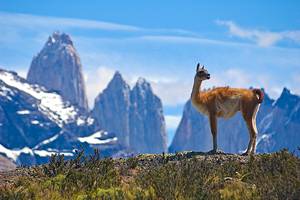
Best Time to Visit
Weather & Climate
Airports in Chile
Best Santiago Hotels
One-Week Itinerary for Chile
Best Places to Visit in Chile
Beach Destinations
Top National Parks
Guide to Chilean Patagonia
Guide to Valparaiso
Guide to Vina del Mar
Best Wineries in Chile
Things to Do in Chile
Things to Do in Santiago
Must-Try Food
Your Trip to Chile: The Complete Guide
South America’s skinniest country spans a volcano-fringed desert, fertile wine valleys, pristine fjords, and glacier stippled mountain ranges making it the ultimate destination for adventure travelers. This guide to Chile is a one-stop-shop for planning, covering everything from must-see places, tantalizing local cuisine, and money-saving tips to help you squeeze the most out of your trip.
Planning Your Trip
- Best Time to Visit: Most trips are timed to make the most of fine weather in Patagonia in the south, with the austral spring, summer, and early autumn (October through April) good months for clear, warm days.
- Language: Chileans speak Spanish but thanks to their penchant for slang and dropping constants at the end of words, bringing a phrasebook is recommended even for advanced Spanish speakers. Most tourist-fronting businesses have good English, as do younger Chileans residing in Santiago.
- Currency: The Chilean peso ($ CLP) is the official currency of Chile.
- Getting Around: Chile has an extensive infrastructure of increasingly low-cost flights that connect most cities across the country and, if booked in advance, are often significantly cheaper than buses. However, most inter-city flights are indirect and pass through the capital, so expect to spend plenty of time in Santiago’s domestic terminal. For local travel, affordable and comfortable bus services cater to short and overnight journeys, while Santiago’s excellent Metro/subway system is an easy and cheap means of exploring the capital. Hiring a rental car is an excellent option in Chile, particularly for exploring Patagonia.
- Travel Tip: Chile is a vast country packed with far more than you can see in a short period of time. We know it’s tempting to cram a whole month’s worth of activities into a far shorter time period, but we strongly recommend stripping your trip down to just a small number of destinations. You’ll spend far fewer hours on flights or overnight buses and come away wowed by the deep and unforgettable moments you’ve had the time and space to experience.
Things to Do
Chile’s remarkable diversity of landscapes and culture means you’re guaranteed to find plenty to fill an action-packed vacation. The north is home to the Atacama Desert, with its world-class stargazing and otherworldly landscapes; Santiago brims with fine museums, trendy new restaurants, and a burgeoning street art scene; the Central Valley is a place of rolling vineyards and classy boutique hotels; while the Lakes region is volcano country, where the intrepid can summit a fiery giant. In the far south, Patagonia is a place of pristine national parks and outdoor adventure, while west across the Pacific brings you to Rapa Nui (Easter Island), a UNESCO World Heritage site dotted with statues of long-lost ancestors.
On a first trip to Chile, don’t miss the following:
- Spend a day exploring coastal Valparaíso ’s tumbling, street art daubed hills, dining on freshly-caught fish in its trendy eateries, and learning about the life and loves of the much-adored Chilean Nobel Prize-winning poet, Pablo Neruda.
- Strap on your hiking boots and discover Patagonia’s most striking wildernesses in Torres del Paine National Park . Clamber up to glassy lagoons or paddle a kayak across icy waters filled with bobbing icebergs to admire vast glaciers. Head out by boat to visit chattering Magellanic penguin colonies or learn how to be a cowboy at a sheep ranch before dining on local specialties of spit-roasted lamb and king crab.
- To appreciate a completely different side to Chile, take the six-hour flight across the Pacific to Rapa Nui—a Polynesian island home to almost 900 moai (stone statues) —to tour these sacred sites, dive into warm, crystalline waters, and sample tuna ceviche.
Get more inspiration with our guide to the top destinations to visit in Chile , the best things to do in Chile , and the best things to do in Santiago .
What to Eat and Drink
Chile might not be known for its dining scene, but prepare to be surprised. This is a country with a tradition of asado (barbecue) and expertly-cooked seafood, while growing indigenous culinary influences promise truly inventive flavors.
Santiago is a hub of increasingly fine dining, with a handful of restaurants that showcase unusual Chilean ingredients now on the world’s best restaurant lists. But it’s not all fancy: traditional markets and no-frills food trucks in the capital are great places for classic Chilean meat and fish stews and savory empanadas. In the south, Chiloé Island is proud of its traditional seafood dishes including curanto (a seafood stew cooked underground), while Patagonia lays claim to juicy lamb roasted for hours over an open fire.
Chile is home to two main alcoholic drinks: wine and pisco. A large proportion of the Central Valley is stippled with vineyards, with Colchagua and Casablanca the most sought after, for their red carménère and white sauvignon blancs respectively, and both offering tours, tastings, and even top dollar dining. Further north in the Elqui Valley, moscatel grapes are fermented to become the grape brandy, pisco, which is best sampled in the zingy cocktail, pisco sour, which any self-respecting bar across the country can whip up.
Learn more about what to eat with our list of must-try Chilean foods .
Where to Stay
Chilean accommodations run the whole gamut of basic campsites to exclusive five-star hotels, with plenty of family-run B&Bs, boutique hotels, and rental cabins in between.
Santiago is home to a wealth of affordable B&Bs and small hotels located right in the heart of the tourist districts of Lastarria, Bellavista, and Italia, granting quick access to the metro, as well as excellent restaurants, bars, and shops on your doorsteps. In more rural parts and in national parks across the country you'll find increasingly stylish chalet-style cabins. They are a hallmark of Chile and a great option for self-catering, with many built to include hot tubs. In Chiloé, you’ll want to stay in an oceanside palafito (a traditional fisherman’s dwelling on stilts) for the best sea views.
In the south, long-distance treks through isolated national parks mean lodgings in campsites or hostel-style accommodation, although many parks are now home to at least one five-star hotel, generally tucked deep into the wilderness and offering outstanding, lavish accommodation. In more remote parts of Patagonia, sheep and cattle ranches, many of which are still operational, also provide comfortable, sometimes rustic lodgings—all with the opportunity to enjoy a traditional Patagonian barbecue feast.
Getting There
Santiago’s one international airport, Comodoro Arturo Merino Benítez, is the hub for all flights into the country with a record-setting 24.6 million people passing through the airport in 2019. Most U.S. airports have connections with Santiago, with many offering direct flights in the summer months. These include American Airlines, Delta, and United Airlines.
If flying from within South America, budget companies including Sky Airlines and Jet Smart, as well as regional mainstay LATAM, provide the most frequent connections from hubs such as Lima in Peru and Buenos Aires in Argentina.
Rickety buses also provide an overland connection to Chile from Peru, Bolivia, and Argentina, although adventure cruise ships from Ushuaia to Punta Arenas in Patagonia in the south are a far more daring means of crossing the border.
For domestic travel, aim for budget carriers Jet Smart and Sky Airlines where possible and plan to book at least a few months in advance for the cheapest fares. If you do, you’ll often find that three-hour flights between cities are the same price, if not cheaper, than 12-hour bus journeys.
Culture and Customs
- Chileans greet family, friends, and visitors alike with a kiss on the right cheek (for women greeting women and men greeting women) or a brief one-arm hug (for men greeting men).
- Much the same as other South American countries, punctuality is not a national strength, and Chileans are known for arriving to social occasions late—although most tour operators and all transport companies pride themselves on their punctuality, so be sure to arrive on time for paid excursions or risk being left behind.
- In restaurants, a 10 percent tip is added to your bill though you’re under no obligation to pay it if the service doesn’t meet your expectations.
- Uber and other ridesharing apps are illegal but widely used in Chile with 85,000 Uber drivers across the country in 2019. Despite the technical illegality, rideshares are a convenient means of getting around and avoiding being scammed by yellow taxi cabs (an unfortunately common occurrence in the capital). Avoid using an Uber from Santiago’s airport to the city, however; police regularly impound Ubers operating here, so you’re better off arranging an official airport shuttle instead.
Money-Saving Tips
- In popular destinations such as Rapa Nui (Easter Island) and Patagonia, prices rise considerably in January and February, so avoid these months for a chance to secure cheaper deals on airfare, hotels, and tours.
- Santiago’s excellent Metro is the fastest and cheapest means of exploring the capital - just keep a close eye on your belongings as pickpockets do operate here.
- Book domestic flights at least a few months in advance to secure the best deals. This is particularly the case for Rapa Nui (Easter Island), where prices can triple closer to the departure date.
- If traveling to Patagonia, take plenty of US dollars with you. Paying in this currency at hotels and tour agencies can save you up to 10 percent off the advertised price.
- Bringing US dollars to switch at exchange houses will also save plenty of cash as ATMs can charge up to US$10 per withdrawal, and these can often be capped at a maximum of US$150 each.
- Request small bills where possible when receiving change. Most national parks accept cash only and may refuse to change large, 20,000 peso notes. If hiring a car, you’ll also want small bills for toll booths on the highways.
Chile Travel. " Currency. "
History.com. " Easter Island ." February 28, 2020.
Arturo Merino Benítez Airport. " Santiago Airport Projects Passenger Traffic to Drop From 24.6 Million to 9 Million by 2020. " September 8, 2020.
Reuters. "Chilean Bank Ordered to Open Uber's Accounts to Taxman." October 15, 2019.
A Guide to Airports in Chile
One Week in Chile: The Ultimate Itinerary
Weather in Chile: Climate, Seasons, and Average Monthly Temperature
The Best Time to Visit Chile
Your Trip to Argentina: The Complete Guide
Best Snow Sports in South America
The 20 Best Things to Do in Chile
The Best Countries in the World for Adventurous Travelers
Your Trip to Ireland: The Complete Guide
Complete Guide to the Great Barrier Reef
Road Trip Ideas Through South America
The Complete Guide to Chilean Patagonia
Top 15 Destinations in Chile
Where to Go in 2021: 10 Future Trips You Can Start Planning Now
Your Trip to San Diego: The Complete Guide
Top 10 South America Travel Destinations

Chile Travel Guide
Looking for an in-depth Chile travel guide ?
Then you’re in the right place!
Once you start to read about Chile, you’ll quickly realize why it’s one of the top destinations for travelers in South America.
From its incredible natural wonders to its vibrant culture to its delicious cuisine, Chile has so much to offer travelers of all kinds. Whether you’re strolling through cities like Santiago and Valparaiso or trekking the Andes Mountains and glaciers of Patagonia, you are sure to have an amazing time in Chile.
If you’re planning a trip to Latin America, this country on the Pacific coast should be high on your list of places to visit.
Chile’s natural wonders are considered its main attractions, drawing in tourists from around the world ready to see these incredible sights.
The country is home to 41 national parks, making up 20% of the country’s territory and ranging from snow-peaked mountains to remote seaside landscapes.
One of the country’s top parks is Torres del Paine National Park, located in Patagonia. Known for its jagged, snowy mountains, turquoise waters, and incredible glaciers, you’ll find some truly one-of-a-kind sights here.
Up north in the Atacama Desert , you’ll find Los Flamencos National Reserve with spectacular desert views, cool lagoons and, of course, herds of colorful flamingos.
Further south, you can hang out in the Chilean Lake District, a beautiful mountainous region often likened to those found in Switzerland and Germany. Here you’ll find Vicente Perez Rosales National Park, Chile’s oldest park, featuring gorgeous waterfalls, volcano views, and a temperate rainforest.
Chile’s amazing scenery and well-maintained roads make it the perfect country for road tripping. If you’re feeling truly adventurous, rent a car and drive the Carretera Austral, the country’s most famous highway.
This scenic route through Patagonia stretches over 1,000 kilometers (621 miles) and features lush mountain views and impossibly fresh air. There are tons of great places to stop along the way, including the Puyuhuapi Hot Springs, Queulat National Park, and more.
Sticking to public transport? Consider taking a bus through the Andes Mountains into Argentina. You’ll enjoy amazing scenic views throughout the trip and tickets cost as little as $20 per person one way, making it a great way to see the country on a budget.
Keep reading to dive into resources that will help you with planning a trip to Chile in South America.
Note: This ultimate guide to Chile travel contains affiliate links to trusted partners!

Use this Chile travel map to begin planning your trip to this incredible country!
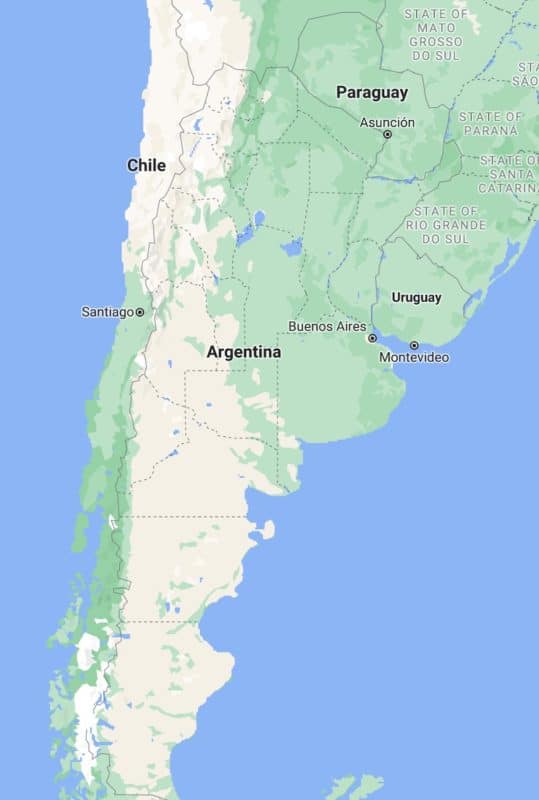
Click here for an interactive Google Map version of the above graphic.
Plan the ultimate trip to Chile with the help of these guides!
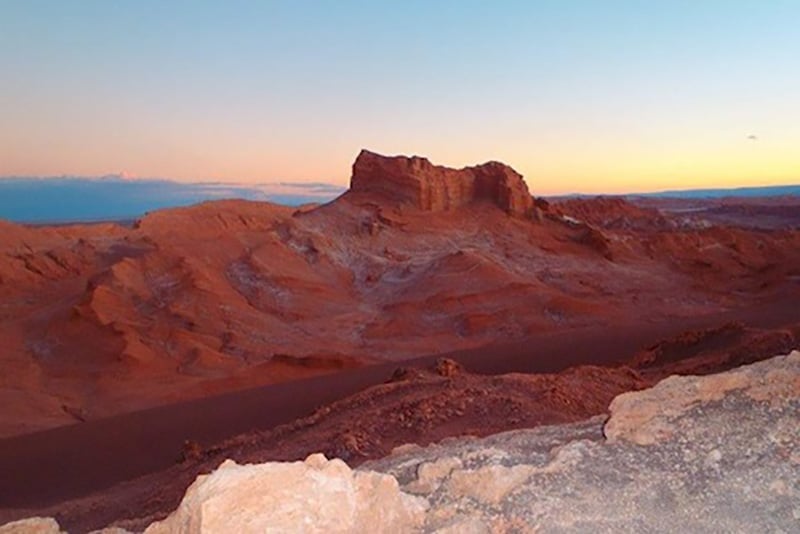
10 Unique Experiences To Have In Chile
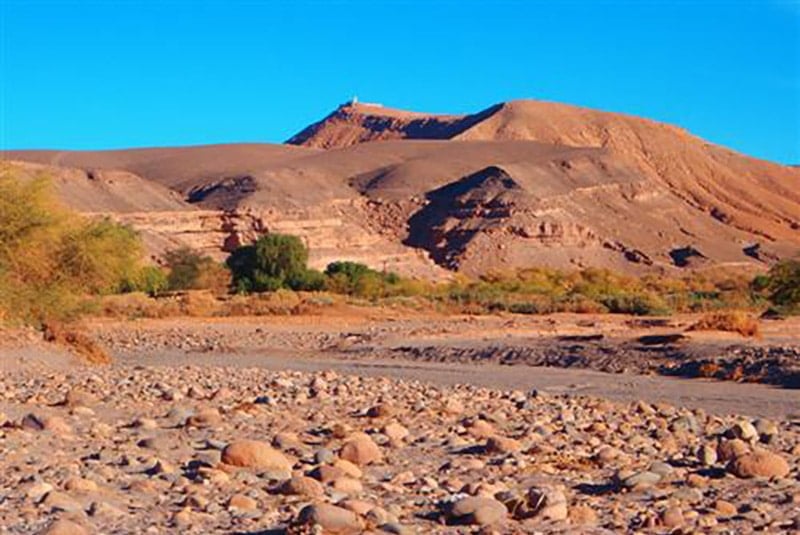
A Budget-Friendly Way To Experience San Pedro de Atacama, Chile
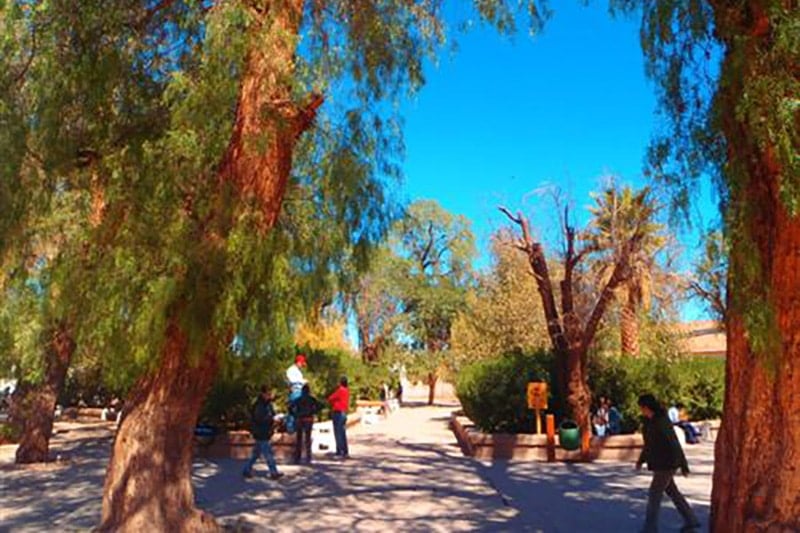
Hostel Review: Hostel Mamatierra, San Pedro, Chile
Traveling In South America
These guides share Chile travel advice as well as tips for exploring South America in general!
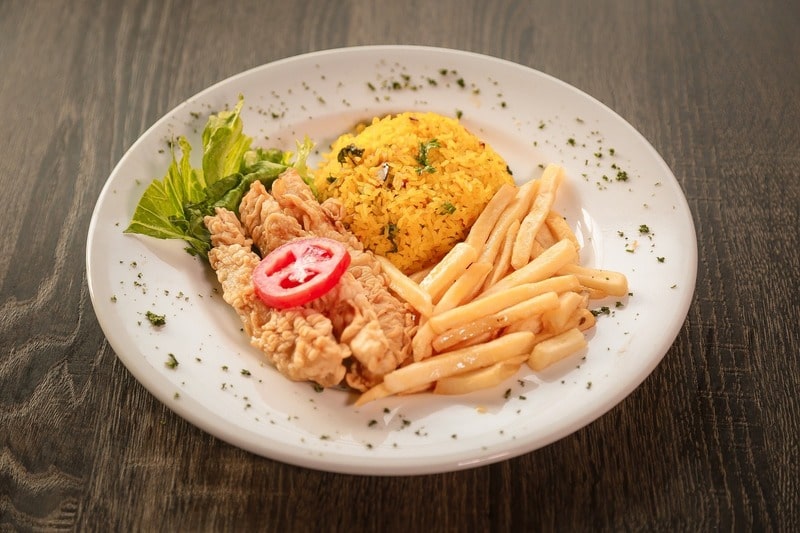
14 Essential Tips For Backpacking South America

My Most Ridiculous Bus Encounters Backpacking South America
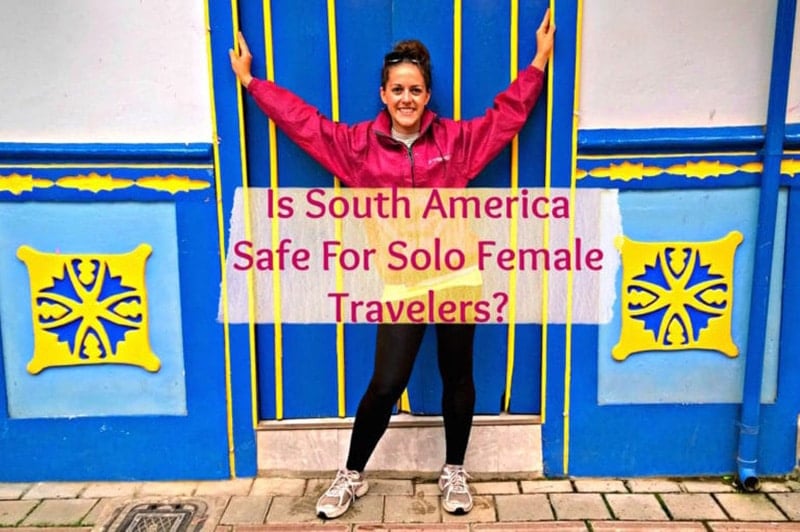
Is South America Safe For Solo Female Travelers?
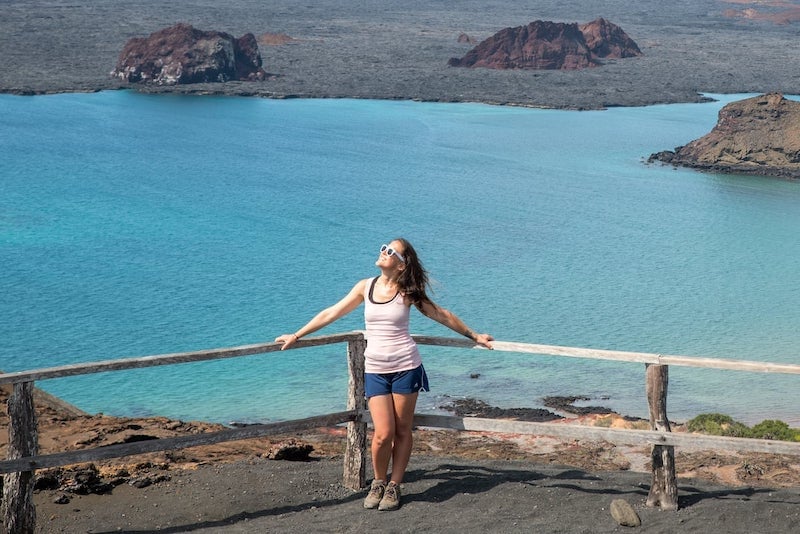
21 Best Places For Solo Travel In South America
Best Chile Tours
Explore local culture with a Chilean tour guide through these unique excursions:
- Valparaíso Region Tour – Viña del Mar from Santiago
- Half Day Sailing Magdlena Island Penguin Colony Punta Arenas October to March from Magallanes
- 5-Day Torres del Paine W Trek from Puerto Natales
- Private Easter Island Full-Day Tour
- Cajón del Maipo and Embalse el Yeso from Santiago
- Full-Day Wine Tour from Santiago with Sommelier Guide
- Inca Lagoon in Portillo Andes Mountains – Arqueologic Park & Wine Tasting from Santiago
- Kayaking in Huerquehue National Park (sunrise / sunset) from Pucon
- Astronomical Tour with Guide and Pick Up to San Pedro de Atacama
Chile Hotels
Click here to browse the best Chile travel hotels!
Prefer self-contained stays?
Click here to check out unique local rentals !
You can also use this map to search for local stays:
Renting A Car In Chile
Need a rental car for your Chile trip?
Use Discover Cars to quickly compare your car rental options.
Chile Travel Insurance
It doesn’t matter if you’re traveling solo or with a group on a Chile tour. When visiting Chile — or any other country in the world — make sure to get travel insurance to protect your health and safety.
In my opinion, the best travel medical insurance for travelers is SafetyWing as they’ve got a large network and offer both short-term and long-term coverage — including coverage if you’re traveling for months as well as limited coverage in your home country).
Additionally, SafetyWing is budget-friendly and offers $250,000 worth of coverage with just one low overall deductible of $250.
With coverage, you’ll have peace of mind as you embark on your Chile travel itinerary.
Click my referral link here to price out travel insurance for your trip in just a few clicks .
Chile Travel Guide FAQ
Below, find answers to frequently asked questions about traveling in Chile .
Q: What are the best places to visit in Chile?
One of the top places to visit in Chile is the country’s capital city of Santiago . This vibrant city in the Andes mountains has tons to offer travelers of all kinds, whether you’re looking for outdoor adventures, unique cultural experiences or some culinary exploration.
Santiago’s location in between the mountains and the Pacific coast make it the perfect home base for those looking to do some skiing in Valle Nevado, hiking in Cajon del Maipo, or sunbathing at the beaches Concon; each destination is a short drive or bus ride away from the city!
Art lovers will want to check out the Chilean Museum of Pre-Columbian Art, featuring a vast collection of Indigenous art from across Latin America, and the colorful neighborhood of Bellavista, once home to renowned poet Pablo Naruda.
You’ll also find tons of great wineries in the area serving up the bold red varietals for which the country is well-known.
Chilean Patagonia ‘s gorgeous landscapes also attract tons of travelers every year. This area in southern Chile offers tons of once-in-a-lifetime experiences, from hiking glacier-topped mountains to seeing penguins in their natural habitat.
Torres del Paine National Park and Tierra Del Fuego National Park are two of the area’s top attractions and for good reason.
At Torres de Paine , you’ll find breathtaking mountain views while hiking the “W Circuit,” a six-day trek that will test your mettle while taking you to some of the park’s most iconic sights. It’s known as one of the best hiking trails in the world !
And at Tierra Del Fuego National Park, you can hop on the “End of the World Train,” a former prison transport line that offers incredible views, no hiking experience needed.
In northeastern Chile, you’ll find San Pedro de Atacama , an arid desert town with much to explore.
In Mars Valley, or Death Valley, you’ll find incredible desert views and rocky hills that make for one-of-a-kind sunsets. The area is home to tons of hiking trails, but one of the coolest things to try is sandboarding.
The desert’s dry climate gives the sand a powdery feel, so you can fly down the hills just like you do on the ski slopes.
Looking for some R&R? The Atacama Desert is also home to some amazing thermal hot springs where you can rest your bones after your long travels.
The small town of San Pedro de Atacama is also worth checking out itself, with cool mud-brick buildings and lots of shops and cafes to explore.
Q: Is Chile expensive for tourists?
Chile is considered one of the most expensive destinations in South America for tourists. As Chile is one of the most developed countries in South America, things are generally more expensive and prices are comparable to those you’d find in European destinations.
That said, there are many deals to be found in Chile and it’s very possible to travel through the country on a budget.
The average traveler spends about $102 USD per day in Chile on food, transportation, accommodations, activities, and other travel expenses.
Q: What is the best way to travel around Chile?
The bus is generally considered the best way to get around Chile. The country’s long-distance bus routes are known for being comfortable, punctual, and affordable.
Chile’s bus companies also travel to an extensive list of destinations, so you’ll probably be able to get where you need to go — even if it’s a bit off the beaten path.
If you’re traveling overnight, spring for a salon cama or premium bus service with seats that fully recline or fold flat. Breakfast is usually included on these routes and you’ll arrive feeling refreshed after traveling in comfort.
If you’re heading to more remote locations or just want the freedom of traveling on your own schedule, renting a car in Chile may be the way to go.
Chileans are safe drivers and your main safety concerns on the road are stray animals and pedestrians who tend to use the road as a sidewalk.
Do note that Santiago does have vehicular restrictions based on smog levels in an effort to combat air pollution. If you’re visiting the city, you may want to stick to using public transportation to get around.
Q: Is Chile safe for travel?
Chile is one of the safer destinations in South America. Violent and petty crime levels are generally low, although pickpocketing, bag snatching and mugging, do happen in more urban areas.
Remember to stay aware of your surroundings at all times and keep any valuables close to you and out of sight to avoid pickpockets . It’s also best not to flaunt any obvious signs of wealth, particularly if you’re visiting more tourist-heavy areas.
The risk of natural disasters in Chile is a bit higher than in other destinations thanks to its active earthquake zone and volcanoes. Keep an eye on the news for any natural disaster warnings and evacuation notices and brush up on your earthquake safety protocols before your trip so that you’re extra prepared for anything.
Q: What do I need to know before going to Chile?
If you speak Spanish, you might notice that Chile’s version of the language is a bit different than what you’re used to. Every Spanish-speaking country has its own dialect and vocabulary, so some of the phrases and pronunciations you’ll hear may be new to you.
If you’re regularly conversing with locals, you’ll likely adjust to the dialect quickly and may even pick up a few new words.
For non-Spanish speakers, it’s definitely helpful to learn a few phrases in the language before your trip. Only around 10% of Chile’s population can converse in English, so you’ll probably need to know at least a little Spanish to communicate with locals. Plus, learning and using the local language shows respect for a destination’s culture.
As is the case in many Latin American destinations, meals start late in Chile. Most restaurants don’t open for lunch until 1 PM and you may find yourself sitting down for dinner long after sundown. Adjust your schedule accordingly; early risers may want to sleep in a bit to compensate for the late nights.
Looking to travel between Chile and Argentina? You’ll find that the Andes Mountains make this a bit difficult in certain spots. You’ll have to take a boat to travel into Argentina from certain spots in Patagonia like Villa O’Higgins and public transport options between the two countries are nonexistent here.
At the mountain crossings in the north, you’ll find that most buses and cars stick to those on the main highways. Paso de San Francisco is probably the most scenic route, but can take some time to travel. If you’re short on time, consider flying from one country to the other.
Q: How many days should you spend in Chile?
Most experts suggest spending 7 to 10 days in Chile to get a good idea of the country. This length of time will give you enough time to visit some of the country’s top natural wonders, cities, and wineries with ample travel time to get to each destination.
Q: What is the best month to visit Chile?
While the weather in Chile can vary greatly from place to place, October through March (Chile’s summertime) is generally considered the best time to visit. During this time, you’ll find warm and pleasant weather throughout much of the country.
This is also Chile’s peak season for tourism, so you may want to visit in those shoulder months (September through October and March through April) to avoid crowds at major attractions.
If you’re visiting in the peak of summer (December through February), you’ll definitely want to book your accommodations well in advance, as things book up quickly during this time.
Q: Do I need a Chile travel visa?
Visitors from the United States, Canada, the United Kingdom, and the European Union do not need a visa to visit Chile.
Visitors from South American states including Argentina, Bolivia, Brazil, Colombia, Ecuador, Paraguay, Peru, and Uruguay simply need to show their national ID upon arrival in Chile and do not need a passport to enter the country.
Visitors from Australia do need a visa to enter Chile and can apply for an e-visa online.
It’s recommended to view your country’s Chile International Travel Information page for the most up-to-date information on entry and exit rules and Chile Travel Requirements. You can also contact the Consulate General of Chile.
Q: Where is Chile?
Chile sits along the western seaboard of South America. It shares borders with Peru and Bolivia (north), Argentina (east), and the Pacific Ocean (west).
Q: Are credit cards accepted in Chile?
Credit cards — particularly Visa and Mastercard — are widely accepted around Chile, though it is always wise to carry some cash for smaller establishments and in case of emergency. Note that you’ll often likely spend less when paying cash as many Chilean businesses pass credit card fees onto the customer.
Q: Can you drink the tap water in Chile?
The tap water is safe to drink in most places in Chile outside of San Pedro de Atacama. That being said, it’s always a good idea to double check with your hotel to be safe. Moreover, Chile’s tap water has a high mineral content, so drinking it for long periods of time is not advised.
Q: What is the local currency in Chile?
The local currency in Chile is the Chilean peso.
What would you add to this Chile travel guide?

Enjoyed this ultimate Chile travel guide? Pin it for later!

Ultimate CHILE Travel Guide
Chile is a country located in South America . Santiago is the capital and it is a country known for its culture, natural wonders, and diversity. Our Chile travel guide is here to help you see the best it offers.
Don’t let the skinny strip of Chile on the map fool you into thinking there isn’t much there. If you love adventure and wild landscapes, Chile delivers that and so much more.
The most famous area is Patagonia and if you like hiking, Torres del Paine is world-famous. Nearby Punta Arenas offers glaciers and penguins too.
For elevation, salt flats, flamingos, geysers and volcanoes, head north to the Atacama Desert. This area blew our minds and we couldn’t believe we had overlooked it on previous trips to South America.
Also, if you didn’t know, Easter Island is politically part of Chile. While we classify it as part of Oceania, the best way to access this intriguing place is from Santiago.
Destinations
Chile travel: quick tips, don’t visit chile without:.
UNIVERSAL TRAVEL ADAPTER

GET A GUIDEBOOK

REUSABLE WATER BOTTLE

START PLANNING YOUR TRIP!
Where to stay in chile.
Below you will find some of the places we have stayed during our travels in Chile. These are individual properties that we enjoyed and would recommend to other travelers.
HOW TO GET AROUND IN CHILE
Anyone looking to travel to Chile will likely fly into Santiago and connect to the other airports across the country. From any city connected by airplane, it is possible to use public transportation to see the city or take buses further afield.
Many people choose to engage in group tours or day tours to get around and see things in Chile. It is also possible to rent a car and plan a road trip that takes you further afield and out of the city.
TOP CHILE TOURS
Highlights of chile.
9 Days Santiago to Buenos Aires Visits: Santiago, Valparaiso, Pucon, Bariloche & Estancia
TORRES DEL PAINE – W TREK
6 Days from Puerto Natales Visits: Fully catered trek on the famous W route in Patagonia
EASTER ISLAND INDEPENDENT
4 Days from Hanga Roa Visits: Hanga Roa & Rapa Nui National Park
PLAN YOUR TRIP LIKE A SEASONED PRO!
Chile travel: booking resources, chile travel guide: related articles.
Looking for more info? Check out all the articles we’ve written on travel to Chile and start planning your dream trip.
How to Visit Easter Island: Essential Planning Guide
9 things to do & places to visit in san pedro de atacama, rapa nui national park: moai of easter island, explora atacama: salta to san pedro de atacama travesia.

Travel Guide Chile
Book your individual trip , stress-free with local travel experts
- roughguides.com
- South America
- Travel guide
- Itineraries
- Local Experts
- Travel Advice
- Accommodation
Plan your tailor-made trip with a local expert
Book securely with money-back guarantee
Travel stress-free with local assistance and 24/7 support
Chile defies many visitors’ expectations of an Andean country. It is developed, relatively affluent and non-corrupt. Travel to Chile and you’ll discover one of the safest and most relaxing countries in South America. Its buses are comfortable and run on time; its people polite and respectful. Above all, though, visitors travel to Chile for its beautiful landscapes. The population is concentrated to the major cities, which leaves vast tracts of scarcely touched wilderness to explore.
Chile travel facts
Where to go in chile, best time to go to chile, how to get to chile, how to get around chile, best places to visit in chile, itineraries for chile, travel visa requirements for chile, food and drink in chile, festivals in chile, sports in chile, top activities in chile, national parks and reserves, shopping in chile, chile’s wildlife, what to see.
A country of geographical extremes, Chile’s diversity is reflected both in its people and its cuisine, which encompasses the tropical fruit of the arid north as well as king crab from the southern fjords. Above all, visitors head to Chile for its remote and dizzyingly beautiful landscapes. Our travel guide to Chile will provide you with everything you need to make the most of it.
- Motto: ‘ Por la razón o la fuerza ’ meaning, ‘By right or by might’.
- Population: 17.2 million people live in Chile, consisting of a fairly homogenous mestizo population with a few indigenous groups ranging from Mapuche in the Lake District, Yámana and Kawéskar (around 2,800) in Patagonia and Tierra del Fuego.
- Economy: One of the most developed countries in Latin America, Chile has the steadiest growth in the region and the lowest level of corruption in Latin America.
- Law: Chile only legalised divorce in 2004.
- Politics: Although notorious for the Pinochet’s infamous military dictatorship during the 1970s and 1980s, Chile otherwise has a long history of parliamentary democracy.
Travel to Chile’s capital Santiago and you’ll find monuments, museums and restaurants. Whilst on the popular Central Coast, the port of Valparaíso provides a contrasting bohemian vibe. Chile’s largest beach resort Viña del Mar couldn’t be more different, with high-rises, casino and seafront restaurants.

Continue north and you’ll find a succession of idyllic beaches spread out along the dazzling fringe of the Norte Chico, which comprises semi-arid landscapes and hardy vegetation.
South of Santiago, the lush Central Valley, with its swathes of orchards and vineyards, invites you to find Chile’s best vintages, including Carmenère, the country’s signature grape. Further south, the much-visited Lake District is a postcard-perfect landscape spanning conical volcanoes to dense araucaria forests.
Just off the southern edge of the Lake District, the Chiloé archipelago is famous for its rickety houses on stilts, distinctive wooden churches and rich local mythology.
Back on the mainland, between the Carretera Austral and Campo de Hielo Sur (Southern Ice-Field), lies Patagonia , a land of bleak windswept plains bordered by the magnificent granite spires of the Torres del Paine massif, a magnet for hikers and climbers.
Across the Magellan Strait, Tierra del Fuego sits shivering at the bottom of the world, a remote place of harsh, desolate beauty, while Chile’s southernmost town, Puerto Williams, is the gateway to one of the continent’s toughest treks, the Dientes de Navarino.
No Chile travel guide would be complete without mentioning the country’s two Pacific possessions: Easter Island – one of the most remote places on earth – and the little-visited Isla Robinson Crusoe, part of the Juan Fernández Archipelago, with its dramatic volcanic peaks and a wealth of endemic wildlife.
Discover more places in Chile

- Patagonia Travel Guide
- Santiago and around Travel Guide
- The Central Valley Travel Guide
- The Lake District Travel Guide
- Tierra del Fuego Travel Guide
- Valparaíso Travel Guide
Given the variety of its climate and geography, you can travel to Chile at any time of year. The best time to visit Chile depends on what area of the country most interests you.
Santiago, northern Chile and the Atacama Desert are year-round destinations. Temperatures here tend to be hottest between January and March.
If you have your heart set on skiing around Santiago or further south, the best time is from July through to September. The season for adventure sports in the Lake District and Northern Patagonia tends to be November through to March.
The best time to visit South Patagonia and Tierra del Fuego is in warmer months of November to March. From June to September many places close and the area is difficult to navigate due to the snow.
The most straightforward way to travel to Chile is via Santiago’s modern international airport, though some travel to Chile by land from neighbouring countries, and a handful arrive by sea.
Airfares depend on the season. You’ll generally pay the most if you travel to Chile in the December-February and June-August periods, the southern and northern hemisphere’s summer holiday months, respectively. Fares drop slightly during the ‘shoulder’ months – March and November – and you’ll normally get the best prices during the low seasons: April, May, September and October.
For those travelling to Chile’s Easter Island, your flight from Santiago is likely to be cheaper if bought in conjunction with a LATAM Airlines international flight.
Getting around Chile is easy, comfortable and relatively good value. When you are there, you will most likely choose to travel by bus (or micros) due to the comfort and cost. Chile’s long-distance buses offer an excellent service thanks to the enormous amount of legroom, frequent departures and flexible itineraries.
Internal flights in Chile are useful for covering long distances in a hurry, though fares can be quite high. The country has a good road network, so hiring a car and driving is a quick and stress-free way of getting around.
Colectivos, shared taxis operating along a set route with fixed fares, are normally only slightly more expensive than local buses. These are good options when travelling in a couple or small group. Most colectivos look like regular taxis and have their route or final destination marked on a roof-board.
Taxis are normally black with a yellow roof. Foreigners are often overcharged, so check the meter has been turned on before you start a journey and get an estimate for the fare, if possible in Spanish. Fares should be shown on the windscreen.
- Atacama desert
Visit erupting geysers, crinkly salt plains and emerald lakes in the morning, and deep, mystical valleys by sunset in the driest desert on earth.
Travel advice for Chile
From travel safety to visa requirements, discover the best tips for traveling to Chile
- Sports and Outdoor activities in Chile
- Eating and drinking in Chile
- Getting around Chile: Transportation Tips
- Travel Tips Chile for planning and on the go
- Elqui Valley
Take advantage of some of the clearest skies in Chile and look at the universe through some of the world's most powerful telescopes.
Chile's rapidly evolving capital city boasts a vibrant eating out and nightlife scene, several fascinating museums, numerous cultural pursuits and a selection of excellent places to stay.
Valparaíso has a tangle of colourful houses, cobbled streets and bohemian hang-outs spread across a series of undulating hills overlooking the Pacific.
Pablo Neruda's house has been turned into a beguiling museum with an evocative collection of the Nobel Prize-winning poet's kitsch and often bizarre trinkets and knick-knacks.
Visit the numerous traditional bodegas around San Fernando and Santa Cruz, and sample some of Chile's finest vintages.
- Parque Nacional Torres del Paine
Hike the trails of Chile's most popular – and most spectacular – national park or climb the granite towers that give the park its name.
- Easter Island
Gazing down into the giant crater of the extinct Rano Kau volcano and visiting the magical moai at Ahu Tongariki and Rano Raraku are once-in-a-lifetime experiences.
- Isla Robinson Crusoe
Isla Robinson Crusoe has the end-of-the-world castaway feel that inspired Daniel Defoe's famous book.
Sample one of Chile's most memorable dishes, admire the palafitos (traditional houses on stilts) or hike through temperate rainforest on Chile's mist and legend shrouded island.
- Patagonian islands
Lose yourself in this veritable maze of fjords and tiny islets by taking to the water in a sea kayak, or take a boat trip in search of the elusive blue whale.
- Tierra del Fuego
Explore the deserted roads running through steppe and dotted with guanacos and rheas, or fish in the pristine lakes and rivers of Chile's remotest region.
- Isla Navarino
Chile's southernmost inhabited territory (barring Antarctica), where the warmth of the locals contrasts with the harshness of the landscape.
Fly over some of the world's most treacherous waters or brave a sailing trip to Chile's southernmost group of islands – the biggest nautical graveyard in the Americas.
- Parque Nacional La Campana
Follow in the footsteps of Charles Darwin by hiking up to the 1880m summit of Cerro La Campana, where you'll be rewarded by some of the best views in the country.
As part of our Chile travel guide we’ve drawn up some fantastic itineraries for travelling through Chile, taking you from the icy fjords and snow-tipped mountains of the south to the fertile wine-growing valleys in the centre and parched desert and highland lagoons of the north. In short, places to visit Chile abound.
Tailor-made travel itineraries for Chile, created by local experts

11 days / from 4896 USD
Luxurious Chile - Atacama Desert & Easter Island
Explore two of Chile's extraordinary highlights: the Atacama desert with its salt flats and lagoons and Easter Island. The island is famous for its stone monoliths and source of mystery for many. Your stay will be complemented in the best hotels, making this trip even more special.

10 days / from 2650 USD
Chile Explored: From Santiago to Torres del Paine
The vast expanse of Patagonia is home to extreme landscapes, from jagged mountains, stark glaciers, clear blue lakes, and grassy fields. You will find them all in Torres del Paine, a huge contrast to the start of the trip in the historical, bustling city of Santiago.

14 days / from 3800 USD
Self-Drive Santiago, Wines & Lakes
Discover the beauty of Chile independently in your own rental car. Start in Santiago before heading to Pucon, Huilo Huilo and Puerto Varas. As you'll be in your own car, you can plan each day at your liking - hikes, relaxing or cultural exploration? Decide spontaneously.
Most foreign visitors who travel to Chile do not need a visa. Visitors of all nationalities are issued with a ninety-day tourist entry card ( Tarjeta de Turismo ) on arrival, which can be extended once for an additional ninety days.
If you lose your tourist card, ask for a duplicate immediately, either from the Fronteras department of the Policía Internacional, General Borgoño 1052, Santiago or from the Extranjero’s department of the Intendencia in any provincial capital. There’s no charge.
As with all countries, make sure you check on the country’s government website about your visa requirements, before you travel.
Travel to Chile and you’ll find a vast array of quality raw produce, though many restaurants lack imagination, offering similar limited menus. That’s not to say, however, that you can’t eat well here, and the fish and seafood, in particular, are superb.
On the whole, eating out in Chile tends to be good value. In local restaurants you can expect to pay around CH$4,000–7,000 for a main course. The best trick is to do as the Chileans do and make lunch your main meal of the day; many restaurants offer a fixed-price menú del día, always much better value than the à la carte options.
Most of Chile’s festivals are held to mark religious occasions or to honour saints or the Virgin Mary. What’s fascinating about them is the strong influence of pre-Spanish, pre-Christian rites, particularly in the Aymara communities of the far north and the Mapuche of the south. Added to this is the influence of colourful folk traditions rooted in the Spanish expeditions of exploration and conquest, colonization and evangelism, slavery and revolution.
In the altiplano of the far north, Aymara herdsmen celebrate Catholic holy days and the feasts of ancient cults along with ritual dancing and the offering of sacrificial llamas.
In central Chile, you’ll witness the influence of colonial traditions. In the days of the conquest, an important ingredient of any fiesta was the verbal sparring between itinerant bards called payadores , who would compose and then try to resolve each other’s impromptu rhyming riddles. The custom is kept alive at many fiestas in the Central Valley, where young poets spontaneously improvise lolismos and locuciones , forms of jocular verse that are quite unintelligible to an outsider. These rural fiestas always culminate in an energetic display of cueca dancing, washed down with plenty of wine and chicha – reminiscent of the entertainment organized by indulgent hacienda-owners for their peons.
In the south, the solemn Mapuche festivals are closely linked to mythology, magic and faith healing, agricultural rituals, and supplications to gods and spirits. Group dances (purrún) are performed with gentle movements; participants either move round in a circle or advance and retreat in lines. Most ceremonies are accompanied by mounted horn players whose four-metre-long bamboo instruments, trutrucas , require enormous lung power to produce a note. Other types of traditional wind instruments include a small pipe ( lolkiñ ), flute ( pinkulwe ), cow’s horn ( kullkull ) and whistle ( pifilka ). Of all Mapuche musical instruments, the most important is the sacred drum ( kultrún ), which is only used by faith healers ( machis ).
A list of festivals in Chile
Spaniards brought the first wooden image of San Sebastián to Chile in the seventeenth century. After a Mapuche raid on Chillán, the image was buried in a nearby field, and no one was able to raise it. The saint’s feast day has become an important Mapuche festival, especially in Lonquimay, where it’s celebrated with horse racing, feasting and drinking.
Celebrated throughout Chile since 1780, when a group of miners and muleteers discovered a stone image of the Virgin and Child while sheltering from an inexplicable thunderstorm in the Atacama. Typical festivities include religious processions and traditional dances.
This glitzy and wildly popular five-day festival is held in Viña del Mar’s open-air amphitheatre, featuring performers from all over Latin America and broadcast to most Spanish-speaking countries.
Among the nationwide Easter celebrations, look out for Santiago’s solemn procession of penitents dressed in black habits, carrying crosses through the streets, and La Ligua’s parade of mounted huasos followed by a giant penguin.
In many parts of central Chile, huasos parade through the streets on their horses, often accompanied by a priest sitting on a float covered in white lilies.
Throughout the altiplano, villages celebrate the cult of the Holy Cross, inspired in the seventeenth century by the Spaniards’ obsession with crosses, which they carried everywhere, erected on hillsides and even carved in the air with their fingers. The festivities have strong pre-Christian elements, often including the sacrifice of a llama.
A huge parade through the streets of Santiago bearing the Cristo de Mayo – a sixteenth-century carving of Christ whose crown of thorns slipped to its neck during an earthquake, and which is said to have shed tears of blood when attempts were made to put the crown back in place.
An important feast night, celebrated by families up and down the country with a giant stew, known as the Estofado de San Juan. In Chiloé, an integral part of the feast are roasted potato balls called tropones, which burn the fingers and make people “dance the tropón” as they jig up and down, juggling them from hand to hand.
Along the length of Chile’s coast, fishermen decorate their boats and take the image of their patron saint out to sea – often at night with candles and flares burning – to pray for good weather and large catches.
The largest religious festival in Chile, held in La Tirana in the Far North, and attended by over 80,000 pilgrims and hundreds of costumed dancers (see Santuario de la Tirana).
Military parades throughout Chile honour the patron saint of the armed forces; the largest are in Maipú, on the southern outskirts of Santiago, where San Martín and Bernardo O’Higgins defeated Spanish Royalists in 1818.
Thousands of Chilotes flock to the archipelago’s tiny island of Caguach to worship at a two-metre-high figure of Christ, donated by the Jesuits in the eighteenth century.
Chile’s Independence Day is celebrated throughout the country with street parties, music and dancing.
Each year, numerous dance groups and more than 10,000 pilgrims from Chile, Peru, Bolivia and Argentina make their way along a tortuous cliff path to visit a rock carving of the Virgin in the Azapa valley, near Arica. There are many smaller festivals in other parts of Chile, too.
Traditionally, this is the day when Chileans tend their family graves. In the north, where Aymara customs have become entwined with Christian ones, crosses are often removed from graves and left on the former bed of the deceased overnight. Candles are kept burning in the room, and a feast is served for family members, past and present.
A second vigil to the dead is held in cemeteries, with offerings of food and wine sprinkled on the graves. In some far north villages, there’s a tradition of reading a liturgy, always in Latin.
Celebrated in many parts of Chile, the festival of the Immaculate Conception is at its liveliest in San Pedro de Atacama, where it’s accompanied by traditional Aymara music and dancing.
More than 100,000 pilgrims from all over the north come to Andacollo, in Norte Chico, to worship its Virgin and watch the famous masked dancers (see Andacollo and around).
The Chileans are not a particularly exuberant people, but passions are roused by several national enthusiasms – chiefly football and rodeo, which at their best are performed with electrifying skill and theatricality.
El fútbol reigns supreme as Chile’s favourite sport. Introduced by British immigrants in the early 1800s, football in Chile can trace its history back to the playing fields of the Mackay School, one of the first English schools in Valparaíso, and its heritage is reflected in the names of the first clubs: Santiago Wanderers, Everton, Badminton, Morning Star and Green Cross.
Horse-racing
There are two very different types of horse racing in Chile: conventional track racing, known as hípica , and the much rougher and wilder carreras a la chilena . Hípica is a sport for rich Santiaguinos, who don their tweeds and posh frocks to go and watch it at the capital’s Club Hípico and Hipódromo Chile.
Carreras a la chilena are held anywhere in the country where two horses can be found to race against each other. Apart from the organized events that take place at village fiestas, these races are normally a result of one huaso betting another that his horse is faster.
Rodeos evolved from the early colonial days when the cattle on the large estancias had to be rounded up and branded or slaughtered by huasos. The feats of horsemanship required to do so soon took on a competitive element, which eventually found an expression in the form of rodeos. Even though ranching has long declined in Chile, organized rodeos remain wildly popular, with many free competitions taking place in local stadiums (known as medialunas) throughout the season, which runs from September to April. Taking in a rodeo not only allows you to watch the most dazzling equestrian skills inside the arena, but also to see the huasos (riders) decked out in all their traditional gear: ponchos, silver spurs and all. Added to this, the atmosphere is invariably loads of fun, with lots of whooping families and excited kids, and plenty of food and drink afterwards.
The Chilean huaso
“Of the many cowboys of the Americas, none remains as shrouded in mystery and contradiction as Chile’s huaso,” says Richard Slatta in Cowboys of the Americas. Certainly the huaso holds a special place in Chile’s perception of its national identity. But the definition of the huaso is somewhat confused and subject to differing interpretations. The one you’re most likely to come across is that of the “gentleman rider”, the middle-class horseman who, while not a part of the landed elite, is a good few social rungs up from the landless labourer. This is the huaso you’ll see in cueca performances and at rodeos.
Chile offers an enormous range of outdoor activities, including volcano-climbing, skiing, surfing, white-water rafting, fly-fishing and horseriding.
Rafting and kayaking
Chile’s many frothy rivers and streams afford incomparable rafting opportunities. Indeed, the country’s top destinations, the mighty Río Bío Bío and the Río Futaleufú, entice visitors from around the globe. Rafting trips generally range in length from one to eight days and, in the case of the Bío Bío, sometimes include the option of climbing 3160m Volcán Callaquén. In addition to these challenging rivers, gentler alternatives exist on the Río Maipo close to Santiago, the Río Trancura near Pucón, and the Río Petrohue near Puerto Varas.
Chile’s white-water rapids also offer excellent kayaking, though this is less developed as an organized activity.
For the most part, Chile is a very empty country with vast tracts of wilderness offering potential for fantastic hiking. Chileans, moreover, are often reluctant to stray far from their parked cars when they visit the countryside, so you’ll find that most trails without vehicle access are blissfully quiet. However, the absence of a national enthusiasm for hiking also means that Chile isn’t particularly geared up to the hiking scene. There are relatively few long-distance trails (given the total area) and a shortage of decent trekking maps.
That said, what is on offer is superb, and ranks among the country’s most rewarding attractions.
The north of Chile, with its harsh climate and landscape, isn’t really suitable for hiking, and most walkers head for the lush native forests of Chile’s south, peppered with waterfalls, lakes, hot springs and volcanoes. The best trails are nearly always inside national parks or reserves, where the guardaparques (rangers) are a good source of advice on finding and following the paths. They should always be informed if you plan to do an overnight hike (so that if you don’t come back, they’ll know where to search for you).
The majority of trails are for half-day or day hikes, though some parks offer a few long-distance hikes, sometimes linking up with trails in adjoining parks. The level of path maintenance and signing varies greatly from one park to another, and many of the more remote trails are indistinct and difficult to follow.
Hardly any parks allow wild camping, while the few others that now allow it have a series of rustic camping areas that you’re required to stick to – check with the guardaparque. If you do camp (the best way to experience the Chilean wilderness) note that forest and bush fires are a very real hazard. Take great care when making a campfire (having checked beforehand that they’re allowed). Also, never chop or break down vegetation for fuel, as most of Chile’s native flora is endangered.
By far the most popular destination for hiking is Torres del Paine in the far south, which offers magnificent scenery but fairly crowded trails, especially in January and February. Many quieter, less well-known alternatives are scattered between Santiago and Tierra del Fuego, ranging from narrow paths in the towering, snow-streaked central Andes to hikes up to glaciers off the Carretera Austral.
If you go hiking, it’s essential to be well prepared – always carry plenty of water, wear a hat and sun block for protection against the sun and carry extra layers of warm clothing to guard against the sharp drop in temperature after sundown. Even on day hikes, take enough supplies to provide for the eventuality of getting lost, and always carry a map and compass (brújula), preferably one bought in the southern hemisphere or adjusted for southern latitudes. Also, make a conscious effort to help preserve Chile’s environment – where there’s no toilet, bury human waste at least 20cm under the ground and 30m from the nearest river or lake; take away or burn all your rubbish; and use specially designed eco-friendly detergents for use in lakes and streams.
The massive Andean cordillera offers a wide range of climbing possibilities. In the far north of Chile, you can trek up several volcanoes over 6000m, including Volcán Parinacota (6330m), Volcán Llullaillaco (6739m) and Volcán Ojos del Salado (6950m). Although ropes and crampons aren’t always needed, these ascents are suitable only for experienced climbers, and need a fair amount of independent planning, with only a few companies offering guided excursions.
In the central Andes, exciting climbs include Volcán Marmolejo (6100m) and Volcán Tupungato (6750m), while in the south, climbers head for Volcán Villarrica (2840m) and Volcán Osorno (2652m), both of which you can tackle even with little mountaineering experience.
Fly-fishing
Chile has an international, and well-deserved, reputation as one of the finest fly-fishing destinations in the world. Its pristine waters teem with rainbow, brown and brook trout, and silver and Atlantic salmon. These fish are not native, but were introduced for sport in the late nineteenth century; since then, the wild population has flourished and multiplied, and is also supplemented by generous numbers of escapees from local fish farms. The fishing season varies slightly from region to region, but in general runs from November to May.
Chile offers the finest and most challenging skiing in South America. Many of the country’s top slopes and resorts lie within very easy reach of Santiago, including El Colorado, La Parva, Valle Nevado and world-renowned Portillo. A bit further south, but no less impressive, stands the popular Termas de Chillán.
Horse-trekking
Exploring Chile’s dramatic landscapes on horseback is a memorable experience. The best possibilities are around Santiago, and in the Central Valley, where riding has been a way of life for centuries. In addition to the spectacular scenery, you can also expect to see condors and other birds of prey. Trips are usually guided by local arrieros, who herd cattle up to high pastures in springtime and know the mountain paths intimately. You normally spend about five or six hours in the saddle each day; a lingering asado (barbecue), cooked over an open fire and accompanied by plenty of Chilean wine, will be part of the pleasure. At night, you sleep in tents transported by mules, and you’ll be treated to the most breathtaking display of stars.
The only disadvantage of riding treks in the central Andes is that, due to the terrain, you’re unlikely to get beyond a walk, and cantering is usually out of the question. If you want a faster pace, opt for the treks offered by some companies in Patagonia, where rolling grasslands provide plenty of opportunity for gallops – though the weather can often put a dampener on your trip.
Mountain biking
For most of Chile’s length, there are extremely good and little-used dirt roads perfect for cycling – although the numerous potholes mean it’s only worth attempting them on a mountain bike. For a serious trip, you should bring your own bike or buy one in Santiago – renting a bike of the quality required can be difficult to arrange. An alternative is to go on an organized biking excursion, where all equipment, including tents, will be provided. Note that during the summer, cycling in Patagonia and Tierra del Fuego is made almost impossible by incessant and ferociously strong winds.
Chile’s beaches are pulling in an increasing number of surfers, who come to ride the year-round breaks that pound the Pacific shore. By unanimous consent, the best breaks – mainly long left-handers – are concentrated around Pichilemu, near Rancagua, which is the site of the annual National Surfing Championships. Further north, the warmer seas around Iquique and Arica are also increasingly popular.
Some 18% of Chile’s mainland territory is protected by the state under the extensive Sistema Nacional de Areas Silvestres Protegidas (National Protected Wildlife Areas System), which is made up of 30 national parks, 38 national reserves and 11 natural monuments. These inevitably include the country’s most outstanding scenic attractions, so the main aim is always to protect and manage native fauna and flora. Given Chile’s great biodiversity, park objectives are as varied as protecting flamingo populations and monitoring glaciers.
National parks ( parques nacionales ) are generally large areas of unspoilt wilderness, usually featuring fragile endemic ecosystems. They include the most touristy and beautiful of the protected areas, and often offer walking trails and sometimes camping areas too. National reserves ( reservas nacionales ) are areas of ecological importance that have suffered some degree of natural degradation; there are fewer regulations to protect these areas, and “sustainable” commercial exploitation (such as mineral extraction) is allowed to take place. Natural monuments ( monumentos naturales ) tend to be important or endangered geological formations, or small areas of biological, anthropological or archeological significance.
In addition to these three main categories, there are a few nature sanctuaries ( sanctuarios de la naturaleza ) and protected areas ( areas de protección ), usually earmarked for their scientific or scenic interest.
Before heading out of the capital, head to Conaf’s head office in Santiago, where you can pick up brochures, books and basic maps. No permit is needed to visit any of Chile’s national parks; you simply turn up and pay your entrance fee (usually CH$1000–4000), though some parks are free.
Alternatively, Conaf’s Annual Pass (CH$10,000) allows unlimited access to all of Chile’s national parks and reserves – except Torres del Paine and Easter Island – for a year; it can be purchased from Conaf offices.
Ease of access differs wildly from one park to the next. Some parks have paved highways running through them, while others are served by dirt tracks that are only passable for a few months of the year. Getting to them often involves renting a vehicle or going on an organized trip, as around two-thirds of Chile’s national parks can’t be reached by public transport.
A few parks now have camping areas. These are often rustic sites with basic facilities, run by Conaf, which charge around CH$5000–10,000 per tent. In other parks, particularly in the south, Conaf gives licences to concessionaires, who operate campsites and cabañas, which tend to be very expensive. Some of the more remote national parks, especially in the north, have small refugios attached to the ranger stations – these are usually rustic, stone-built huts (from CH$5000 per person) containing around eight to ten bunk beds, hot showers and gas stoves. Some of them are in stunning locations, overlooking the Salar de Surire, for example, or with views across Lago Chungará to Volcán Parinacota. Sadly, however, they are increasingly unreliable.
While Chile’s handicrafts (artesanía) are nowhere near as diverse or colourful as in Peru or Bolivia, you can still find a range of beautiful souvenirs, which are usually sold in ferias artesanales (craft markets) on or near the central squares of the main towns. As for day-to-day essentials, you’ll be able to locate just about everything you need, from sun block to contact lens solution, in the main towns across the country.
Artesanía and other souvenirs
The finest and arguably most beautiful goods you can buy in Chile are the items – mainly jewellery – made of lapis lazuli, the deep-blue semi-precious stone found only in Chile and Afghanistan. The best place to buy these is in Bellavista, Santiago: note that the deeper the colour of the stone, the better its quality. Though certainly less expensive than lapis exports sold abroad, they’re still pricey.
Most artesanía is considerably less expensive. In the Norte Grande, the most common articles are alpaca sweaters, gloves and scarves, which you’ll find in altiplano villages like Parinacota, or in Arica and Iquique. The quality is usually fairly low, but they’re inexpensive and very attractive all the same. In the Norte Chico, you can pick up some beautiful leather goods, particularly in the crafts markets of La Serena. You might also be tempted to buy a bottle of pisco there, so that you can recreate that pisco sour experience back home – though you’re probably better off getting it at a supermarket in Santiago before you leave, to save yourself carting it about. The Central Valley, as the agricultural heartland of Chile, is famous for its huaso gear, and you’ll find brightly coloured ponchos and stiff straw hats in the numerous working huaso shops. The highlight in the Lake District is the traditional Mapuche silver jewellery, while the far south is a good place to buy chunky, colourful knitwear.
A range of these goods can also be bought in the major crafts markets in Santiago, notably Los Dominicos market. Also worth checking out are Santiago’s little flea markets.
Hard haggling is neither commonly practised nor expected in Chile, though a bit of bargaining is in order at many markets. It’s also worth trying to bargain down the price of hotel rooms, especially outside the peak months of January and February.
Top image © Erlantz P.R/Shutterstock
Chile’s diverse animal kingdom inhabits a landscape of extremes. The country’s formidable natural barriers – the immense Pacific, lofty Andes and desolate Atacama – have resulted in an exceptional degree of endemism , with a third of Chile’s mammals, such as the shy pudú (pygmy deer) not found anywhere else in the world.
Four species of camelid alone are found in Chile’s barren altiplano, namely the shaggy, domesticated llama and alpaca in the north, and their wild cousins – the Patagonia-dwelling guanaco and the delicate vicuña with its highly prized fur, restricted to the high altitudes. Chile’s biggest cat is the elusive puma , another Patagonia resident, while smaller wildcats, from the colo-colo to the guiña , also stalk these grasslands. Endemic rodents, such as the mountain vizcacha , are found in the northern highlands, while several species of fox can be spotted in the desert, altiplano and coastal forest.
A country seemingly made for birdwatchers, Chile is home to a curious mix of the small and beautiful, such as hummingbirds (including the firecrown, endemic to the Juan Fernández islands), while at the other end of the scale is the mighty Andean condor , soaring over the mountains. High in the Andes near the Bolivian border, the Chilean and James’s flamingo gather at remote saltwater lakes, while the long-legged ñandú propels itself over the Patagonian steppe. Equally impressive sea birds include the Humboldt , Magellanic and king penguins , and Chile’s coastal waters host some spectacular mammals, such as the blue whale and several species of dolphins .
Few countries, moreover, can match Chile for the sheer diversity of scenery and range of climatic zones – from the driest desert in the world to immense ice fields and glaciers. Spread between these extremes is a kaleidoscope of panoramas, taking in sun-baked scrubland, lush vineyards and orchards, virgin temperate rainforest, dramatic fjords and endless Patagonian steppes . Towering over it all is the long, jagged spine of the Andes, punctuated by colossal peaks and smouldering volcanoes . Given this geographical spread and dearth of population, it’s not unusual to stumble on steaming hot springs, gleaming white salt flats or emerald lakes, and have them all to yourself.
Lovers of the great outdoors will likewise be seduced by the almost endless possibilities for outdoor activities , whether it be jeep rides, birdwatching, skiing, horse trekking, hiking, volcano climbing, sea kayaking, whitewater rafting or fly-fishing – all offered by a large number of local outfitters, with the possibility of designing unique itineraries to suit your tastes. If you have less active plans in mind, you can sit back and take in Chile’s scenery from multi-day boat cruises through the southern fjords or jaw-dropping topography from the comfort of a plane or hot air balloon. Wilderness aside, Chile’s wine-growing regions are second to none and connoisseurs can sample a wide range of tipples, including Carmenère, Chile’s signature grape, while cultural exploration may take you from Santiago’s Salvador Allende memorial to to the Mapuche reducciones of the Lake District, the gold rush remains in Tierra del Fuego, the Chinchorro mummies in Arica’s best museum or the remains of nitrate mines around Iquique. However you do it, Chile will not disappoint you, and you can experience its diversity in whatever style you choose – this is not a developing country, and you don’t have to slum it while you’re here. There are plenty of modest, inexpensive accommodation options and camping facilities up and down the country, while those on a more generous budget will find increasing numbers of luxurious, beautifully designed boutique lodges in spectacular locations, particularly in the south.
The Rough Guides to Chile and related travel guides
In-depth, easy-to-use travel guides filled with expert advice.

Find even more inspiration here

Planning your own trip? Prepare for your trip
Use Rough Guides' trusted partners for great rates
written by Rough Guides Editors
updated 29.12.2023
Ready to travel and discover Chile?
Get support from our local experts for stress-free planning & worry-free travels.
Nomadic Matt's Travel Site
Travel Better, Cheaper, Longer
Chile Travel Guide
Last Updated: August 30, 2023
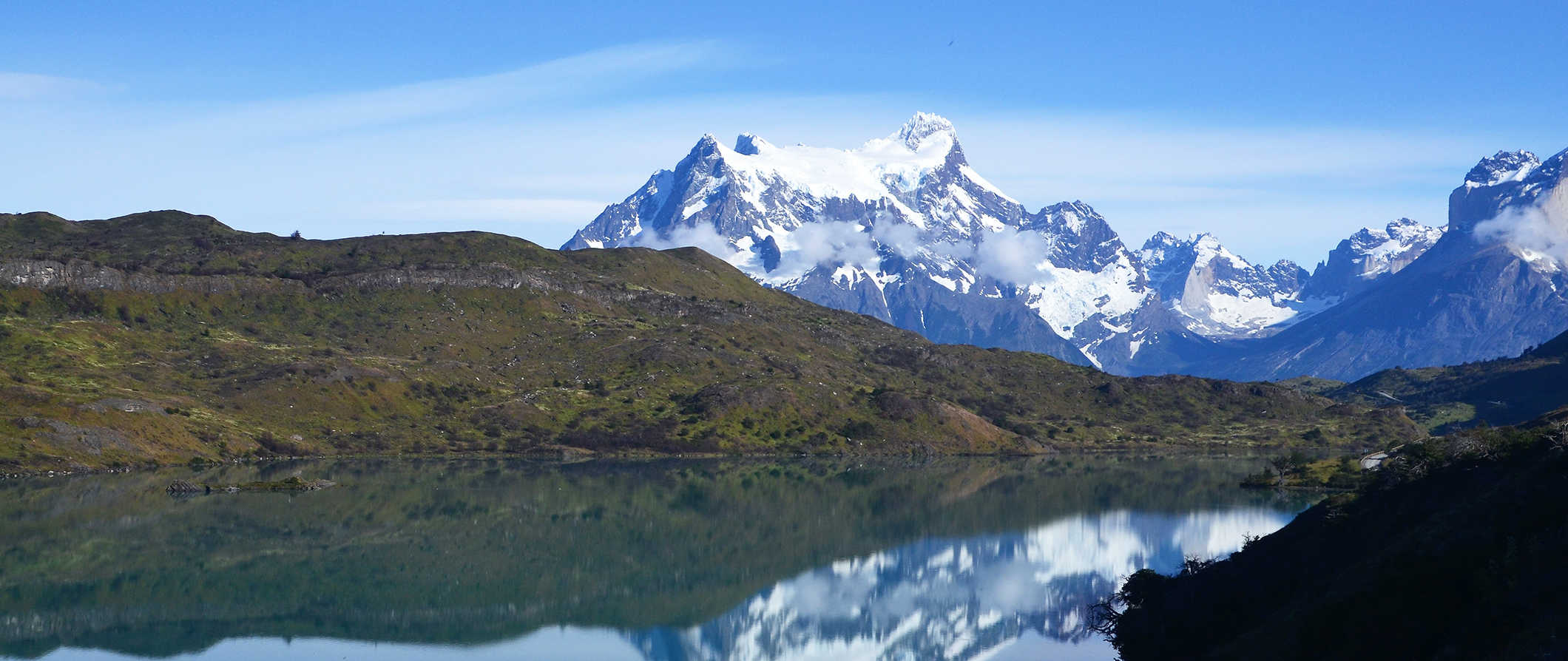
Chile is one of the most slender and longest countries in the world — it’s just 150 miles across at its widest point! From the snow-capped volcanoes of Patagonia and blistering heights of the Andes to world-class wineries and Maoi sculptures of Easter Island , there are a lot of wonderful things to see in Chile.
Traveling to Chile was one of the best experiences I’ve had in South America. It just constantly blew me away. It’s one of the most developed South American countries (the capital, Santiago, is a tech hub for the region), the people were awesome, the food was incredible, and the scenery made me feel in awe of nature.
Not only is there lots to do but the country is budget-friendly, which really rounds it out as a must-see destination.
Use this travel guide to Chile to plan your visit, save money, and make the most out of your trip!
Table of Contents
- Things to See and Do
- Typical Costs
- Suggested Budget
- Money-Saving Tips
- Where to Stay
- How to Get Around
- How to Stay Safe
- Best Places to Book Your Trip
- Related Blogs on Chile
Top 5 Things to See and Do in Chile
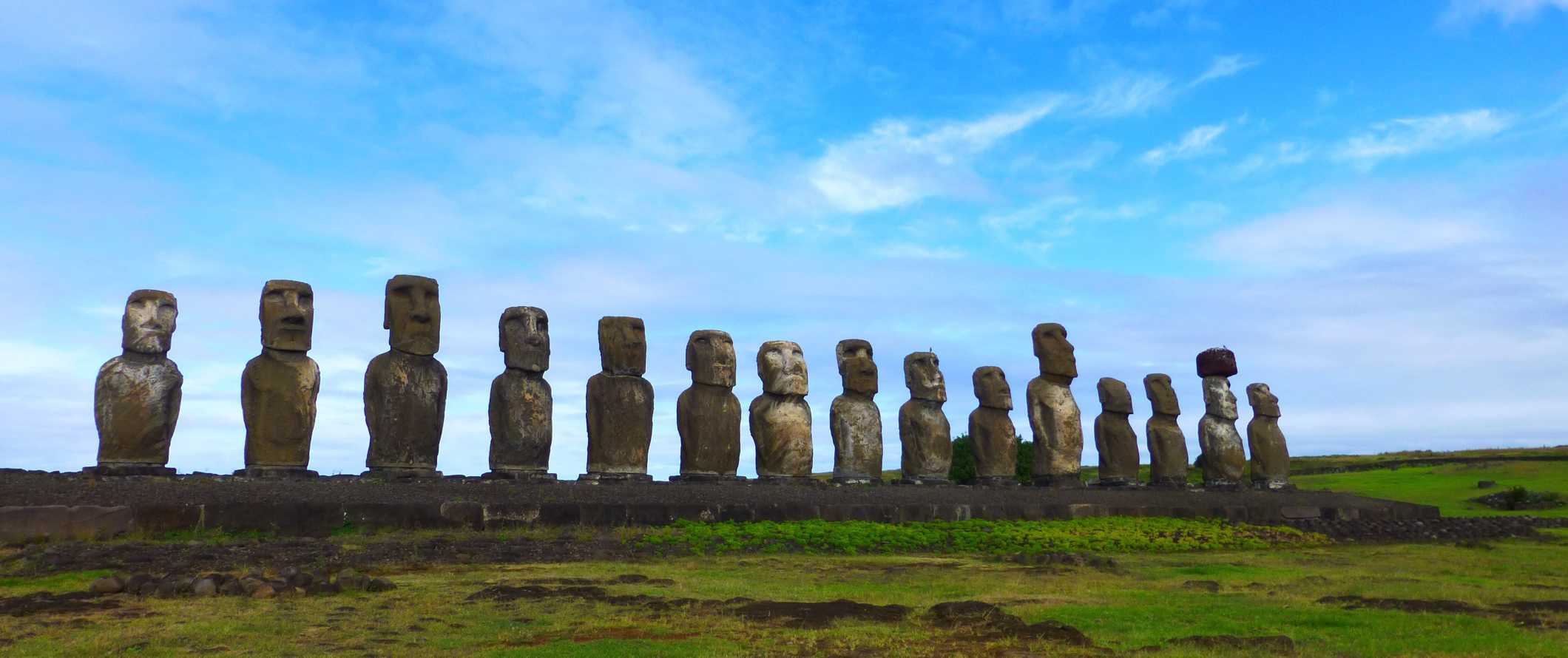
1. See Easter Island
Easter Island, located 3,540 kilometers (2,200 miles) off the coast of Chile, is the most isolated inhabited island on earth and home to the Rapa Nui Polynesian indigenous people that have lived there since 300 CE. Named after explorer Jacob Roggeveen’s ‘discovery’ of the island on Easter Sunday in 1722, this protected UNESCO World Heritage Site is famous for its Moai sculptures (the iconic big faces dotted all over the island). However, there is so much more to the island, including thousands of archaeological sites, volcanic craters and tunnels, pristine beaches, and excellent diving. To explore this magical place, hike around the dramatic cliffs and extinct volcanoes around the Moai archeological sites or around the spectacular Rano Kau crater and the Ana O Keke Cave. Or go sun yourself on Anakena’s beautiful white coral sand beach or Ovahe, a secluded pink sand beach hidden in a little cove with sparkling turquoise waters.
2. Discover Torres del Paine National Park
Torres del Paine lies between the Andes and Patagonian steppe and is made up of snow-clad mountains, glacier lakes, and some of the best hiking in Chile. It also happens to be one of the most beautiful and desolate regions on the planet. There is no end to the scenic views here, including the three rugged, towering peaks of Central, Monzino, and Dagostini as well as the Southern Ice Fields. Be sure to wander around the enchanting Sarmiento Lake and see the Amarga Lagoon and the giant Salto Grande Waterfall. Admission is 29,250 CLP for up to three days for foreigners.
3. Explore Santiago
Chile’s capital is a thriving city and home to a third of the country’s entire population. Founded in 1541, this vibrant capital offers gorgeous panoramas, great restaurants, tasty locally-produced wine, and of course, Barrio Bellavista’s nightlife. There are quite a few must-see attractions in the city: Parque Metropolitano (a large urban park) as well as Cerro San Cristóbal, where you can hike around taking in beautiful views of the city, shouldn’t be missed. The Museum of Human Rights is also a must-visit site, as it chronicles the dark years of Pinochet when thousands of people ‘disappeared’ at the hands of his violent regime.
4. Marvel at San Pedro de Atacama
Located in Chile’s Norte Chico northern region, San Pedro de Atacama is one of Chile’s hottest tourist towns. Literally. Sitting at 2,400 meters (7,874 feet), the ancient town is in the driest desert in the world (it reportedly hasn’t seen rain since 1870). But the rock formations here are stunning, and it’s the perfect place to stargaze. This little town with adobe houses and dirt streets only has 5,000 inhabitants but plenty of tourists visit up to explore the stunning valley landscapes, the Atacama Salt Flats, and the Chaxa and Miniques Lagoons. Don’t miss the famous beautiful jagged geological formations of Valle de la Luna and Valle de la Muerte valleys that can be reached by bicycle from town.
5. Visit colorful Valparaiso
Nicknamed the “Jewel of South America,” this colorful city near Santiago is a mesh of bohemian bars and Victorian architecture along a coastline of sheer cliffs. The laid-back atmosphere and beauty of the area have inspired generations of writers and poets, including poet Pablo Neruda. Be sure to bring your camera because the whole city is painted in vibrant Insta-worthy colors. Take the Ascensor Reina Victoria funicular up to the Concepcion neighborhood and have a cocktail on the hilltop overlooking the city as you try some of the delicious local seafood dishes. Also, be sure to check out two of Chile’s top beaches nearby, the upscale Viña del Mar and the super cool Reñaca.
Other Things to See and Do in Chile
1. see the san marcos cathedral.
The same architect who was responsible for the Eiffel Tower, Alexandre Gustav Eiffel, designed San Marcos Cathedral. The cathedral is in Arica, Chile’s northernmost city, and was built to replace the original cathedral destroyed by an earthquake in 1868. The new cathedral was commissioned in 1876 and is a rare example of Gothic architecture in South America.
2. Get tipsy on a wine tour
Chile’s vineyards have been producing world-class wine for over 400 years. There are plenty of tours available around the country as vineyards stretch the entire length of Chile. I think the best wineries are located near Santiago. Expect to pay around 15,000-20,000 CLP for a basic tour, though fancier tours at more prestigious vineyards can easily be over 55,000-100,000 CLP per person. Most tours last 4-8 hours.
3. Hike a volcano
Chile is home to the world’s tallest active volcano, Ojos del Salado, which lies in the Andes near the Argentine border. Villarica and Osorno are also popular volcanoes (and both lie close to lakes). Most volcanoes in the country have thermal spas at their base too. Experienced hikers can do the trip on their own, though there are plenty of guided tours available for travelers looking for a group tour. Most multi-day tours span 10-14 days and cost millions of pesos. For day trips like the Cajon de Maipo, Osorno Volcano, Termas Colina, and Petrohue Falls, expect to pay 32,000-56,000 CLP per person.
4. Valle de la Muerte
Also known as “Death Valley,” this is an astounding place to hike, go horseback riding, or even go sandboarding. Located in the northeast of the country near San Pedro de Atacama, there are also guided moonlight walks that take you out over the rocky martian landscape. You can rent a sandboard for around 8,300 CLP or go on a sandboard tour for 23,000 CLP per person which includes transportation. There are even tours that sandboard at midnight, using spotlights to light the way (they have a DJ too!). If you’re looking to hike, check out the Corniza Trail. It’s a 7-hour loop that’s relatively easy (many families do it).
5. Santuario de la Naturaleza Valle de la Luna
Also located near San Pedro de Atacama, the “Valley of the Moon” is an otherworldly landscape that is home to stones and sand formations that have developed an extraordinary texture due to thousands of years of winds and flooding. The rock formations look like the surface of the moon, hence the park’s name. It’s a great place to go hiking — just don’t forget to bring water as it can get quite warm. Tours are available for around 26,000 CLP per person.
6. See the El Tatio geysers
A popular tourist attraction, these geysers are incredibly beautiful and well worth a visit as they make up the largest geyser field in the Southern Hemisphere (and they are the third largest in the world). You have to get up around 4am as all the tour companies aim to get you there by sunrise and it’s a 90-minute drive from San Pedro de Atacama. But it’s worth the effort! Bring a swimsuit as there are thermal pools nearby. Tours cost around 33,000-38,000 CLP. You can visit without a tour (admission is 15,000 CLP) but you’ll need to rent your own vehicle to get there.
7. Museo de Bellas Artes
This museum is one of the best in the country. Located in Santiago, it’s home to a wide display of fine art, sculptures, photography, paintings, and digital media. Built in 1910, the building is somewhat small but the architecture is equally as impressive as the collection within (it was built in the Beaux-arts style and has a very Parisian feel to it). Admission is free.
8. Mingle among the wealthy in Viña del Mar
Considered a Chilean Miami, this city next to Valparaiso serves as a hotspot for casinos, upscale cafes, and seaside restaurants. Even if you don’t have money to burn, it’s an interesting place to spend an afternoon people-watching as you wander the beach promenade. You’ll find lots of world-class restaurants here. If you’ve got some money to burn, stay a night!
9. Tour Pablo Neruda’s homes
One of the world’s most famous poets used to call Chile home. With homes in Valparaiso, Santiago, and Isla Negra, this Chilean icon stuffed a lifetime of knick-knacks, literature, and interesting maritime architectural pieces into his three abodes. All of them are open to the public. Even if you’re not a huge fan of his work, his homes alone are an interesting glimpse into Chilean culture as Neruda is a cultural icon and one of the most famous poets of the 20th century. Admission to each home costs around 7,000 CLP and includes an audio-guide system in multiple languages.
10. Get off the beaten path
Some lesser-known treasures worth visiting in Chile are Frutillar (a beautiful lakeside community in southern Chile’s Los Lagos Region), Lonquimay (another gorgeous lakeside town in the Malleco Province of southern Chile’s Araucanía Region), Caleta Tortel (a rugged seaside town with wooden walkways instead of streets in the heart of Patagonia) and Coyhaique (a less pricey Northern Patagonia city that’s a hub for great nature adventures). If you’re looking to beat the crowds, be sure to visit some of these lesser-known destinations.
11. Swim in the world’s largest pool
If you’re looking for some luxury, head to the Crystal Lagoon, home to the world’s largest swimming pool. It’s located at the San Alfonso del Mar resort in Algarrobo, just west of Santiago. The pool is the size of twenty Olympic swimming pools and is the biggest recreational swimming pool in the world, requiring 66 million gallons of water just to fill it! A 1-2 bedroom apartment rental here costs 70,000-120,000 CLP per night.
Chile Travel Costs
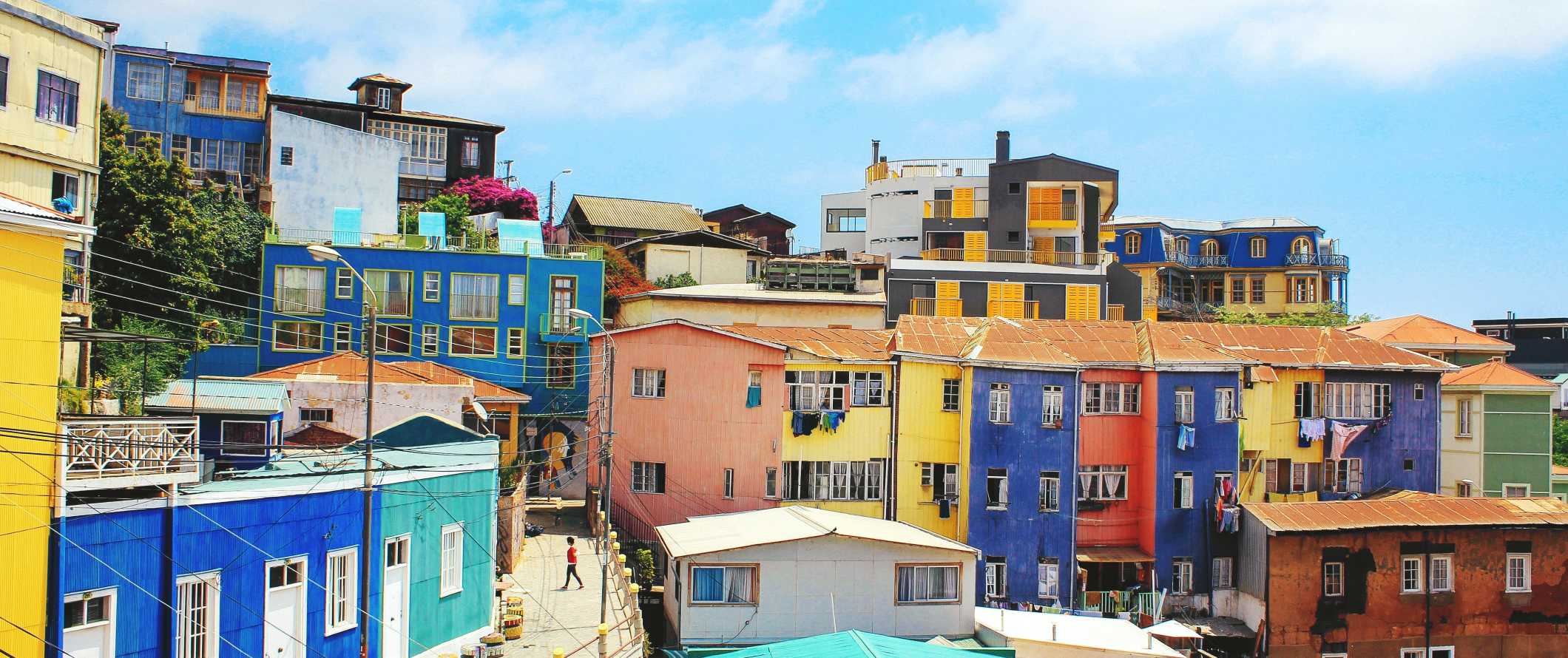
Accommodation – Hostel dorms start around 9,800 CLP per night and private rooms come in at around 22,000-30,000 CLP. Free breakfast and free Wi-Fi are common, and many hostels have self-catering facilities if you want to cook your own food.
Budget hotels are inexpensive in Chile with prices starting at 25,000-35,000 CLP per night for a basic double or twin bed (though expect to pay closer to 55,000 CLP for a nicer budget hotel). Many budget hotels include free breakfast and free Wi-Fi (though not all, so be sure to double-check).
Airbnb is available in the larger cities, with prices as low as 16,000 CLP per night for shared accommodation. If you want a private home or apartment, expect to pay at least 45- 60,000 CLP.
For those traveling with a tent, camping is possible. There are a handful of campgrounds scattered around the country where you can pitch a tent for as little as 5,300-6,000 CLP per night but some with lots of amenities and proximity to the beach are as much as 35,000 CLP.
Food – With an extensive coastline, Chilean cuisine relies heavily on seafood. Cod, salmon, shrimp, lobster, prawn — there are tons of options available. BBQ meat (including alpaca) is particularly popular in the north. Other popular Chilean dishes include churrasco (steak sandwich), machas a la parmesana (clams baked with white wine, parmesan cheese, and butter), and chupe (a hearty seafood stew), and empanadas.
Overall, food in the country isn’t too expensive, though prices get a lot higher the further south you go due to higher transportation costs. Most places in the country offer a set menu for lunch with a starter, main, and drink for about 7,000 CLP. A steak dinner with wine and an appetizer costs around 35,000 CLP while a fast food combo meal (think McDonald’s) costs around 6,000 CLP.
A latte or cappuccino costs 2,300 CLP while a domestic beer can be as cheap as 3,000 CLP. Bottled water is 850 CLP.
Grocery shopping can save you a lot of money if you have access to a kitchen. Expect a week’s worth of groceries to cost around 25,000 CLP depending on your diet. This gets you basic staples like pasta, rice, quinoa, vegetables, and some meat.
As everything must be shipped south, food prices in Patagonia are about 30% higher than elsewhere in the country.
Backpacking Chile Suggested Budgets
How much does it cost to visit Chile? That depends on a few different factors, specifically, what you plan on doing while you’re here as well as your travel style.
On a backpacking budget of 36,000 CLP per day, you can stay in a hostel dorm, cook your own meals, use public transportation to get around, and visit a few museums. If you plan on drinking, you’ll need to add 5,000-8,000 CLP per day.
On a mid-range budget of 105,000 CLP per day, you can stay in a private Airbnb, take buses between destinations, eat out at street stalls and cheap restaurants serving local cuisine, take the occasional taxi, drink at the bar, and do some paid excursions like guided hikes and wine tours.
On a “luxury” budget of 205,000 CLP per day, you can stay in a hotel, hire a rental car to get around, do some guided tours, drink as much as you want, and eat out at nice restaurants for every meal. This is just the ground floor for luxury though. The sky is the limit!
You can use the chart below to get some idea of how much you need to budget daily. Keep in mind these are daily averages – some days you’ll spend more, some days you’ll spend less (you might spend less every day). We just want to give you a general idea of how to make your budget. Prices are in CLP.
Chile Travel Guide: Money-Saving Tips
Chile can be an expensive place to visit, especially if you’re doing a lot of tours and activities. The size of the country also means you can end up spending a lot on transportation. Here are some tips to help you save during your visit:
- Buy wine at the supermarkets – Surprisingly, buying wine from vineyards can be more expensive than in the supermarkets. Buy from the supermarkets if you’re on a tight budget.
- Take the bus – Bus service is inexpensive and efficient here. Night buses are comfortable and a good way to save on a night’s accommodation (they often have lie flat beds).
- Buy food from La Vega Market – La Vega Market in Santiago sells everything you could possibly need and all sorts of local ingredients from Chile and Peru. Shop here for your veggies, fruits, and to get an authentic experience.
- Eat at the local fish markets – In the coastal cities, the local fish markets are usually the best place for a seafood meal. Though the restaurants look cheap and thrown together, they’re delicious!
- Shop around – Haggling is not common and vendors stick to their guns even when called out for price discrimination. So, if you’re quoted an inflated price for being a tourist it’s best to just move around and find alternatives where the prices are already set and visible. Otherwise, you’ll just be wasting your time and energy.
- Ride in a micro or colectivo – Regular buses are for intercity transportation. “Micros” are intracity, and “colectivos” are taxis that drive a specific route once they get four people in the car, and charge a very low rate. If you want to go somewhere, chances are there’s a micro or colectivo that can get you close — just ask a local and they’ll know where to point you.
- Stay with a local – Chile doesn’t have a huge Couchsurfing community, but you can still give it a shot and try to find a host (and get a local friend and a free place to stay). Just be sure to send your requests early!
- Take a free walking tour – There are some great options available when it comes to free walking tours in Santiago, such as Tours 4 Tips or Free Tour Santiago . If you want to explore the city while learning about its history, architecture, and people then be sure to take a free tour. Just remember to tip at the end!
- Stay at a Hola Hostel – Hola Hostels is a network of hostels predominantly in South and Central America. They offer 10% off to their members, as well as other local discounts for food and activities. Joining is free, and their hostels are also committed to environmentally sustainable practices.
- Travel in the shoulder season – Prices in the country are cheaper outside of the high season (which is November-March). This includes admission to parks like Torres del Paine, which charge double during the busy summer months. Beat the crowds and save some money by skipping the high season.
- Bring a water bottle – LifeStraw is a reusable water bottle with a built-in filter that you can use instead of buying single-use plastic bottles. It removes bacteria, parasites, micro plastics, and other contaminants so it’s perfect for cities as well as if you’re out hiking in nature.
Where to Stay in Chile
Hostels can be found in all the major destinations across Chile. Here are my recommended places to stay if you’re on a budget:
- Hostal Forestal (Santiago)
- Poker Hostel (Santiago)
- Hostal Po (Valparaiso)
- Hostal Rural (San Pedro de Atacama)
- Kona Tau (Easter Island)
- Chili Kiwi Lakefront (Pucon)
How to Get Around Chile
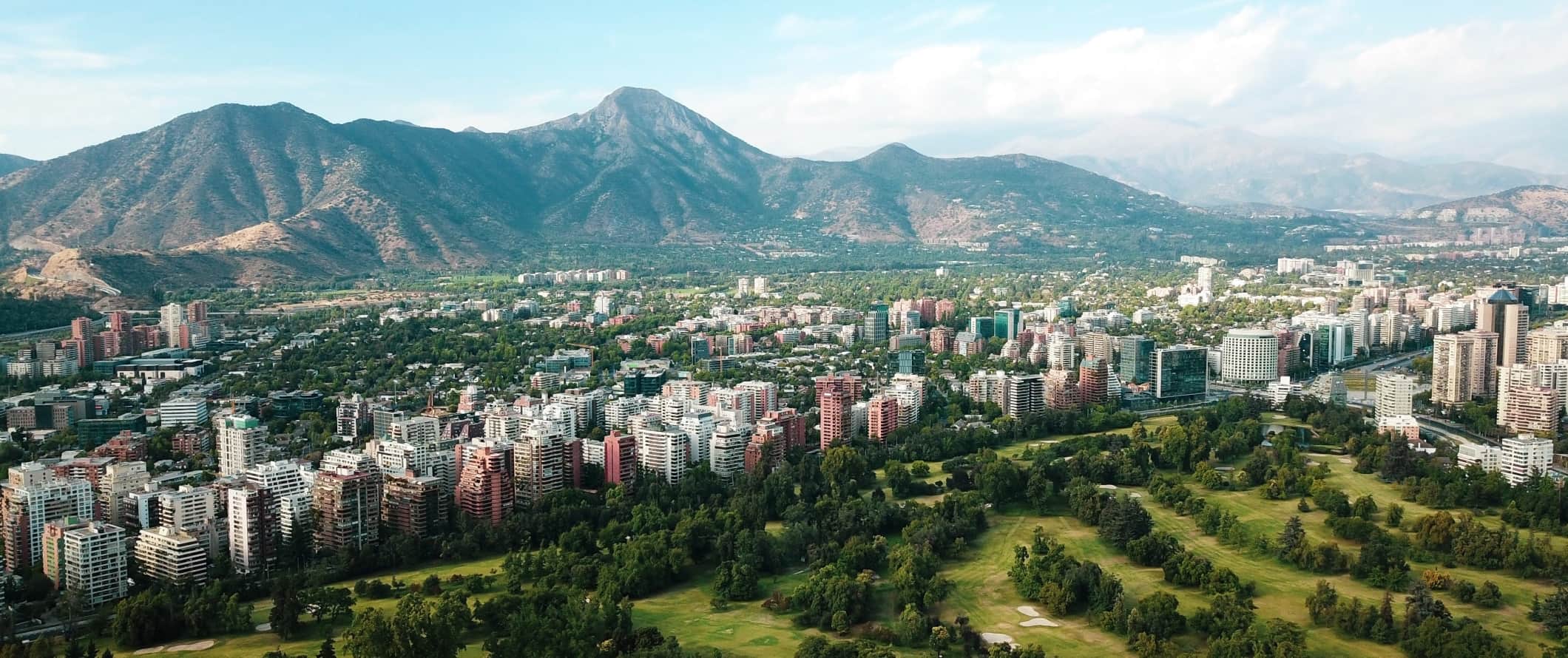
Public transportation – Public transportation, especially in Santiago, is reliable and affordable. In Santiago, you need to purchase a refillable bus pass (BIP Card) for your journeys as individual tickets are no longer available. The card costs around 1,550 CLP with the average ride costing around 700 CLP (prices vary depending on the time of day). BIP cards need a minimum initial credit of 1,000 CLP. You have to pay for your card and top-ups in cash; non-Chilean credit cards are not accepted.
Bus – For intercity travel, buses are the cheapest way to get around — and they are nice too! Reclining seats are common and many even recline almost all the way down. Additionally, some night buses even have a curtain between the seats so you can have a little privacy from your neighbor. The best companies to use are Turbus and Pullman.
Expect to pay at least 38,000 CLP per person from Santiago to Antofagasta. From Santiago to Valparaiso, bus tickets cost around 6,000–10,000 CLP each way. For something like the cross-country journey from Santiago to Punta Arenas, expect to pay at least 60,000 CLP for the 40-hour bus ride (this is an incredibly long distance so you have to change at Osorno or choose flying).
Train – Traveling by train in Chile is virtually non-existent. Much of the tracks have been left to decay beyond repair outside the central region of the country. Trains link Santiago with Curico, Talca, Linares, and Chillan with air-conditioned cars but that’s the extent of Chile’s train infrastructure. You can visit trencentral.cl for the available routes and prices.
Flying – Flying around the country is surprisingly affordable. Expect to pay around 28,000-35,000 CLP for the two-hour flight from Santiago to Antofagasta. Prices are similar for trips from Santiago to:
- La Serena (one hour)
- Calama (two hours)
- Arica (two hours forty-five minutes)
- Concepcion (one hour)
- Puerto Montt (one hour forty minutes)
For a flight between Santiago and Puerto Natales, expect to pay around 40,000-55,000 CLP. Round-trip flights from Santiago to the remote Easter Island cost around 240,000-300,000 CLP.
Car rental – Driving in Chile is much easier (and safer) than driving in other South American countries. Many of the highways are well-maintained thanks to their liberal use of toll roads. While driving in Santiago can be a little chaotic, once you get out of the city things generally become much easier. Expect to pay around 178,000 CLP for a one-week rental. Drivers need to be at least 21 years old.
For the best car rental prices, use Discover Cars .
When to Go to Chile
Since Chile is in the southern hemisphere, the summer months are December, January, and February. With landscapes ranging from desert to tundra, the weather and temperatures can vary tremendously here. Expect daily highs around 28-30°C (82-86°F) in Santiago, while the highs in Torres del Paine are closer to 13°C (55°F).
Winter is not a particularly great time to visit as the temperatures can drop below freezing, with snowfall common in certain regions. Daily lows reach -15 °C (5 F), making it rather unpleasant to be out and about during the day. Unsurprisingly, you can see why most travelers visit during the summer.
Fortunately, the shoulder season is also a fantastic time to visit Chile as you’ll be able to beat the crowds and save yourself some money. It’s an especially good time to visit if you plan on visiting Torres del Paine as there will be fewer hikers here and the park admission will be much cheaper. November and March are usually included in the high season, so aim for late October or early April. The weather won’t be perfect, but it’s a good compromise for travelers looking to dodge the crowds.
How to Stay Safe in Chile
Chile is considered a safe destination and generally ranks as one of the safest on the continent. That said, crimes still do occur so you’ll want to take some precautions during your trip. The most common crimes in Chile are petty theft and bag snatching. Since these are crimes of opportunity, you’ll always want to make sure your possessions are secure. Be extra vigilant when riding the bus and when you’re in areas popular with tourists.
When taking the bus (especially the night bus) make sure you don’t have any valuables in your checked bag. Additionally, keep any valuables secure and out of reach from any would-be pickpockets.
If you’re enjoying the nightlife of Santiago, keep an eye on your drink as drink-spiking can occur.
Be sure to read about the common travel scams to avoid here .
Earthquakes are also common enough in Chile that you’ll want to make sure you are prepared should one occur. Know where your emergency exits are in your accommodation as well as any local evacuation locations for major emergencies. If you have a map downloaded on your phone, save the location of the nearest hospital and airport as well, just in case.
If you need emergency services, dial 113 for assistance.
The most important piece of advice I can offer is to purchase good travel insurance. Travel insurance will protect you against illness, injury, theft, and cancellations. It’s comprehensive protection in case anything goes wrong. I never go on a trip without it as I’ve had to use it many times in the past. You can use the widget below to find the policy right for you:
Chile Travel Guide: The Best Booking Resources
These are my favorite companies to use when I travel. They consistently have the best deals, offer world-class customer service and great value, and overall, are better than their competitors. They are the companies I use the most and are always the starting point in my search for travel deals.
- Skyscanner – Skyscanner is my favorite flight search engine. They search small websites and budget airlines that larger search sites tend to miss. They are hands down the number one place to start.
- Hostelworld – This is the best hostel accommodation site out there with the largest inventory, best search interface, and widest availability.
- Booking.com – The best all around booking site that constantly provides the cheapest and lowest rates. They have the widest selection of budget accommodation. In all my tests, they’ve always had the cheapest rates out of all the booking websites.
- Get Your Guide – Get Your Guide is a huge online marketplace for tours and excursions. They have tons of tour options available in cities all around the world, including everything from cooking classes, walking tours, street art lessons, and more!
- SafetyWing – Safety Wing offers convenient and affordable plans tailored to digital nomads and long-term travelers. They have cheap monthly plans, great customer service, and an easy-to-use claims process that makes it perfect for those on the road.
- LifeStraw – My go-to company for reusable water bottles with built-in filters so you can ensure your drinking water is always clean and safe.
- Unbound Merino – They make lightweight, durable, easy-to-clean travel clothing.
- Top Travel Credit Cards – Points are the best way to cut down travel expenses. Here’s my favorite point earning credit cards so you can get free travel!
Chile Gear and Packing Guide
If you’re heading on the road and need some gear suggestions, here are my tips for the best travel backpack and for what to pack!
The Best Backpack for Travelers
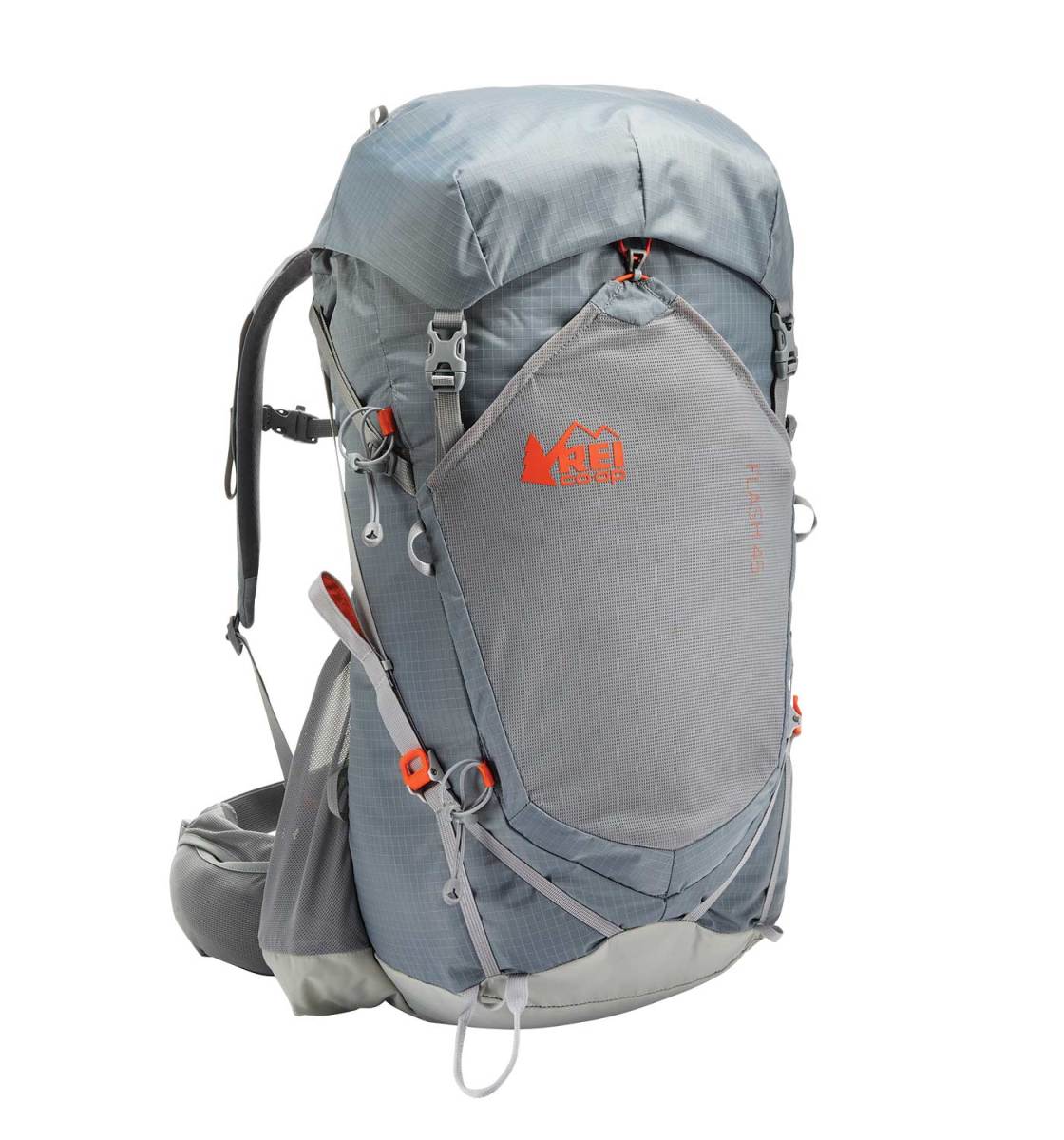
If you want something different, refer to my article on how to choose the best travel backpack for tips on picking a pack and other backpack suggestions.
What to Pack for Your Trip
- 1 pair of jeans (heavy and not easily dried, but I like them; a good alternative is khaki pants)
- 1 pair of shorts
- 1 bathing suit
- 5 T-shirts ( Unbound Merino is my preferred company. If you’re a member of TNN+, you can get 15% off your purchase )
- 1 long-sleeved T-shirt
- 1 pair of flip-flops
- 1 pair of sneakers
- 6 pairs of socks (I always end up losing half)
- 5 pairs of boxer shorts (I’m not a briefs guy!)
- 1 toothbrush
- 1 tube of toothpaste
- 1 package of dental floss
- 1 small bottle of shampoo
- 1 small bottle of shower gel
Small Medical Kit (safety is important!!!)
- Hydrocortisone cream
- Antibacterial cream
- Hand sanitizer (germs = sick = bad holiday)
Miscellaneous
- A key or combination lock (safety first)
- Zip-lock bags (keeps things from leaking or exploding)
- Plastic bags (great for laundry)
- Universal charger/adaptor (this applies to everyone)
- LifeStraw (A water bottle with a purifier)
Female Travel Packing List I’m not a woman, so I don’t know what a woman wears, but Kristin Addis, our solo female travel guru, wrote this list as an addition to the basics above:
- 1 pair of stretchy jeans (they wash and dry easily)
- 1 pair of leggings (if it’s cold, they can go under your jeans, otherwise with a dress or shirt)
- 2-3 long-sleeve tops
- 2-3 T-shirts
- 3-4 spaghetti tops
- 1 light cardigan
- 1 dry shampoo spray & talc powder (keeps long hair grease-free in between washes)
- 1 hairbrush
- Makeup you use
- Hair bands & hair clips
- Feminine hygiene products (you can opt to buy there too, but I prefer not to count on it, and most people have their preferred products)
For more on packing, check out these posts:
- What I Pack For My Travels
- The Ultimate List For Female Travelers
- How to Choose and Buy the Right Backpack
Chile Travel Guide: Related Articles
Want more info? Check out all the articles I’ve written on Chile travel and continue planning your trip:
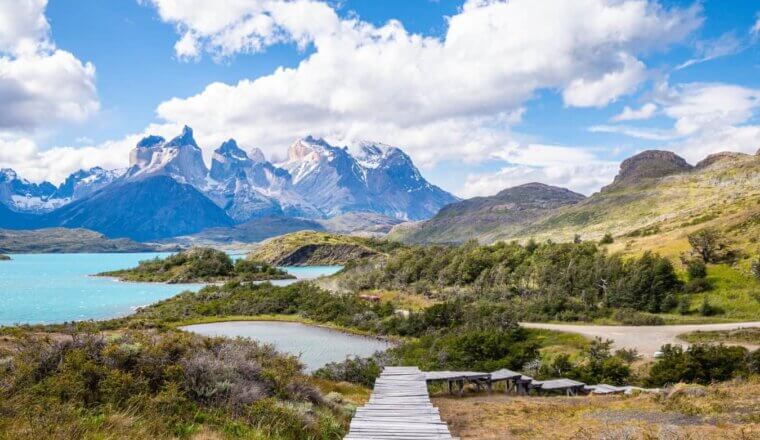
Is Chile Safe to Visit?
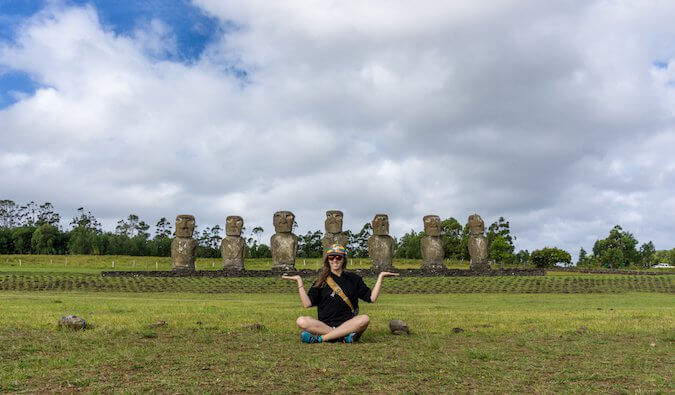
How to Travel Easter Island on a Tight Budget
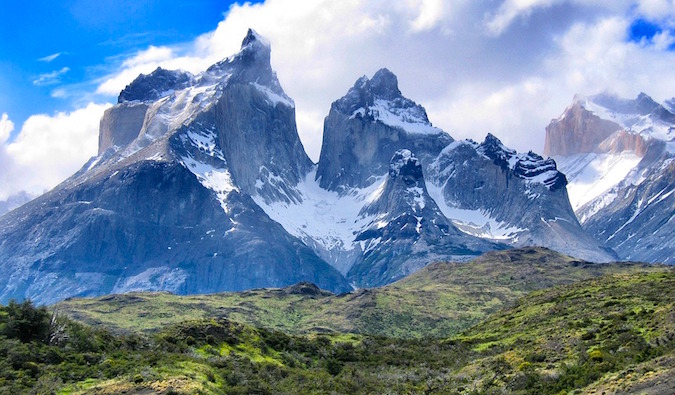
18 of the Best Spots in Patagonia
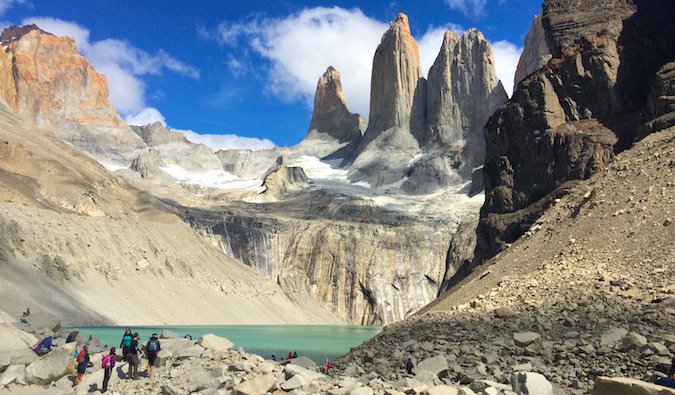
Patagonia: Thoughts on Getting Offline and Trying to Camp
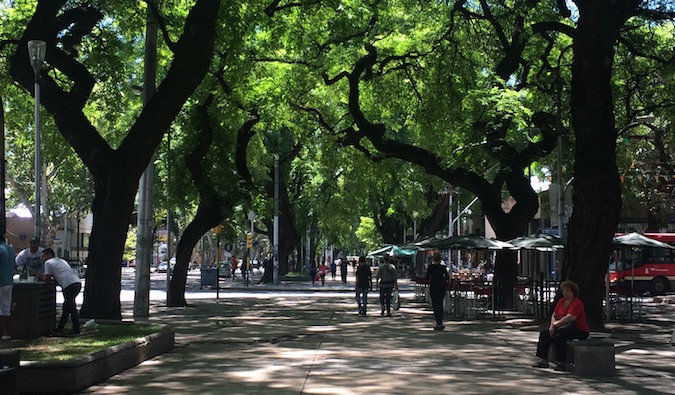
12 Ways to Save Money in Argentina
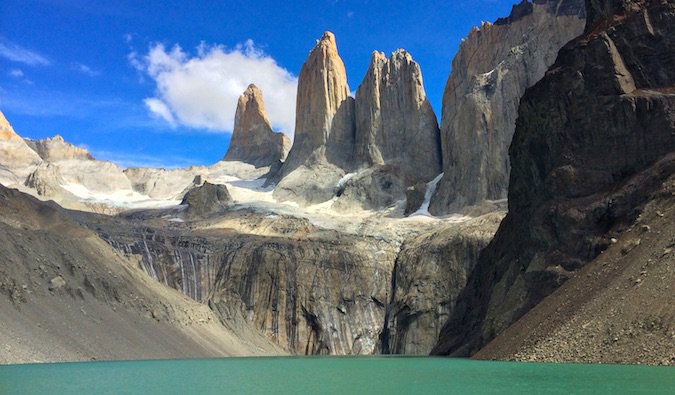
16 Amazing Photos from My Visit to Torres Del Paine
Get my best stuff sent straight to you, pin it on pinterest.
- Where To Stay
- Transportation
- Booking Resources
- Related Blogs
- South America
- 20 Must Visit Attractions In...
20 Must-Visit Attractions in Chile

With some 2,600 miles (4,300 kilometers) separating the southern tip of Patagonia from the northern border of Peru, Chile has a myriad of worthwhile attractions across a variety of geographical zones. Starting from the south, let’s work our way north on a tour of Chile’s 20 best tourist destinations.
1. isla magdalena.
Got a thing for penguins? Then look no further than Isla Magdalena, located just off the coast of Punta Arenas. Hundreds of the cute little critters can be seen up close and personal as they waddle around and huddle up together.
Isla Magdalena, Chile

A penguin in Isla Magdalena| © Jose Luis Hidalgo R. / Flickr
2. Torres del Paine

3. Villa O'Higgins to Argentina

5. Carretera Austral

A very long stretch of isolated gravel road, cruising down the Carretera Austral is the quintessential off-the-beaten-track experience. There are heaps of national parks, hiking trails and campsites to stop off at along the way.
Carretera Austral, Chile

Ruta 7, Carretera Austral, Hornopirén. | © Fernando Valenzuela / Flickr

It seems to rain every day on this mystical green island in northern Patagonia. But don’t worry because there are plenty of amazing UNESCO churches and exciting boating expeditions to make up for it.
Chiloé, Los Lagos Region, Chile

Isla Mechuque, Chiloé | © Tetraigofotos / Flickr

7. Easter Island

Just a few thousand miles offshore lies one of the world’s most isolated inhabited islands. Easter Island is most famous for its mysterious Moai statues , but it’s got plenty of great scenery and fascinating indigenous culture as well.
Easter Island, Valparaiso Region, Chile

Moai statues on Easter Island | © myeviajes / Pixabay
8. Puerto Varas

A charming little German settlement with a distinctly European feel, Puerto Varas is set around a beautiful lake and has numerous nearby waterfalls, volcanoes, and forests to explore.
Puerto Varas, Los Lagos Region, Chile

Puerto Varas | © Murray Foubister / Flickr
9. Valdivia

This quaint little student town boasts stunning natural surroundings, a vibrant cultural scene, and a busy fish market right on the lake where sea lions hang out to gobble up any leftover scraps.
Valdivia, Los Ríos Region, Chile

Valdivia | © Pablo Meneses / Flickr

One of the most pleasant towns in the Chilean Lake District, Pucón gets a lot of love for its numerous outdoor adventure activities and the chilled lakeside atmosphere.
Pucón, Araucania, Chile

Playa Negra, Pucón, Chile | © Carlos Adampol Galindo / Flickr
11. Volcano Villarica
Those with the energy and bravado should consider scaling Villarica, the mammoth volcano that towers over Pucón. It requires a strenuous eight-hour climb with crampons and ice picks, but the views from the top are so worth it.
Volcano Villarica, Panguipulli, Los Ríos Region, Chile

Villarica | © Omar Burgos / Flickr
12. Santiago

No trip to Chile would be complete without a stopover in the enormous ciudad capital . Peruse some amazing museums , splurge on world-class fine dining , or just enjoy a few drinks with newfound friends in one of South America’s most exciting cities.
Santiago, Santiago Metropolitan Region, Chile

Santiago | © sergom5 / Pixabay
13. Valparaiso

This trendy little seaport town has earned the reputation of being a true bohemian paradise. With jaw-dropping street art adorning almost every wall, Valparaiso is the place to be for hip young millennials.
Valparaiso, Valparaiso Region, Chile

Valparaiso, Chile | © amira_a / Flickr
The wine regions
Most of Chile’s wine is produced within just a few hours’ drive of Santiago. Throughout the region , a huge number of world-class vineyards offer wine tasting tours where a copious amount of vino is liberally dispersed among thirsty travelers. Salud!

14. La Serena
Heading north of the capital now, and the first place worth stopping is the pleasant seaside town of La Serena. Head for nearby Islas Damas to hike, swim or snorkel among adorable penguins and sea lions.
La Serena, Coquimbo Region, Chile

Islas Damas | © Gernot Ruthofer / Flickr
15. Elqui Valley

A few hours inland from La Serena lies the tranquil Elqui Valley, Chile’s major pisco -producing region. Apart from indulging in the local produce, there are valleys to explore and some spectacular stargazing opportunities on offer.
Elqui Valley, Chile

Elqui Valley | © Leonora (Ellie) Enking / Flickr
16. San Pedro de Atacama

It’s a long way north to San Pedro de Atacama, a small town in the middle of the desert that serves as the main tourism hub for this remarkable region . Visit steaming hot geysers, bizarre rock formations, and high altitude lagoons surrounded by snow-capped volcanoes.
San Pedro de Atacama, Coquimbo, Región de Coquimbo, Chile

San Pedro de Atacama | © poLiMetralleta / Pixabay
17. Chuquicamata

Go on a tour of Chuquicamata, one of the world’s biggest open-pit copper mines. The free guided tour (these people make so much money that they don’t bother to charge) lasts several hours and provides a fascinating insight into the scale of this lucrative industry.
Chuquicamata, Calama, Antofagasta Region, Chile

Chuquicamata copper mine, Calama, Chile | © Peter Collins / Flickr
18. Iquique
Fancy a beach break? Then check out Chile’s most happening seaside resort, which is brimming with revelers during holiday periods. For something different, the nearby ghost towns of Humberstone and Santa Laura give an intriguing insight into what life was like back in the 19th century.
Iquique, Tarapacá Region, Chile

Humberstone | © Tefy fd / WikiCommons

The end of the road, or the beginning of your coming from Peru, Arica has a pleasant surfable beach, some lovely colonial architecture, and a great mirador with a war museum that overlooks the coast.
Arica, Arica y Parinacota Region, Chile

Arica | © Capablazab / WikiCommons
Since you are here, we would like to share our vision for the future of travel - and the direction Culture Trip is moving in.
Culture Trip launched in 2011 with a simple yet passionate mission: to inspire people to go beyond their boundaries and experience what makes a place, its people and its culture special and meaningful — and this is still in our DNA today. We are proud that, for more than a decade, millions like you have trusted our award-winning recommendations by people who deeply understand what makes certain places and communities so special.
Increasingly we believe the world needs more meaningful, real-life connections between curious travellers keen to explore the world in a more responsible way. That is why we have intensively curated a collection of premium small-group trips as an invitation to meet and connect with new, like-minded people for once-in-a-lifetime experiences in three categories: Culture Trips, Rail Trips and Private Trips. Our Trips are suitable for both solo travelers, couples and friends who want to explore the world together.
Culture Trips are deeply immersive 5 to 16 days itineraries, that combine authentic local experiences, exciting activities and 4-5* accommodation to look forward to at the end of each day. Our Rail Trips are our most planet-friendly itineraries that invite you to take the scenic route, relax whilst getting under the skin of a destination. Our Private Trips are fully tailored itineraries, curated by our Travel Experts specifically for you, your friends or your family.
We know that many of you worry about the environmental impact of travel and are looking for ways of expanding horizons in ways that do minimal harm - and may even bring benefits. We are committed to go as far as possible in curating our trips with care for the planet. That is why all of our trips are flightless in destination, fully carbon offset - and we have ambitious plans to be net zero in the very near future.

Guides & Tips
Stay curious: experience chile from your living room.

Places to Stay
The best hotels to book in puerto natales, chile.

Meet the Young Female Scientist From Chile Who Discovered Three Planets

Health & Wellness
Enhancing wellbeing in nature: five of the world's best national parks.

The Best Hotels in La Serena, Chile, for Every Traveler

Hotels in Chile Where You Can Sleep Under the Stars

5 Chilean Musicians Shaping a New Urban Scene

Chilean Artists Remember Victims of Dictatorship Through Virtual Portraits

The Unstoppable Rise of Mon Laferte: An Interview With the Chilean Musician

The Best Hotels in Punta Arenas, Chile

See & Do
Explore puerto williams: the earth’s southernmost city.

The Best Resorts to Book in Chile
Culture trip spring sale, save up to $1,100 on our unique small-group trips limited spots..

- Post ID: 1360436
- Sponsored? No
- View Payload

Touropia Travel Experts
Discover the World
17 Top Attractions & Things to Do in Chile

This skinny, narrow country snaking down the coast of South America is easily one of the most diverse places in the continent. The lava-fueled volcanoes, sun-soaked beaches, and massive glaciers are just a few of the extreme landscapes you’ll find in Chile.
If you’re looking to spend any amount of time in the outdoors, then you’ll be pleasantly surprised at the sheer number of things to do in Chile, you’ll have at your disposal. Among the top attractions are the world’s driest desert, spectacular scenery of glaciers and fjords, and the many volcanoes along the Pacific “ring of fire”. Chile is also an excellent destination for hiking, surfing, paragliding, and swimming.
No matter what you’re interested in seeing, the breathtaking natural beauty of this pristine country is guaranteed to leave a lasting impression.
17. Marble Caves
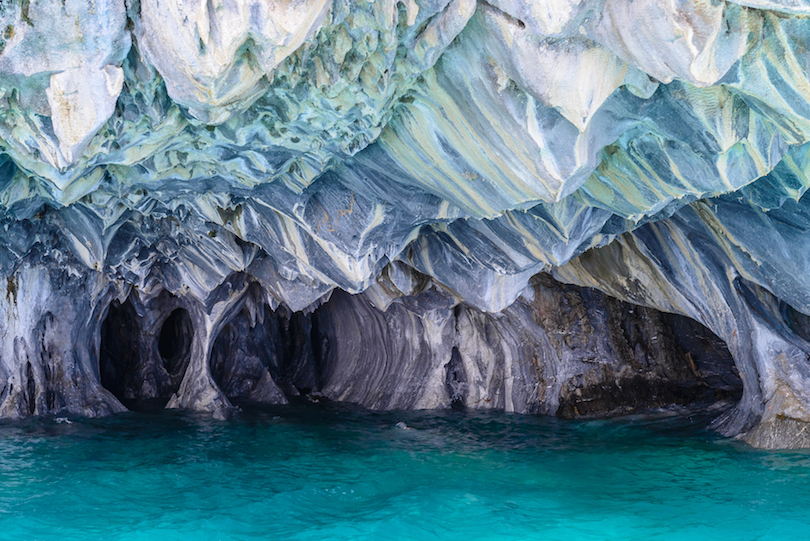
With swirls of blues, greens, blacks, and yellows, the Marble Caves is one of Chile’s most extraordinary natural wonders. This intricate cave system is made up of solid marble and was carved over thousands of years by water erosion. Juxtaposed against the bright turquoise waves of the lake, it’s a spectacular sight you need to see to believe.
The Marble Caves are located in General Carrera Lake, the biggest lake in the country. You will need to join a boat tour or hire a kayak if you want to see the caves up close and personal.
16. Bahia Inglesa
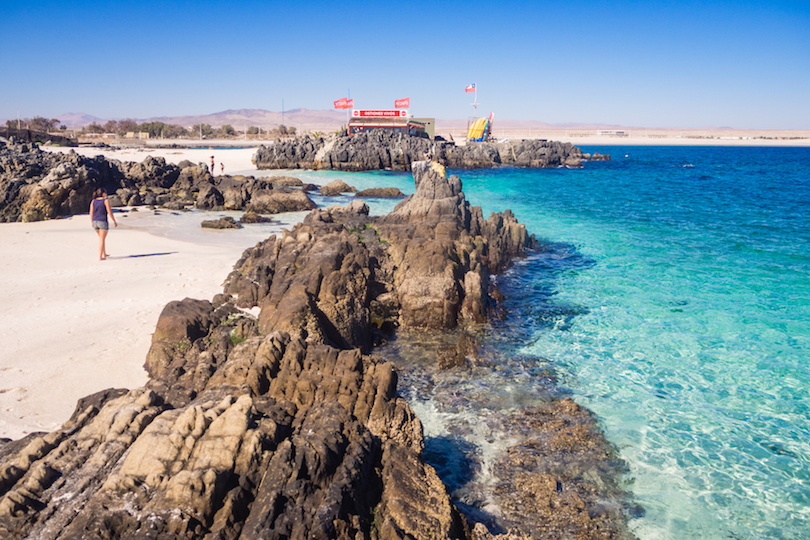
Treat yourself to a relaxing beach vacation with a trip to Bahía Inglesa. Located near the Port of Caldera, this coastal village has everything you could possibly want – white-sand beaches, warm waters, and plenty of shops and restaurants to keep you entertained.
While many people come to sunbathe on the beach, Bahía Inglesa also caters to those looking to add a bit more adventure to their trip. Spend the afternoon windsurfing on the rolling waves or diving deep beneath the ocean’s surface.
15. Isla Magdalena
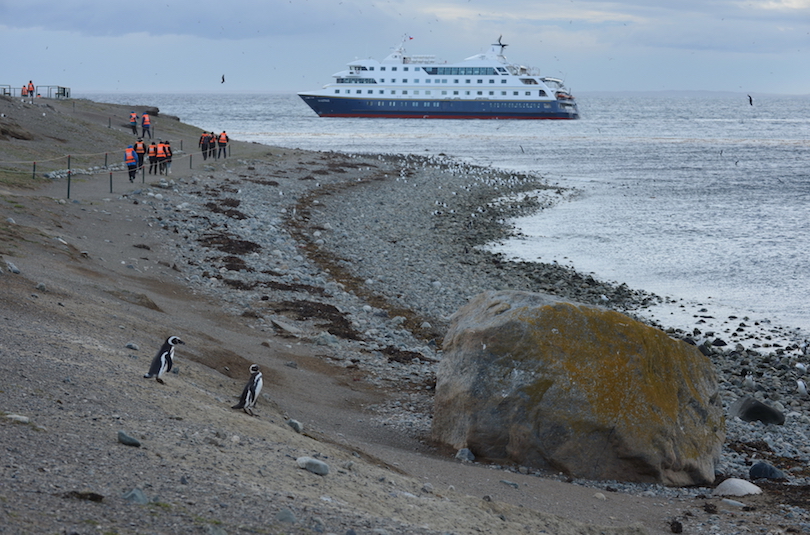
Come to Isla Magdalena and visit a few of Chile’s most adorable residents! This pint-sized island is home to the Magellanic penguin colony; the birds come to nest on the shores during the breeding season. Between September and March, you’ll be able to see more than 120,000 penguins (many of which are incredibly friendly to humans).
While you can’t touch them, there is a designated walkway that takes you around their natural habitat. Even though you should keep your distance, you still should be able to snap a few epic photos of these curious, waddling creatures.
14. Mamalluca Observatory
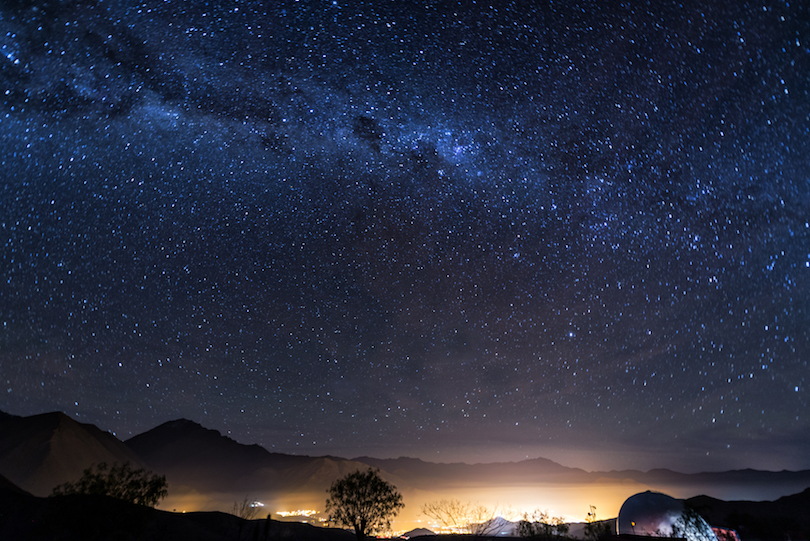
Take a star-studded journey across different galaxies, planets, and constellations with a fascinating tour of the Mamalluca Observatory. The observatory is located high in the mountains in the Region of Coquimbo, where it’s protected against the noisy light pollution of the city. The optimal conditions of the sky mean you’ll be able to see far past our own planet.
Take a close look at Saturn’s rings, or gaze at the craters and crevices on the moon. You might also get to see the Omega Nebula, which is located 6,000 lightyears away from earth. The observatory’s knowledgeable guides also do a great job of explaining the different astronomical features.
13. Paragliding in Iquique
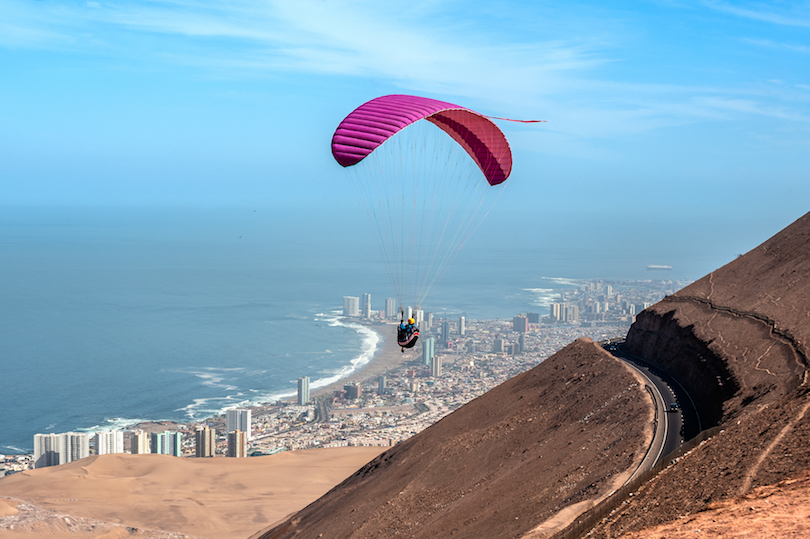
The beachside city of Iquique is believed to be one of the best paragliding destinations in the world. With miles of coastline and unparalleled views of the ocean, Inquique’s natural landscape is breathtaking on its own. But when you’re floating hundreds of feet in the air, it’s surprisingly even more beautiful than from the shores.
You’ll find several paragliding companies located throughout the city. Whether it’s your first time or 50th time, you’ll never be bored while you’re paragliding around Chile.
12. Robinson Crusoe Island
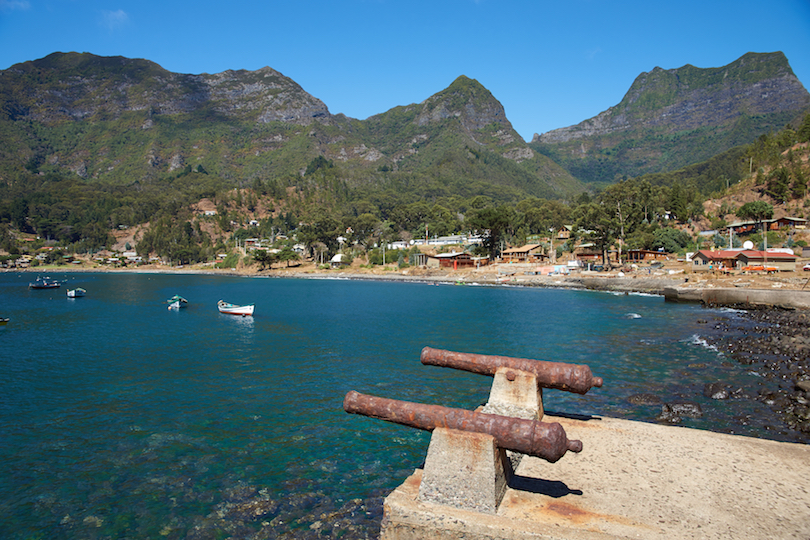
Situated off the sparkling Chilean coast is the remote Robinson Crusoe Island. It’s the second-largest island in the Juan Fernandez Islands, although there are only a few hundred inhabitants. It has remained relatively untouched by tourism, except for scuba divers interested in exploring the sunken WWI shipwreck off the coast.
Robinson Crusoe Island is most notably known as the island that inspired Daniel Defoe’s novel, Robinson Crusoe. Although the book was set in the Caribbean, it is believed to be written about Alexander Selkirk, who was marooned on Robinson Crusoe Island from 1704 to 1709.
11. Surfing in Pichilemu
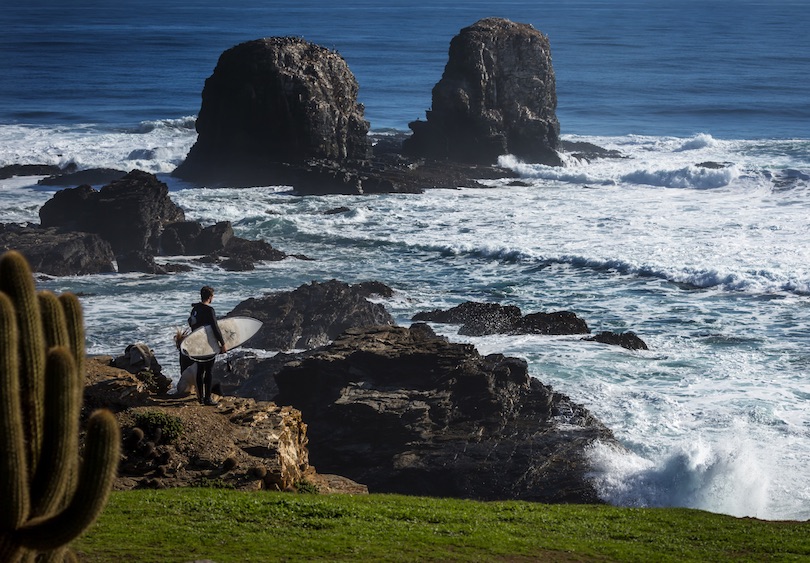
The picturesque beach town of Pichilemu is a surfer’s paradise. While the water isn’t as warm as it is in other parts of the world, the barreling waves make ideal conditions for surfers of all skill levels.
If you’re just hopping on a board for the first time, you might consider learning at Playa Principal de Pichilemu. The calm, shallow waves and abundance of lifeguards make it an ideal place to learn how to surf. Most advanced surfers will want to ride the waves at Infernillo or Punta de Lobos. Here, waves can reach up to 50-feet high.
10. Hiking Volcan Villarrica
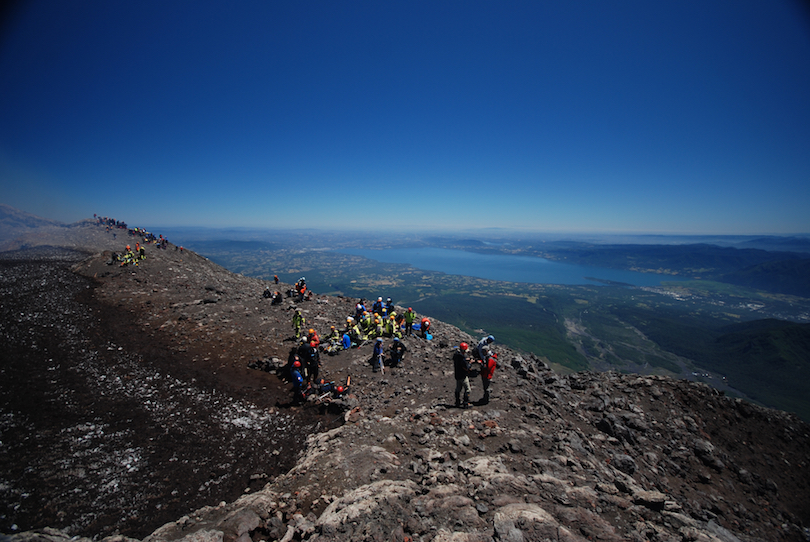
Hiking Volcán Villarrica is not for the faint of heart. It’s one of the most active volcanoes in all of South America, with the most recent eruption occurring in 2015. If you’re up for the challenge, hiking to the summit will be one of the most memorable activities you’ll ever experience.
From start to finish, it takes roughly nine hours to complete the hike. The icy hike to the peak can be very steep and requires crampons, ice picks, and even gas masks (to protect yourself from the sulphuric fumes.)
9. Churches of Chiloé
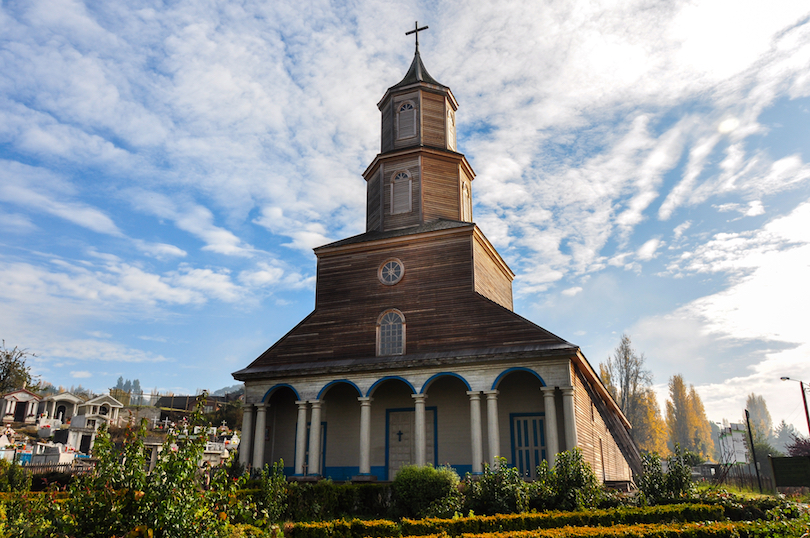
Dotted along the coast of Chile are 70 churches known as the Churches of Chiloé. Many of the churches were built by Jesuits, who came over from Spain in the 18th and 19th-centuries. But unlike traditional European architecture, these churches were constructed with timber. However, the Churches of Chiloé are still pristine examples of Europe’s influence on Latin America.
Although you may not have enough time to visit every single church, there are a few that you should miss. The Church of Quinchao is one of the largest in the area. You should also plan to visit the bright yellow Church of San Francisco and the three-peaked Church of Tenaún.
8. Valle de la Luna
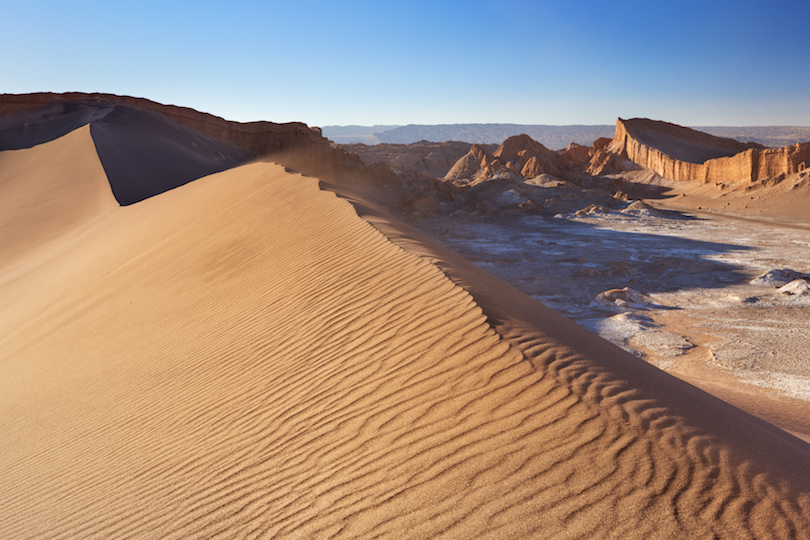
The stunning Valle de la Luna looks as if you’re walking on the surface of another planet. This lunar landscape is located in the heart of the Atacama desert and is comprised of giant dunes, jagged mountains, and unique rock formations.
For spectacular views of Valle de la Luna, make sure to stay for sunset. As the sun disappears behind the mountainous backdrop, the sky is painted in bright shades of orange, pink, and purple.
7. Cerro San Cristobal
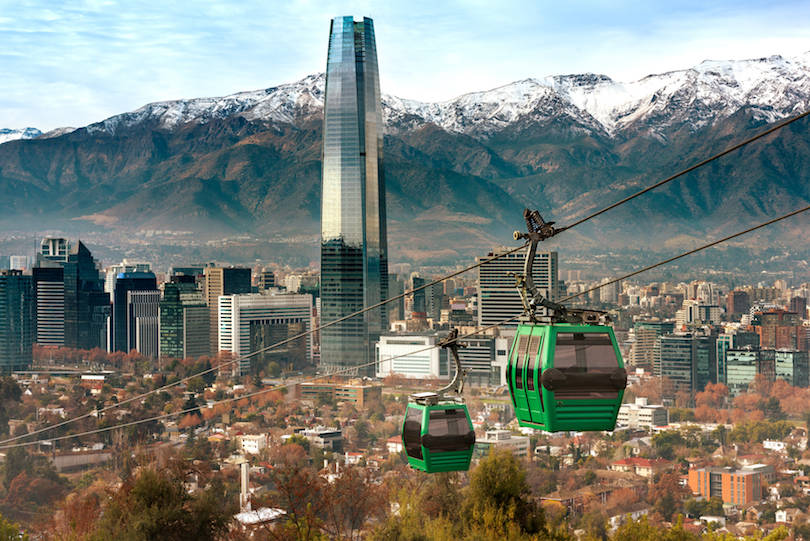
Dominating the Santiago skyline is Cerro San Cristobal, one of Chile’s most recognizable natural landmarks. Named after St. Christopher, this tree-lined hill boasts some of the best views in the entire city. From the summit, you’ll be able to look down on the bustling streets of Santiago.
It takes 45-minutes to walk to the top of the hill. There’s also a cable car that can take you to the summit. Besides enjoying the sweeping views, you can also take a stroll through Santiago Metropolitan Park or a dip in one of the two outdoor pools.
6. San Rafael Glacier
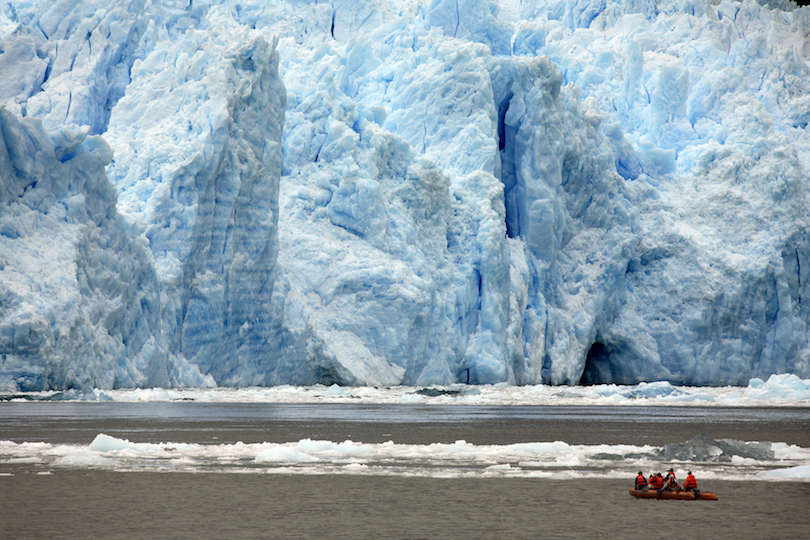
The San Rafael Glacier is one of the largest ice caps in the entire Northern Patagonian ice fields. Unlike other glaciers, San Rafael Glacier is surrounded by lush green jungles, which creates an unusual backdrop against the stark blue colors of the ice.
It’s only accessible by water, which means you’ll need to plan ahead of time if you want to visit. However, many scientists believe that it might disappear entirely in just a few years, so it’s best to visit the San Rafael Glacier as soon as you can.
5. Geysers del Tatio
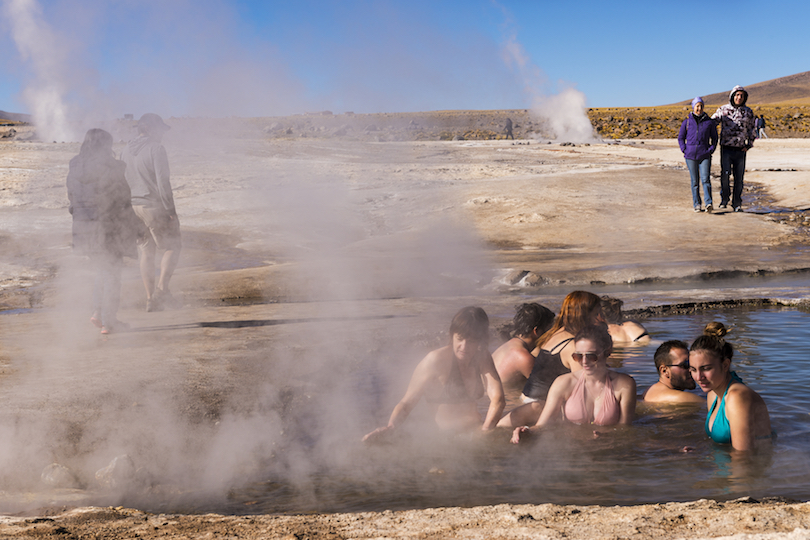
The geothermal fields at Geysers del Tatio is a bubbling hot spot located on the foot of several stratovolcanoes. As the largest geyser field in the Southern Hemisphere, Geysers del Tatio has over 60 different geysers and over 300 different hot springs. While most geyser fountains shoot up three to four feet, some can exceed heights of over 30-feet.
After a day of trekking through the volcanic fields, treat yourself to a relaxing soak in one of the springs. While some springs are too hot to even go near, there are a few that are ideal hot tub temperature.
4. Lauca National Park
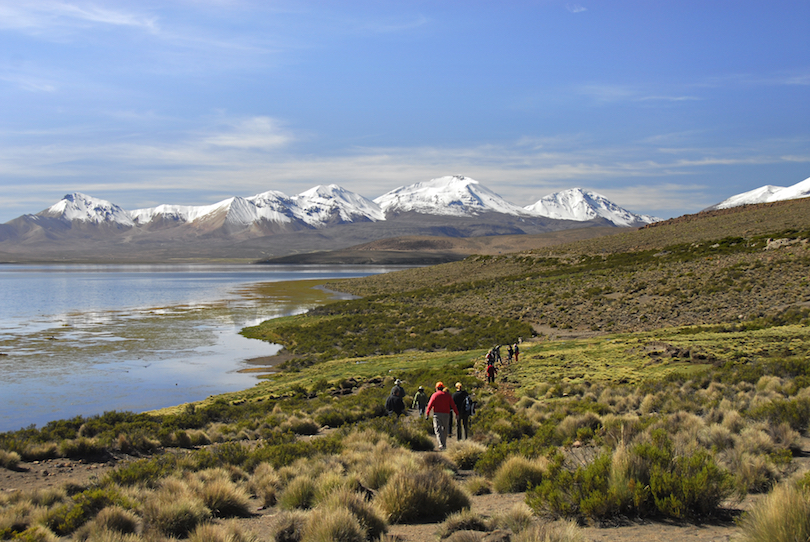
The uncultivated beauty of Lauca National Park is a worthwhile adventure for those visiting Chile. Located in the Andean Mountain range in the north, it continues to attract visitors looking to explore the diverse, rugged landscape of Chile’s outdoors.
Not only are you surrounded by snow-capped volcanos and cobalt blue lakes, but you’ll also get to view a diverse variety of wildlife. Alpacas, flamingos, and more than 130 different bird species roam around the sprawling Lauca National Park.
3. Valparaiso
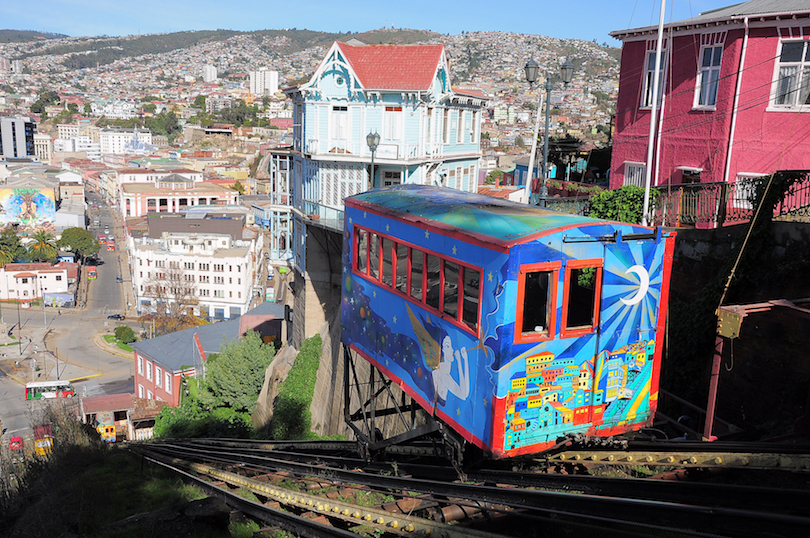
As one of Chile’s most picturesque towns, Valparaíso is affectionately known as the “Jewel of the Pacific.” This portside town is lined with brightly colored houses, boutique art galleries, and winding cobblestone streets.
Some of the country’s most influential sights can be found in Valparaíso, including the first library, the oldest Spanish language newspaper, and even the oldest stock exchange. Other attractions include the bustling Plaza Sotomayor and the famous museum of Pablo Neruda. You might also take a ride on the Artilleria funicular railway, which boasts dramatic views over the entire city.
2. Moai Stone Statues
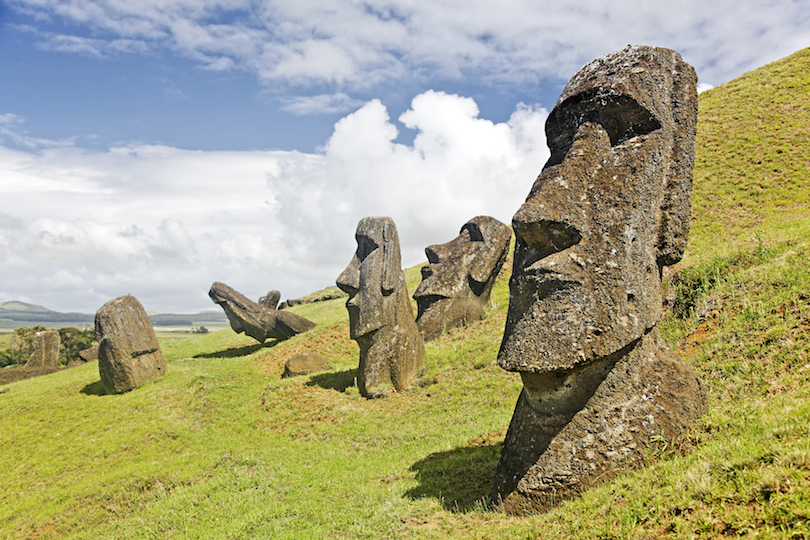
The Moai Stone Statues on Easter Island might be some of the world’s most recognizable figures. There are over 1,000 volcanic stone statues scattered all over the island, which were carved by the Rapa Nui people over 600 years ago. The torsos of some of the statues are partially underground, which means you can only see the heads poking out from the surface.
Although Easter Island is technically in Polynesia, the island was annexed to Chile in the late 1800s. It’s a six-hour flight from Santiago, which means it’s not the easiest (or cheapest) place to reach if you’re traveling through the mainland. But if you have the time and the means, it’s a worthwhile escape that you can tick off your bucket list.
1. Torres del Paine National Park
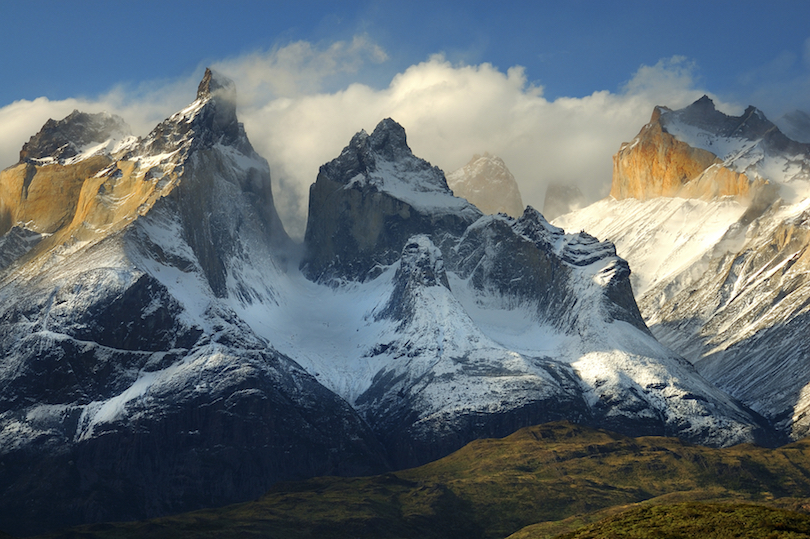
With crystal lakes, snow-capped mountains, and icy glaciers, it’s easy to see why Torres del Paine National Park is one of the most visited attractions in Chile. While you’ll need several weeks to explore everything the park has to offer, it’s worth picking out a few of its most notable sights to visit during your trip.
Trek through the thick forests of the Valley Frances, kayak across the sparkling blue waters of the Rio Serrano, or ice pick your way along the Grey Glacier. You can even just take a leisurely stroll through the trails while admiring the recognizable features of the park – the towering granite peaks of the Paine mountains.
Map of Things to Do in Chile
Share this post:
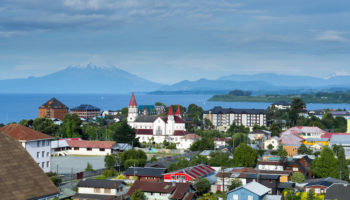
12 Most Charming Small Towns in Chile
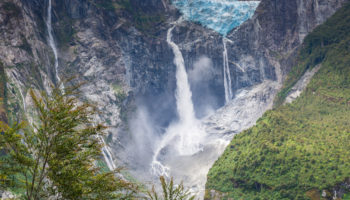
10 Most Beautiful National Parks in Chile
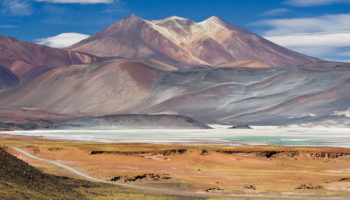
10 Best Places to Visit in Chile
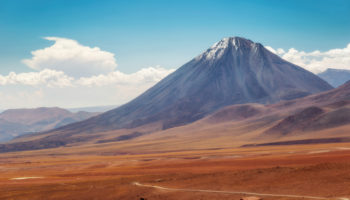
10 Most Amazing Volcanoes in Chile
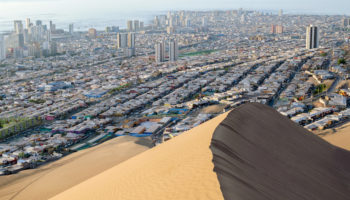
15 Best Cities to Visit in Chile
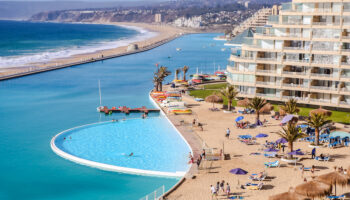
11 Most Awesome Places to Stay in Chile
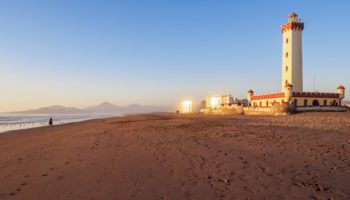
9 Most Beautiful Regions of Chile
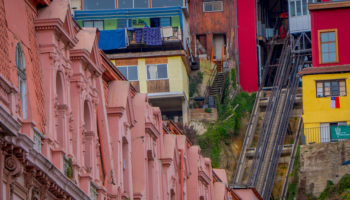
10 Best Things to do in Valparaiso, Chile
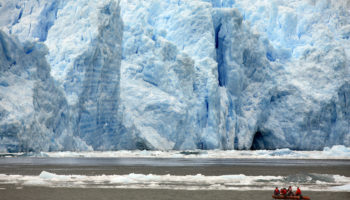
10 Best Places to visit in Aysen, Chile
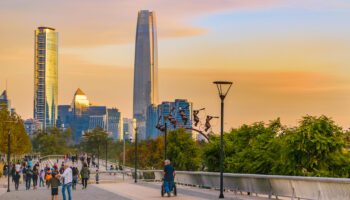
18 Best Things to Do in Santiago de Chile
Reader interactions.
October 18, 2019 at 4:28 am
I had never dreamt I would travel to the far end of the globe but thanks to my daughter n her husband I have fallen in love with Chile I have visited it almost 4 times in 2 years n visited the best places I am waiting to visit again
June 19, 2017 at 8:03 am
I like your top ten list, but you definitely forgot about La Serena’s beaches and the Elqui Valley. Especially the valley and the area around Pisco Elqui is a must-see on your trip to Chile. Not only the ideal place for stargazing, but also to connect to nature. I went for a horseback ride to Cochiguaz valley and it was incredible. Also the valley is home of pisco, Chile’s national drink!! Several small long-standing distilleries offer cheap (some even free) guided tours+tastings all year round. Don’t miss it.
May 14, 2015 at 9:00 am
It’s weird that there’s penguins in such a warn environment! Easter island look really pretty!
May 21, 2013 at 12:24 pm
Easter Island was a true highlight of my Chile trip!
May 6, 2013 at 5:10 am
I want to go there
Leave a Reply Cancel reply
Your email address will not be published. Required fields are marked *
This site uses Akismet to reduce spam. Learn how your comment data is processed .

Getty Images/Robert Harding World Imagery
Surprising, cosmopolitan, energetic, sophisticated and worldly, Santiago is a city of syncopated cultural currents, madhouse parties, expansive museums and top-flight restaurants. No wonder 40% of Chileans call the leafy capital city home.
Leave the planning to a local expert
Experience the real Santiago. Let a local expert handle the planning for you.
Attractions
Must-see attractions.

Centro Gabriela Mistral
This striking cultural and performing-arts center – named for Chilean poet Gabriela Mistral, the first Latin American woman to win the Nobel Prize in…

Cerro San Cristóbal
The best views over Santiago are from the peaks and viewpoints of the Parque Metropolitano, better known as Cerro San Cristóbal. At 722 hectares, the park…
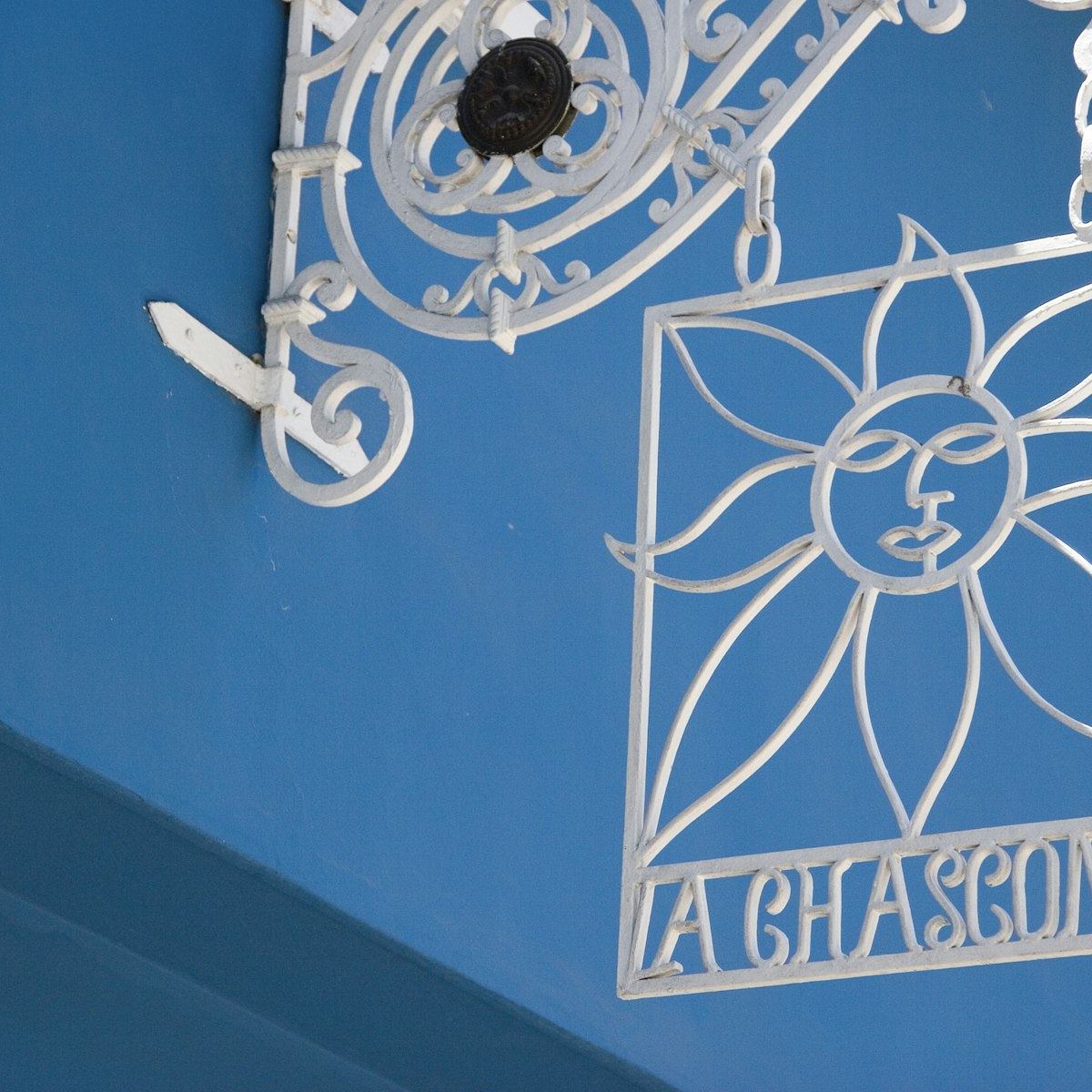
La Chascona
When poet Pablo Neruda needed a secret hideaway to spend time with his mistress Matilde Urrutia, he built La Chascona (loosely translated as 'Messy Hair')…

Museo de la Memoria y los Derechos Humanos
Opened in 2010, this striking museum isn't for the faint of heart: the exhibits expose the terrifying human rights violations and large-scale …

Museo Chileno de Arte Precolombino
Exquisite pottery from most major pre-Columbian cultures is the backbone of Santiago's best museum, the Museo Chileno de Arte Precolombino. As well as…

Museo Ralli
This little-visited museum on a quiet residential street in Vitacura boasts a stunning collection of contemporary Latin American art mixed in with…
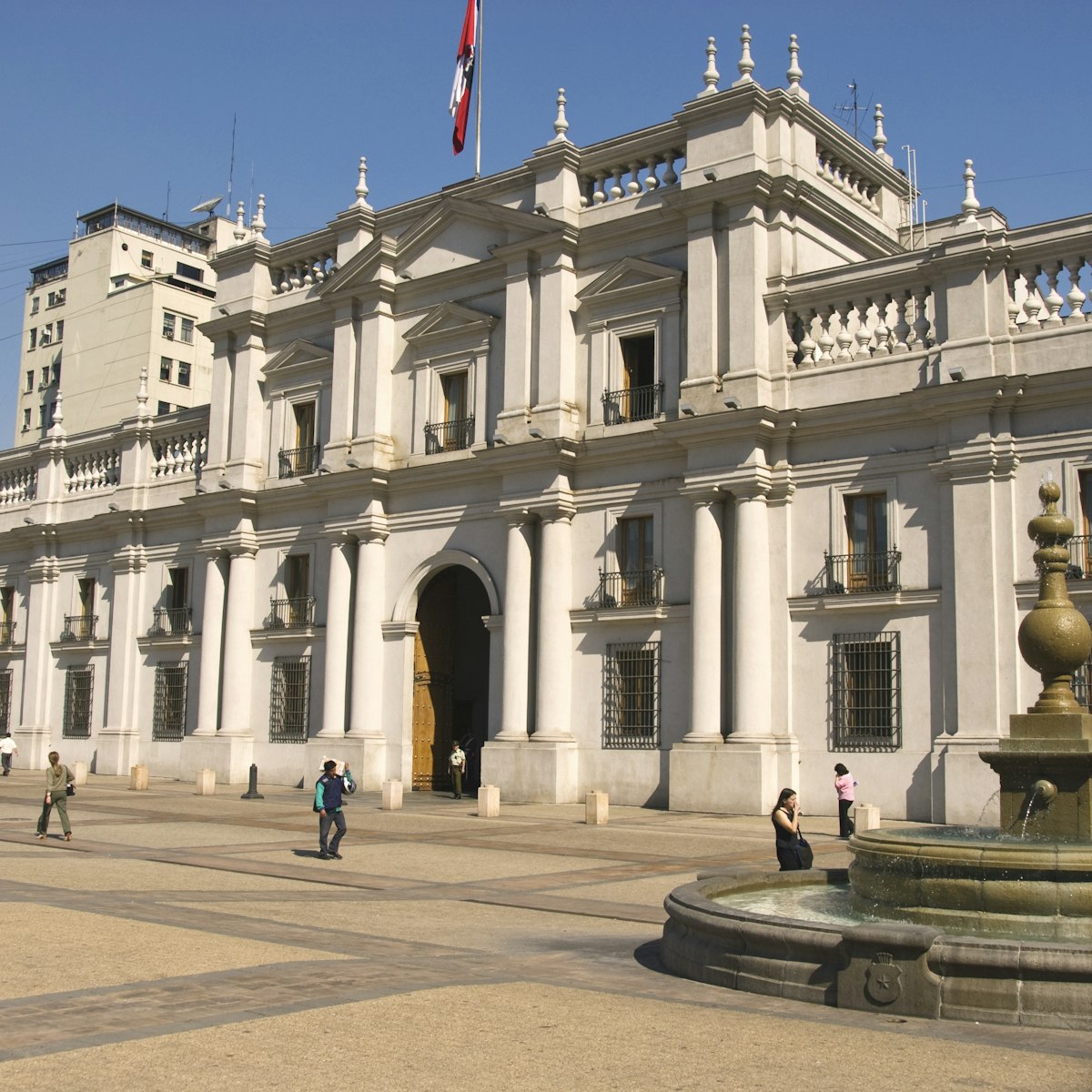
Palacio de la Moneda
Chile's presidential offices are in the Palacio de la Moneda. The ornate neoclassical building was designed by Italian architect Joaquín Toesca in the…
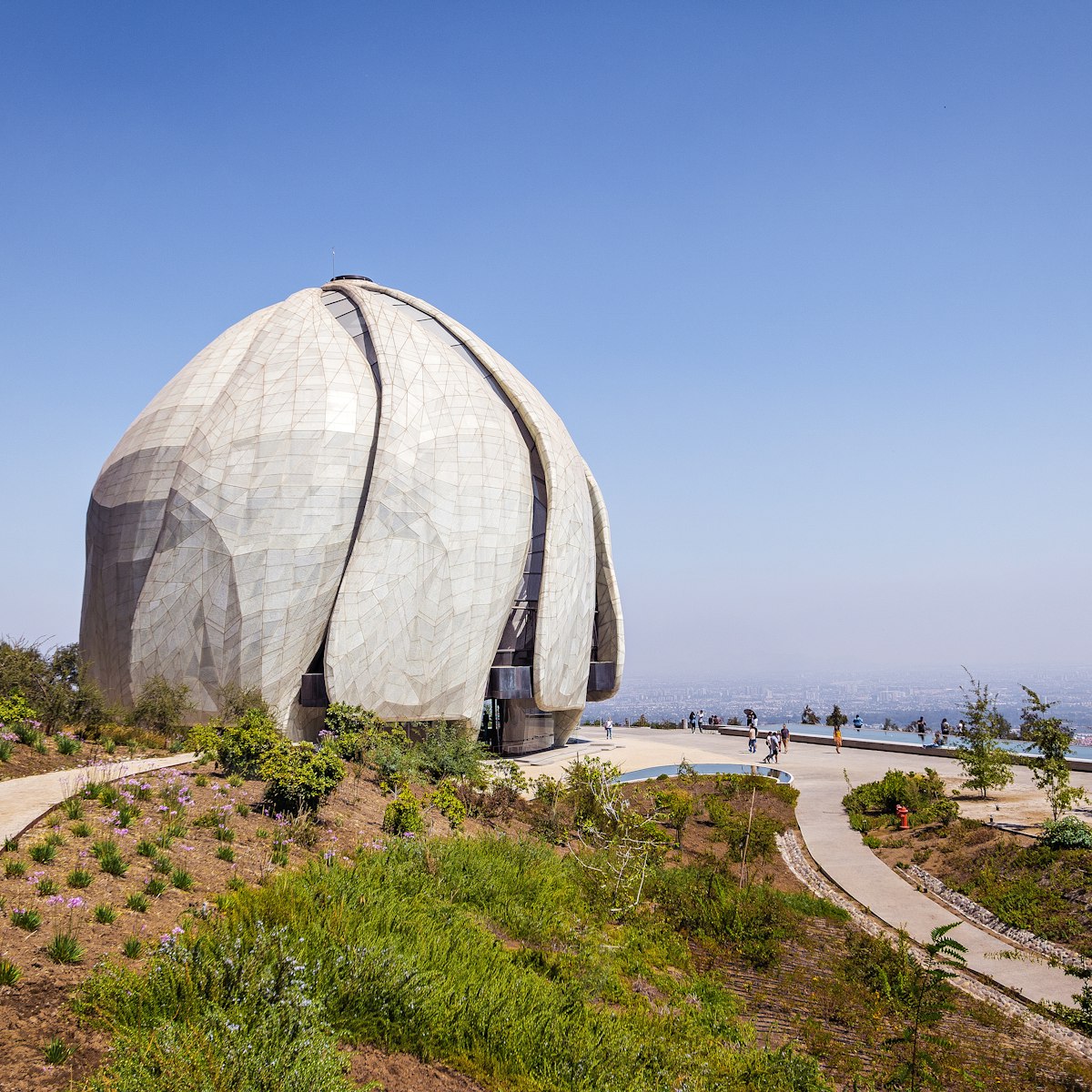
Templo Baha'i
This striking shell-shaped temple in the Andean foothills is a tranquil spot to relax – even for those who don't ascribe to the Baha'í faith – with an…
Plan with a local
Experience the real Chile
Let a local expert craft your dream trip.
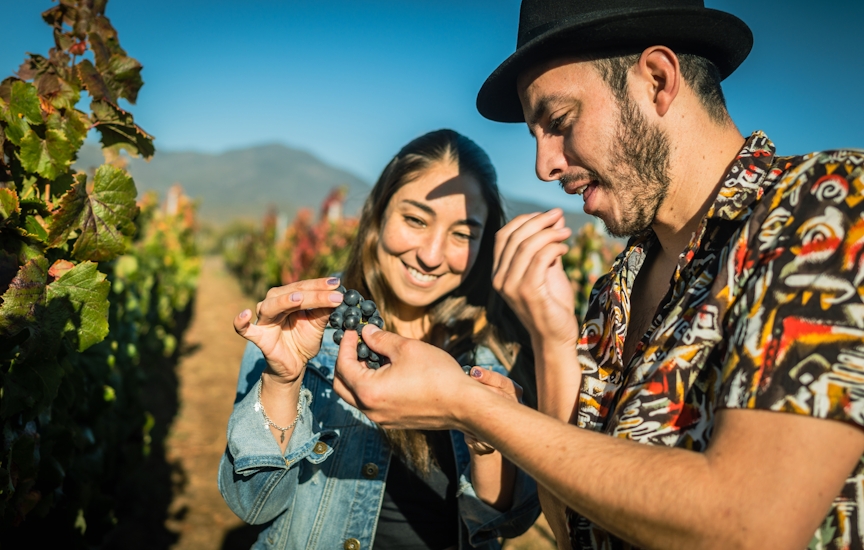
Latest stories from Santiago
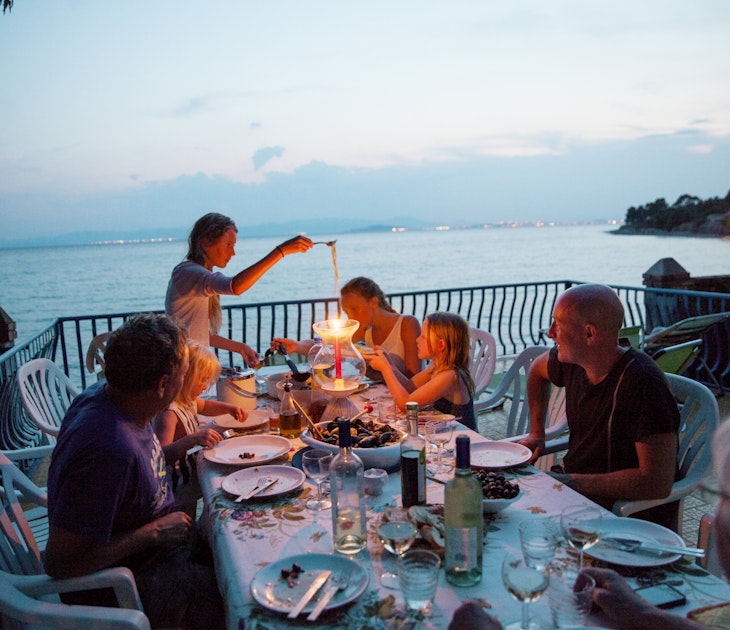
Tips & Advice
Jan 4, 2023 • 4 min read
If you're fed up with your hometown and find yourself fantasising about a fresh start, these places will pay you to relocate there.

Nov 14, 2019 • 1 min read
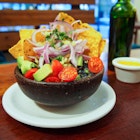
Jun 3, 2019 • 5 min read
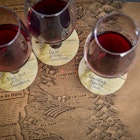
Feb 14, 2019 • 5 min read
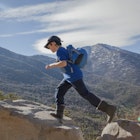
Feb 2, 2018 • 5 min read
in partnership with getyourguide
Book popular activities in Santiago
Purchase our award-winning guidebooks.
Get to the heart of Santiago with one of our in-depth, award-winning guidebooks, covering maps, itineraries, and expert guidance.
- +56 2 2570 8620
- Contact us!
LIVE THE ENERGY OF CHILE!
+ 100 destinations.
Our team of experts carefully selects each destination of our tours and experiences.
Best Quality Guaranteed
We are part of the largest and most recognized tourist Holding in Chile.
TOURS CHILE NORTH TO SOUTH
Torres del paine and puerto natales, san pedro de atacama, easter island, puerto varas and lakes, coyhaique and carretera austral, arica and iquique, punta arenas y tierra del fuego, popular tours.
- Actividades
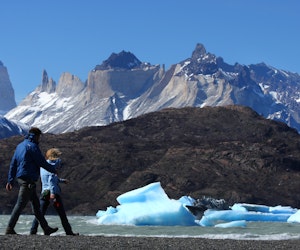
from USD $1.034
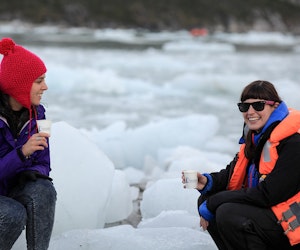
from USD $1.000
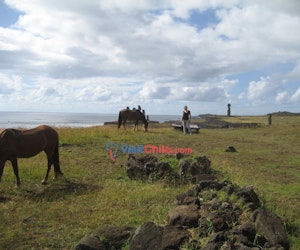
from USD $606
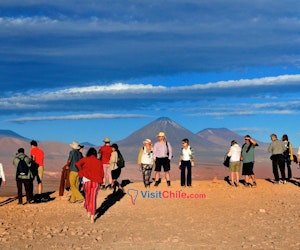
from USD $700
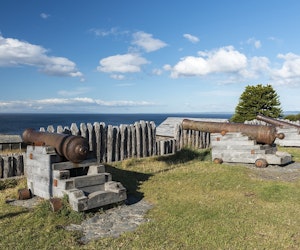
from USD $115
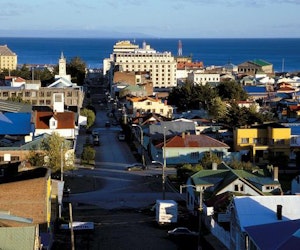
Customer Comments
I was apprehensive booking my itinerary following a cruise arriving in Chile, I booked your services from the UK There was never a need to worry, a nice driver in a good vehicle collected. 3 excursions were booked, again good drivers in nice cars arrived I can only compliment Visit Chile for providing quality service (at good prices)

I booked your services from the UK. Good drivers in nice cars arrived I can only compliment Visit Chile for providing quality service (at good prices)
I was apprehensive booking my itinerary following a cruise arriving in Chile, I booked your services from the UK There was never a need to worry, a nice driver in a good vehicle collected us in San Antonio, bringing us to Santiago where a nice hotel was arranged, 3 excursions were booked, again good drivers in nice cars arrived I can only compliment Visit Chile for providing quality service (at good prices)
Rosemary Bradley
Replys to emails were very prompt and efficient though. It was not really a tour as tour was done at concha y toro. Information and interaction from guide on the bus there would be helpful. I did the wine tour. Apart from a lift there I could not comment on quality of services. Driver and guide introdiced themselves and that was it. No specific complaints, but minimal service was provided on the actual tour.

Kris Dabkowski
Service provide by your agent was better than I could expected. In hotels: waiters should now a few English/international words e.g.: beer or ordering food some simple English/international terminology not only Spanish.

Marjorie Risinger
Our guide was wonderful and the excursion terrific.

Francis Peter
Damien and Paola was very professionnal and attentive and kindless and Katherin thé driver super!! Everything was réally fine thank you so much.

Nellie Knight
Cliff our guide was prompt, professional and knows Chile very well. He did an excellent job giving us a great sampling of Chile in a few hours. He knows all the great views. where good photos can be made. I will use your services again when in Chile.
Pamela Donaldson
Very satisfied with services provided. Our driver/guide arrived on schedule and was most helpful and informative. Thank you.
Keith Springer
Excellent service from both guide and driver.
teresa bunn
Jorge was a great guide, and ended up being our transportation to Vina the next day as well. On time and courteous and personable!
Jessica Austin
Daniela was very helpful in making arrangements. It is nice to have the name of a person when working with a large organization. I had a great experience on the Isla Negra trip I arranged through you.
Annika Leichtweiss
No complaints! Paola was extremely helpful and answered promptly any questions!
Kristina Scherbichler
Very informative tour, qualitative guide

Jean Pierre MOREL
We enjoyed your services and shall recommend you: It was well organized and had no trouble at all, our requests were fulfilled properly and professionally. Go on ! We wereon 1st time discovery. Next we may be more demanding. It was great.

Mary elacqua
The hotel offered other excursions and our options which were not present on your website we would have stayed another day go trip to hot springs /termas
Maria van Burik
The guides services were very good and all the transports etc. worked very well.Hotel Lady Florence Dixi: The staff could be friendlier! \r\nSuggestion: When a trip starts early in the morning, the hotel should be asked to provide either an early breakfast or give a packed breakfast. It is after all included in the price and is part of the tour. Really important!
Yolanda Liu
The tour I received was very good. It would have been better if the tour information I received would have told me to bring my bathing suit so I have an option to enjoy the hot spring at the Tatio Geyser.

Stephen Rickard
Great service to combine days trips with a quality hotel as a base. Highly recommend
Patrick Lehrman
Ata of AKU AKU Tours was very knowledgeable and an excellent guide. We were fortunate enough to have him on all three tours.
Get inspired by our video
New ideas, new experiences.

¡Top mejores playas de Chile para visitar en tus vacaciones 2!
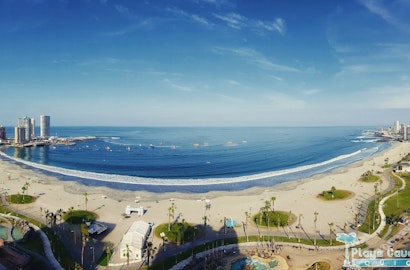
¡Top mejores playas de Chile para visitar en tus vacaciones!

¿Listo para descubrir la magia del sur de Chile? ¡Acompáñanos!
A Beginner's Guide to Chilean Patagonia

A vast region spanning 402,000 square miles that's shared between Argentina and Chile , Patagonia essentially constitutes the whole southern tip of South America and is naturally divided by the Andes, South America's mountainous backbone. Sparsely populated, just 10% of this remote and wild corner of the world is Chilean.
Three regions — Aysén, Magallanes and Chilean Antarctica, and Los Lagos plus the province of Palena — make up Chilean Patagonia, which attracts visitors for its exciting outdoor activities and seasonal wildlife spotting. Itching to plan a trip? Here's a primer on when and where to find the best hiking and wildlife sightings in Chilean Patagonia.
When to Go to Chilean Patagonia
Summer (January to March) and winter (June to August) are peak seasons. Chileans vacation in January and July as well as for the week of September 18, when they celebrate Fiestas Patrias (Independence Day).
Given that the most southerly point of Chilean Patagonia is just 900 miles from Antarctica, expect the unexpected on the weather front. While single-digit temperatures year-round are the norm in Punta Arenas — where you can experience snow and sun in an hour — the Chiloé archipelago in northern Patagonia enjoys a sunny summer with average 68 degree days, though it's very rainy June through August. Note: always be prepared with extra layers.
Depending on how much hiking you want to do, you should plan to spend between a week and ten days exploring Chilean Patagonia. Some hikes just around Torres del Paine can be three or five days, so it depends on the traveler and their desire for outdoor sports and activities.
There are accommodations to suit all budgets, from well-equipped log cabins to luxury lodges like the Singular , Rio Serrano and Awasi Patagonia , a member of Relais & Châteaux comprising a main lodge, a gourmet restaurant and a series of villas.

The Difference Between Chilean and Argentinian Patagonia
Where craggy beaches and inlets mainly make up Argentinian Patagonia's coastline, in Chile the Andes sink dramatically into the Pacific Ocean to create a unique geography formed by an extensive array of archipelagos, channels, and fjörds.
Stunning landscapes and native wildlife abound in this wilderness, and highlights worth exploring include Torres del Paine and Bernardo O'Higgins National Parks; the Chiloé archipelago, which is known for 150 wooden 18th-century Jesuit churches and timber houses; and the soon-to-be inaugurated Patagonia National Park . The region certainly packs a punch into its 40,200 square miles, and given that it's smaller than its neighbor, it's easy to cover more ground.
You an also expect great infrastructure in Chile. There are comfortable and frequent long distance buses and good roads for driving and renting a car.

Chilean Patagonia's New National Park
On April 30, Chile adds a fortieth national park to its portfolio, when Tompkins Conservation officially hands over Estancia Valle Chacabuco to CONAF, the country's national forest service, to create Patagonia N ational Park . Located in the Aysén region, this public-private venture unites donated land with already-established reserves, and this brand-new conservation area includes grasslands, mountains, coigüe forests and wetlands. Its creation also marks the first stop-off on the Patagonia Park Route, a scenic tour through 17 of Chile's national parks. Open October to April for hiking, mountain biking and bird watching, it's home to endangered species including puma, huemul deer and the Chilean flamingo.
Fly from Santiago to Balmaceda; it's a six- to eight-hour drive to the national park depending on road conditions. Visitors can stay at campgrounds or at the lodge within the park. Top summer temperatures are 57 degrees while average winter temperatures are 41 degrees.

What to Do in the Chiloé Archipelago
This Pacific archipelago is one of the most picturesque in South America thanks to both its natural structures and manmade architecture. Originally inhabited by Huilliche and Chono indigenous peoples, the island of Chiloé's main attraction is 150 timber-constructed churches and chapels built by Jesuits in the 18th and 19th centuries. It's also worth visiting the main town of Castro to see the palafitos, houses on stilts whose primary-color façades are particularly striking. Sixteen are UNESCO World Heritage sites; 14 churches are found on Isla Grande de Chiloé itself, including San Francisco, Achao and Chonchi. Also visit the Museo Regional in Castro to see Huilliche artifacts and farming tools.
Visitors can hike the pristine, evergreen, hilly forest at Chiloé National Park, where native flora and fauna such as penguins, marine otters and sea lions live together. There are several senderos (pathways) to walk such as La Playa, which takes you along the craggy Pacific coastline, and Chanquín, a 20-mile trail that mixes up coastline and forest.
Fly to Puerto Montt from Santiago then take a 35-minute ferry to Chacao on Isla Grande. The best weather is between October and April, though dry January makes it the busiest month for visitors.

What to Do in Torres del Paine National Park
Mountaineers and trekkers looking to conquer legendary peaks are in their element at Torres del Paine National Park . Located 70 miles from Puerto Natales, the park is home to the Southern Ice Fields' glaciers and icebergs; Mylodon Cave, where the remains of prehistoric Man was discovered; turquoise lakes such as Amarga Lagoon and Sarmiento Lake; as well as the daunting trio of granite peaks: the Central, South and North Towers of Paine. The most majestic mountain, Paine Grande, reaches a lofty 9,461 feet.
A UNESCO Biosphere Reserve and eighth wonder of the world since 2013, this protected area is also home to guanaco, fox, the elusive puma and the splendid Andean condor with its impressive three-meter wingspan. And due to its popularity, the Base Torres trail is due to be repaired soon. Visitors can organize excursions with in-the-know operators such as Chile Nativo and Cerro Paine .
Fly to Punta Arenas; Puerto Natales is a three-hour drive north, the park an additional 90 minutes. While visitors can book into one of 16 shelters, lodges and campsites located within the park, many head back to nearby Puerto Natales, a sheep ranch turned gateway town, for a more comfortable stay at the Singular , a former meatpacker turned luxury hotel. The park is open year-round: Low season is May to September, though trekking and walking is recommended in high season. While summer temperatures can reach 68 degrees, the omnipresent wind ensures an extra chill factor, and often reaches 70 mph.

What to Do in Punta Arenas
Located on the Strait of Magellan, this city sprang to life in 1843 thanks to the regional sheep farming boom, and is usually seen as a jump-off point for four-night small-ship Cape Horn expeditions, Antarctic missions and a way into Port Stanley in the Falkland Islands.
This wealthy settlement is worth spending some time in thanks to its proximity to the penguin sanctuary at Isla Magdalena and the Reserva Forestal Magallanes, which harbors native plant species such as coigüe and lenga trees and is ideal for hiking and spotting wildlife such as puma and grey fox. More than 120,000 Magellanic penguins flock to Isla Magdalena — a two-hour boat ride away — every October to acquaint themselves with their soulmate, before heading back out to sea in March.


IMAGES
VIDEO
COMMENTS
Tourism in Chile Where the impossible is possible. From the extreme north with the driest desert in the world to the austral south with eternal ice and inverted waterfalls, Chile is an invitation hard to refuse. Learn about tourism in Chile and be amazed by the experiences in the southernmost portion of the world.
Discover Chile's nature, culture and history with Lonely Planet's expert tips and advice. Find the best time and places to visit, attractions, activities, road trips, guidebooks and more.
Discover Chile's diverse natural and cultural attractions, from the Atacama desert and Easter Island to Santiago and Valparaíso. Find out what to do, where to stay and how to get there in this travel guide.
9. Barrio Lastarria. This bohemian neighborhood has plenty of shops, bookshops, design shops, museums, cinemas, theater, restaurants and bars, hotels and tourist appartments, and more. 10. Costanera Center. Costanera Center opened its doors in June of 2012 in Providencia, one of Santiago's most happening neighborhoods. With more than 197,000 ...
Discover the best places to visit in Chile, from the stunning landscapes of Patagonia and the Atacama Desert to the cultural wonders of Santiago and Easter Island. Learn about the history, culture, and nature of this diverse and fascinating South American country.
Information about Chile Travel destinations and tourism guide. Cultural, historical and touristic tips about Torres del Paine, Easter Island, San Pedro de Atacama, Santiago, Valparaiso, San Pedro de Atacama, and more.
Most tourist-fronting businesses have good English, as do younger Chileans residing in Santiago. Currency: The Chilean peso ($ CLP) is the official currency of Chile. Getting Around: Chile has an extensive infrastructure of increasingly low-cost flights that connect most cities across the country and, if booked in advance, are often ...
Towering over the adventure capital of Pucón, Volcán Villarica is the centerpiece of Parque Nacional Villarrica, one of the most popular parks in Chile…. Discover the best attractions in Chile including Parque Nacional Patagonia, Orongo Ceremonial Village, and Rano Raraku.
Full-Day Wine Tour from Santiago with Sommelier Guide. Inca Lagoon in Portillo Andes Mountains - Arqueologic Park & Wine Tasting from Santiago. Kayaking in Huerquehue National Park (sunrise / sunset) from Pucon. Astronomical Tour with Guide and Pick Up to San Pedro de Atacama.
Chile is a country located in South America. Santiago is the capital and it is a country known for its culture, natural wonders, and diversity. Our Chile travel guide is here to help you see the best it offers. Don't let the skinny strip of Chile on the map fool you into thinking there isn't much there.
Best places to visit in Chile. Atacama desert. Visit erupting geysers, crinkly salt plains and emerald lakes in the morning, and deep, mystical valleys by sunset in the driest desert on earth. Travel advice for Chile. From travel safety to visa requirements, discover the best tips for traveling to Chile.
4. Marvel at San Pedro de Atacama. Located in Chile's Norte Chico northern region, San Pedro de Atacama is one of Chile's hottest tourist towns. Literally. Sitting at 2,400 meters (7,874 feet), the ancient town is in the driest desert in the world (it reportedly hasn't seen rain since 1870).
To visit Chile, you only need to show your identification document (identification card or passport), and depending on your country of origin, your stamped visa. If you are a citizen of South America, the European Union, the United States and Canada, you do not need a tourist visa. However, some countries must pay a cash fee (reciprocity tax ...
Santiago. Santiago captivates with its assorted panoramas and its versatility. The Chilean capital fills with life all those that visit. Lose yourself in its streets to find original art galleries, innovative design stores and arts & crafts fairs, as well as restaurants, bars and coffee shops. And if you are a night owl, do not miss Barrio ...
With some 2,600 miles (4,300 kilometers) separating the southern tip of Patagonia from the northern border of Peru, Chile has a myriad of worthwhile attractions across a variety of geographical zones. Starting from the south, let's work our way north on a tour of Chile's 20 best tourist destinations.
7. Cerro San Cristobal. Dominating the Santiago skyline is Cerro San Cristobal, one of Chile's most recognizable natural landmarks. Named after St. Christopher, this tree-lined hill boasts some of the best views in the entire city. From the summit, you'll be able to look down on the bustling streets of Santiago.
Santiago. Chile, South America. Surprising, cosmopolitan, energetic, sophisticated and worldly, Santiago is a city of syncopated cultural currents, madhouse parties, expansive museums and top-flight restaurants. No wonder 40% of Chileans call the leafy capital city home.
Reservations for Chile Tours, Hotels, Travel Packages and tourism in Torres del Paine, Easter island, San Pedro de Atacama, Santiago, Valparaíso and much more +56 2 2570 8620; Contact us! ... We are part of the largest and most recognized tourist Holding in Chile. + 100 Destinations . Our team of experts carefully selects each destination of ...
Promotional videos on tourism in Chile and Easter Island of Sernatur.. Since the mid-1990s, tourism in Chile has become one of the main sources of income for the country, especially in its most extreme areas. In 2005, this sector grew by 13.6%, generating more than US$500 million, equivalent to 1.33% of the national GDP.. According to the World Tourism Organization (WTO), Chile was the eighth ...
Inicio. Travel to Chile Plan. Updated the day 17 January, 2024. Entry Requirements. Frequently asked questions. Check here the Travel to Chile Plan for all the information on the requirements and protocols to enter the country.
Summer (January to March) and winter (June to August) are peak seasons. Chileans vacation in January and July as well as for the week of September 18, when they celebrate Fiestas Patrias (Independence Day). Given that the most southerly point of Chilean Patagonia is just 900 miles from Antarctica, expect the unexpected on the weather front.
Visit San Pedro de Atacama and explore unique landscapes in the world. Salt flats, geysers and deep blue lagoons are part of the sites that will amaze you. Embark on a journey through the stars. Learn more about the stars and constellations at one of the many astronomical observatories in northern Chile. 17°C / 20°C.
Search in Chile Travel. Search. Tourism service [email protected] +56 2 27318337 +56 9 9458 0453 Home; Itineraries; Itineraries. Select the options, find the perfect itineraries for you, start your adventure! Where?